Women who broke barriers from the year you were born
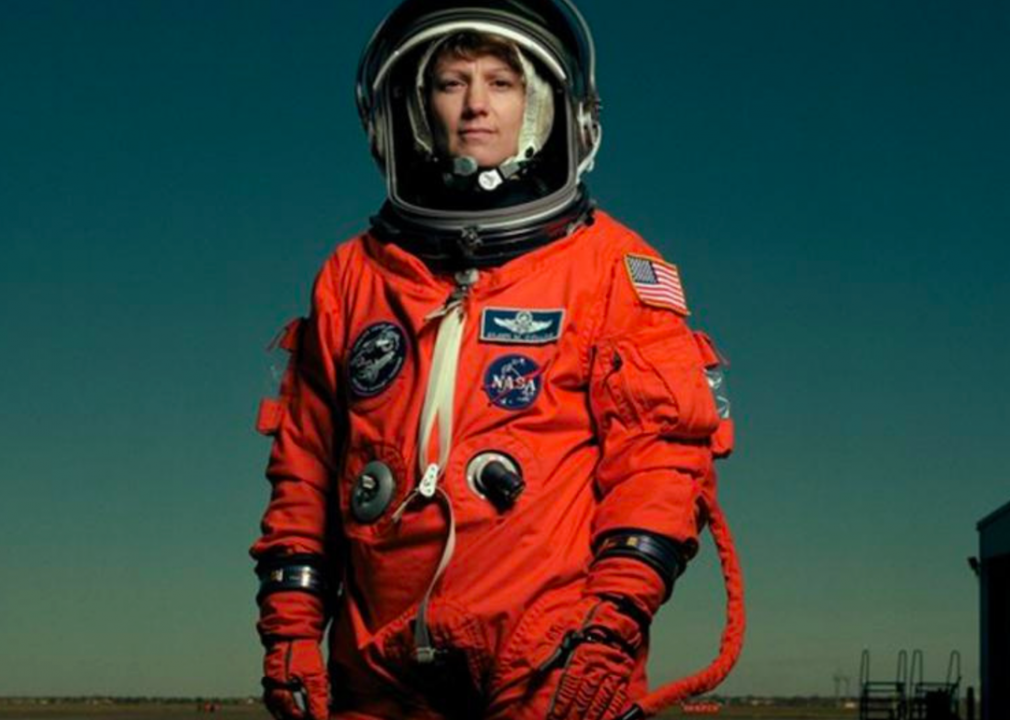
NASA on the Commons // Wikimedia Commons
Women who broke barriers from the year you were born
The 19th Amendment to the U.S. Constitution was ratified in 1920 to give women the right to vote. Since then, women have been elected to government roles in increasing numbers, culminating in 2021 with the first woman sworn in as vice president of the United States.
Politics isn’t the only field where women have broken through barriers, of course. In 1944, Ann Baumgartner Carl became the first female test pilot. In 1953, aviator Jacqueline Cochran was the first woman to break the sound barrier. And in 1999, Lt. Col. Eileen Collins became the first woman astronaut to pilot and command a NASA space shuttle mission. Women also have been appointed to the U.S. Supreme Court and directed big-budget, award-winning Hollywood films.
The term “glass ceiling” dates back to 1839 when French feminist author George Sand used a phrase translating to “impenetrable crystal vault” while discussing how it felt to be a woman desiring more than her expected social role. Since then, the term has been used to describe the invisible societal barrier that prevents women from achieving the same leadership positions, political offices, and pay rates as men.
Using data from news reports, historical governmental sites, and “Rad American Women A-Z,” by Kate Schatz, Stacker compiled a list of 100 trailblazing women who shattered glass ceilings, proving that fighting for a better society is not only worthwhile but possible. On this list are Pulitzer Prize-winning authors, entrepreneurs, accomplished attorneys, dedicated service members, and many more inspiring women.
Click through to see how many trailblazers you recognize from the past 100 years.
You might also like: Women who broke barriers throughout military history
![]()
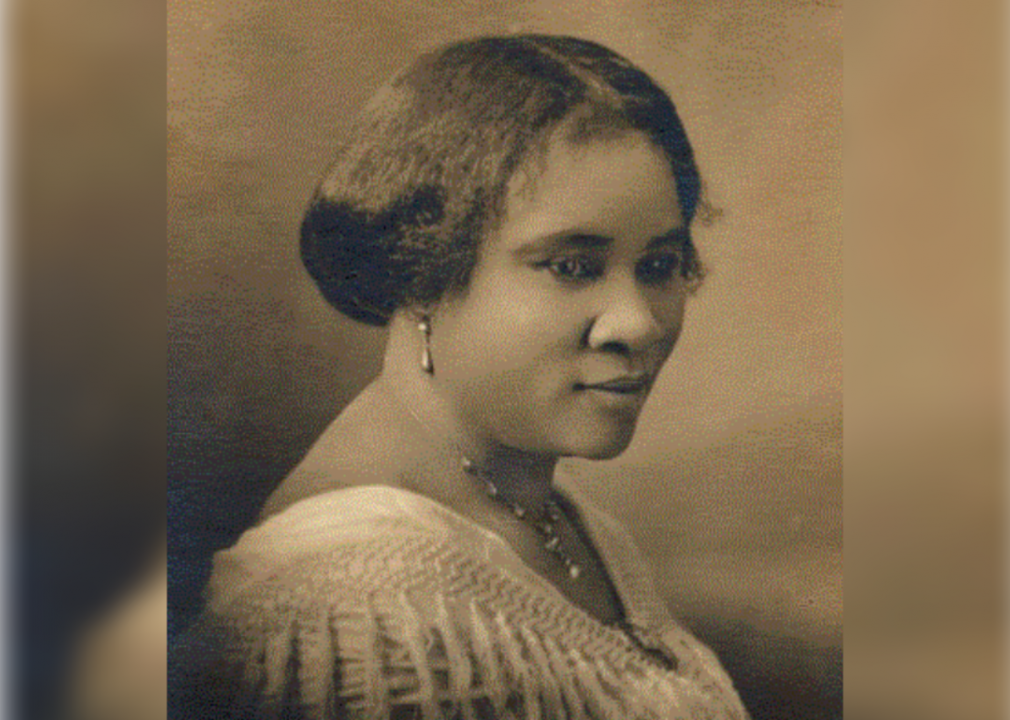
Exhibitors Herald // Wikimedia Commons
1919: Madam C.J. Walker becomes a millionaire
Madam C.J. Walker, born Sarah Breedlove, was reportedly was the first Black woman to become a millionaire on her own. She started selling hair-straightening products for Black women in 1906; by the time she died in 1919, her business was worth at least $1 million.
Also in 1919, actress Mary Pickford became the first woman to co-own a production studio. She co-founded United Artists with Charlie Chaplin, D.W. Griffith, and Douglas Fairbanks.
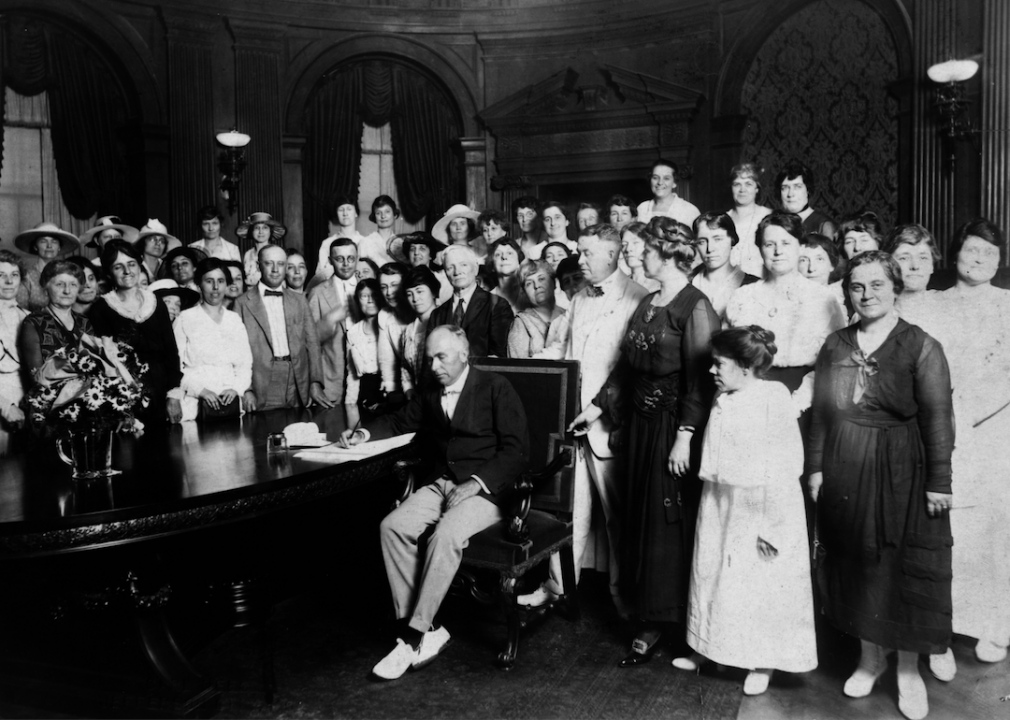
Carl Deeg/Library of Congress // Wikimedia Commons
1920: Marie Luhring becomes an automotive engineer
Marie Luhring in 1920 became the first woman in the United States to become an automotive engineer. She went on to become the first female truck designer. She worked with Mack Truck Co. and established herself as one of the best designers in the business.
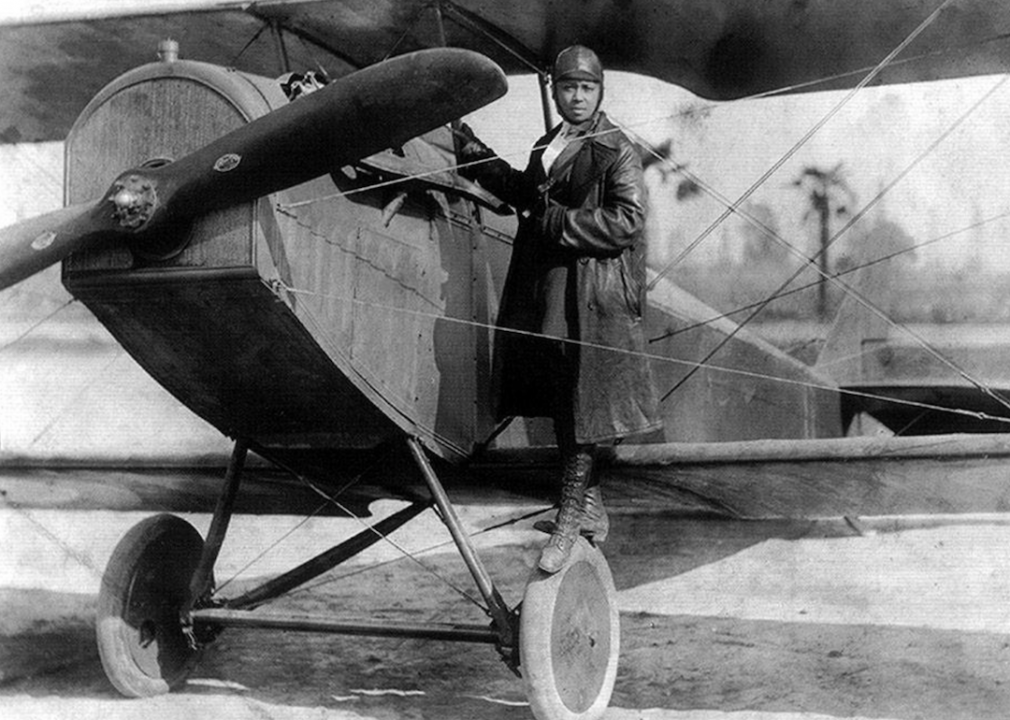
IIP Photo Archive // Flickr
1921: Bessie Coleman earns international pilot’s license
American aviator Bessie Coleman earned her international pilot’s license in 1921, the first Black woman to do so. Since U.S. flight schools wouldn’t teach women of color—she was also Native American—Coleman learned French and went to Europe to get her license. Known as “Queen Bessie,” she came back to the United States and performed daring stunts like spins, dives, and loop-the-loops.
Also in 1921, Edith Wharton became the first woman to win a Pulitzer Prize for literature for “The Age of Innocence.” There was a controversy around the prize not because Wharton was a woman, but because the Pulitzer jury had chosen another book: “Main Street,” by Sinclair Lewis. The Pulitzer board overturned the jury’s decision.
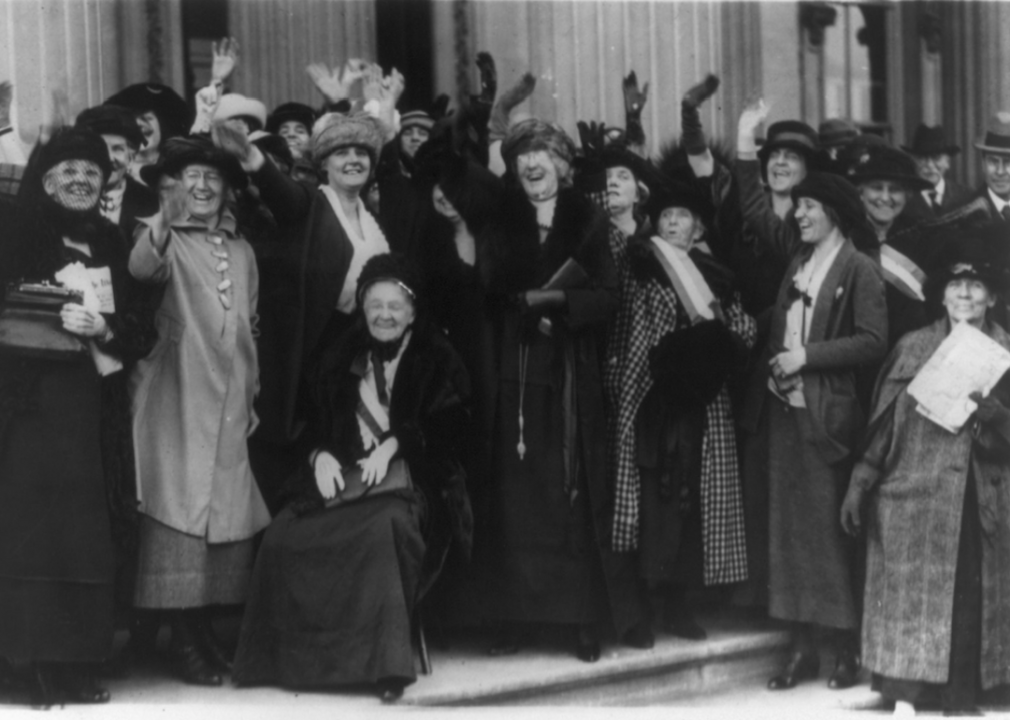
National Photo Company Collection/LOC // Wikimedia Commons
1922: Rebecca Latimer Felton appointed senator
In 1922, Georgia’s Democratic Gov. Thomas Hardwick—who had previously voted against women’s suffrage—planned to run for the Senate and wanted to appeal to women voters. He decided to appoint Rebecca Latimer Felton, 87, to a vacant seat. She held the position for only 24 hours before handing it over to the newly elected Walter George.
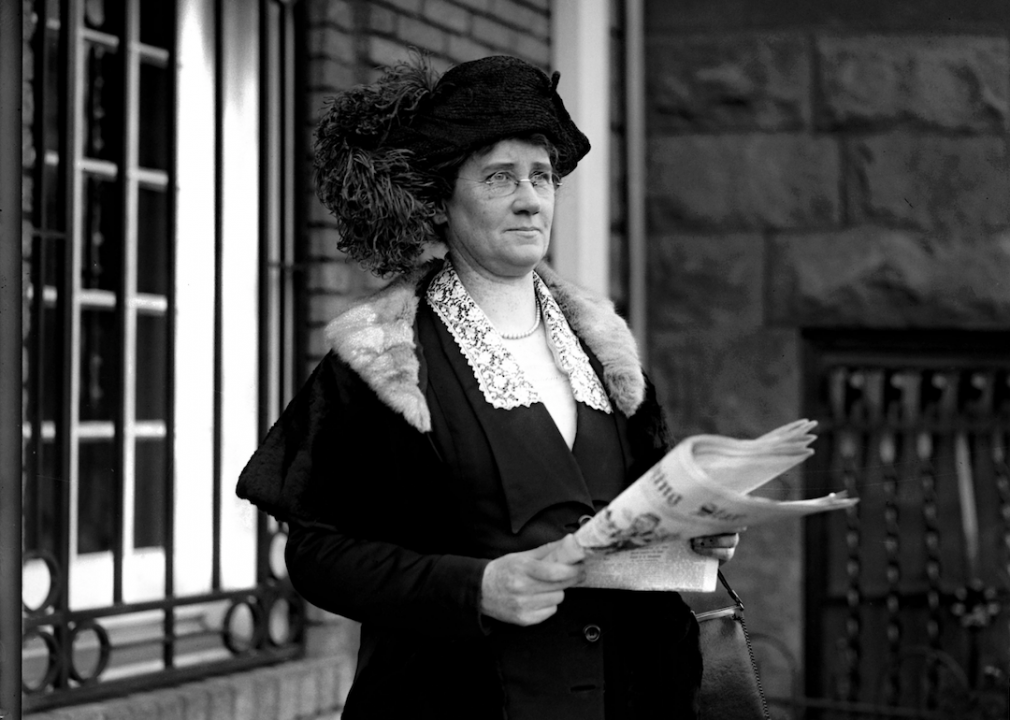
National Photo Company Collection/LOC // Wikimedia Commons
1923: Florence King wins US Supreme Court case
Florence King held many firsts: In 1897, she became the first female patent attorney; in 1918, she became the first female vice president of the Women’s Bar Association of Chicago; in 1922, she became the first woman to argue a patent case before the U.S. Supreme Court. A year later, she became the first woman to win a case before the high court, Crown vs. Nye. She died of breast cancer in 1924.
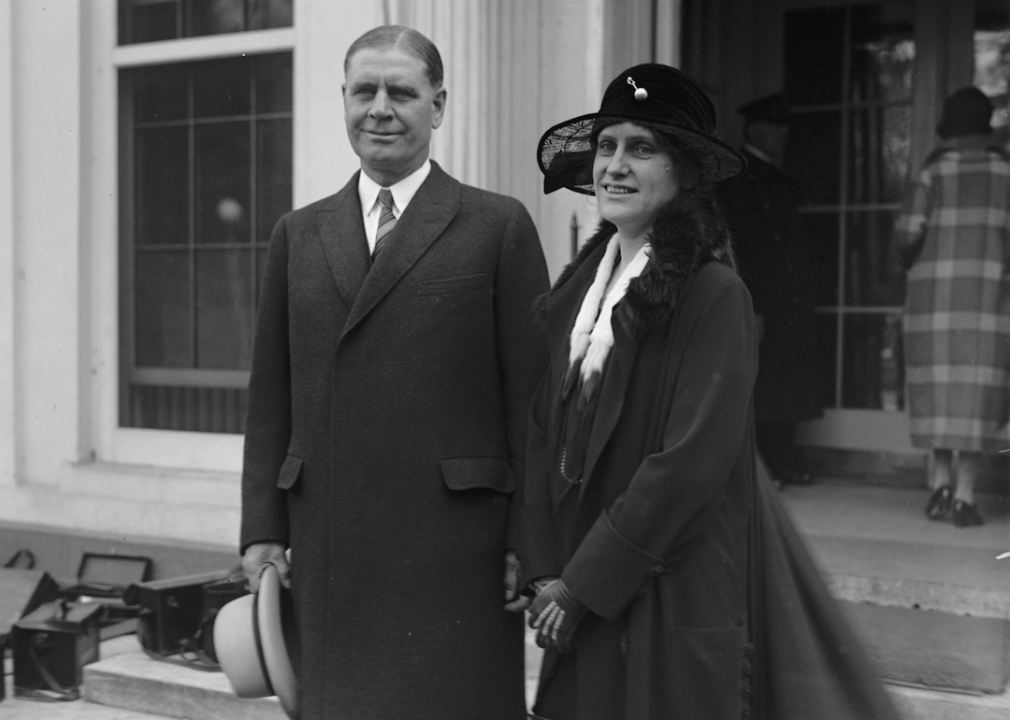
National Photo Company Collection/LOC // Wikimedia Commons
1924: Nellie Tayloe Ross elected governor
On Nov. 4, 1924, Nellie Tayloe Ross became the first woman elected governor in the United States when she was elected for the title in Wyoming. She got the most votes one month after her husband died of appendicitis, which left the position vacant. Ross was officially inaugurated in January the next year.
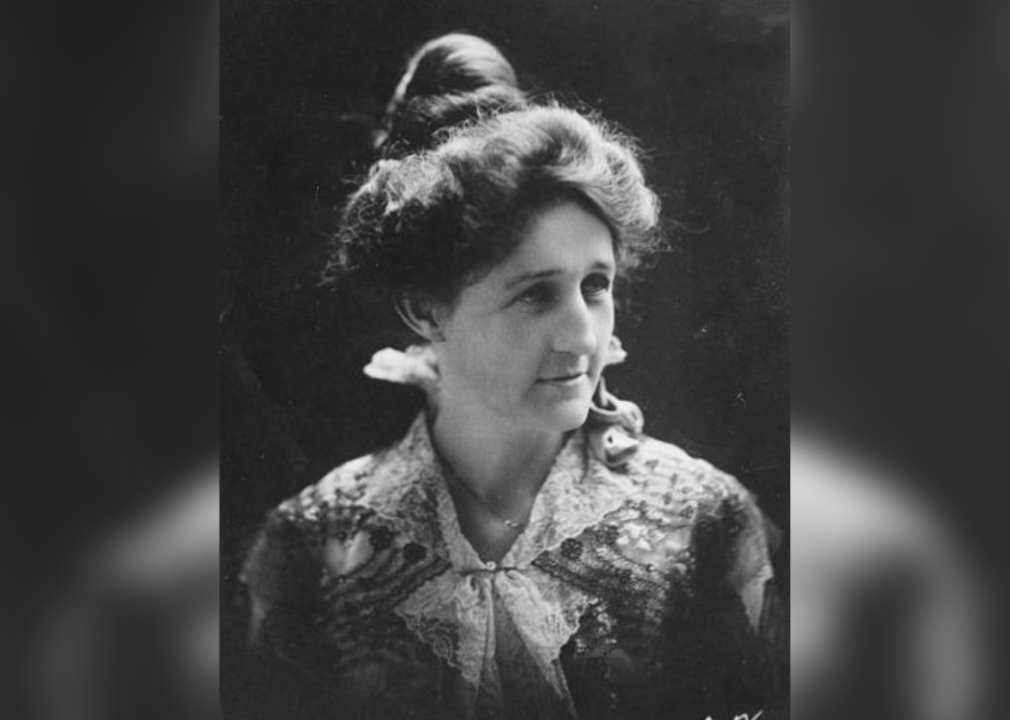
Bain News Service/LOC // Wikimedia Commons
1925: Miriam “Ma” Ferguson elected governor of Texas
Nellie Tayloe Ross beat out Miriam “Ma” Ferguson as the country’s first woman governor by a couple of weeks. Ferguson was sworn in as the first woman governor of Texas 15 days after Ross took office. Ferguson, a former Texas first lady, ran for the position after her husband was impeached, convicted, and removed from office as governor. Among other things, Ross expressed vocal opposition to the Ku Klux Klan.
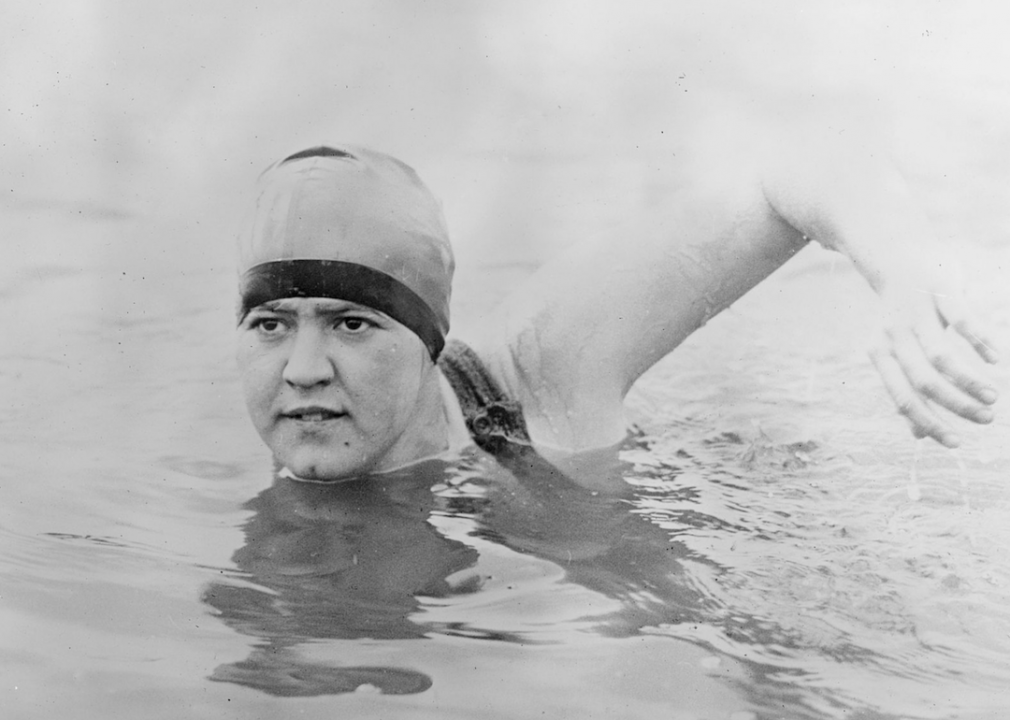
Bain News Service LOC // Wikimedia Commons
1926: Gertrude Ederle swims the English Channel
Covered in grease and wearing a two-piece swimsuit, Gertrude Ederle set out to become the first woman to swim the 21-mile-long English Channel on Aug. 6, 1926. At the time, people didn’t think it was physically possible for a woman to swim that far. Ederle proved them wrong and completed the feat—her second attempt—in 14 hours and 31 minutes, beating the previously held record by two hours. Two years earlier, Ederle nabbed a gold and two bronze medals in Paris at the Olympic Games.
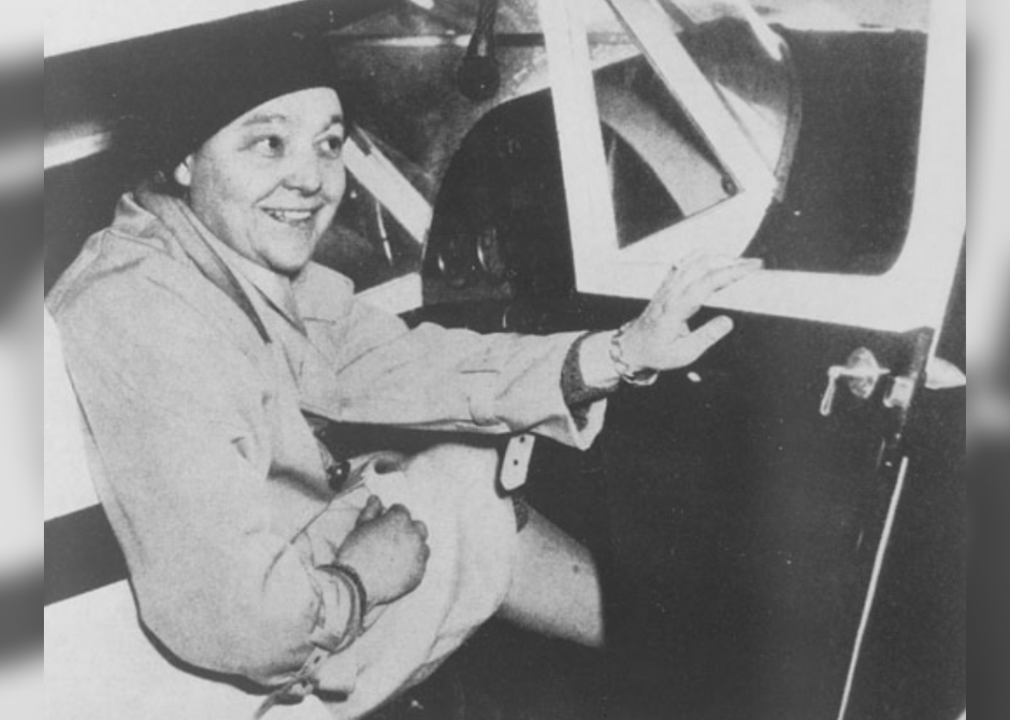
Smithsonian Institution // Flickr
1927: Phoebe Omlie earns her transport pilot license
In 1927, Phoebe Omlie, a contemporary of Amelia Earhart, became the first woman to get a transport pilot license and an airplane mechanic license. The next year she was the first woman to fly across the Rocky Mountains in a light aircraft.
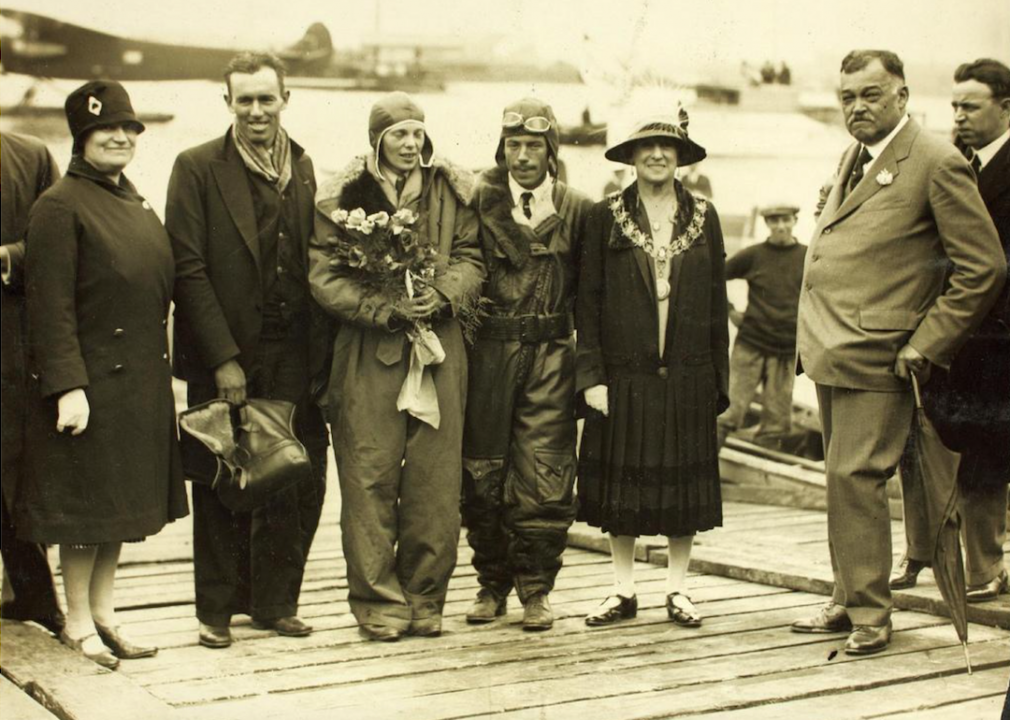
SDASM Archives // Flickr
1928: Amelia Earhart flies across the Atlantic
An aeronautic superstar, Amelia Earhart on June 17, 1928, became the first woman to fly across the Atlantic Ocean. Along with two other pilots, Earhart traveled from Canada to England. President Calvin Coolidge nicknamed Earhart “Lady Lindy” after fellow American pilot Charles Lindbergh.
Another 1928 first: Genevieve R. Cline was the first woman appointed as a judge to the U.S. Customs Court.
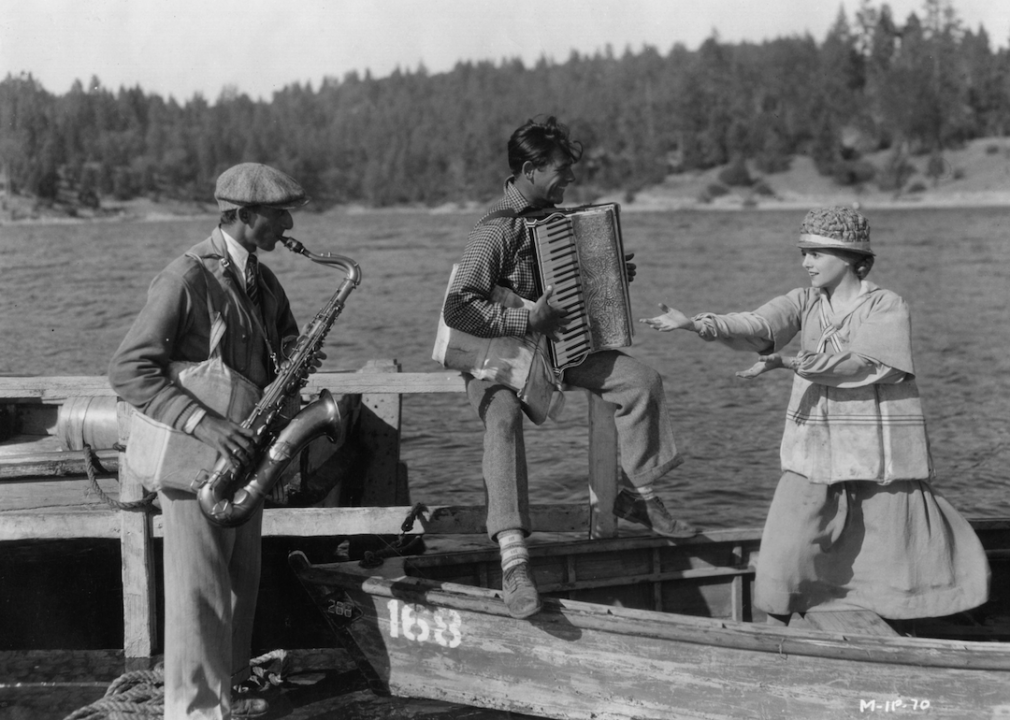
Hulton Archive // Getty Images
1929: Janet Gaynor wins an Oscar
Hollywood held the inaugural Academy Awards on May 16, 1929. Janet Gaynor was the first woman to win an Academy Award for Best Actress. By 1934, she was the highest-paid actress in Hollywood.
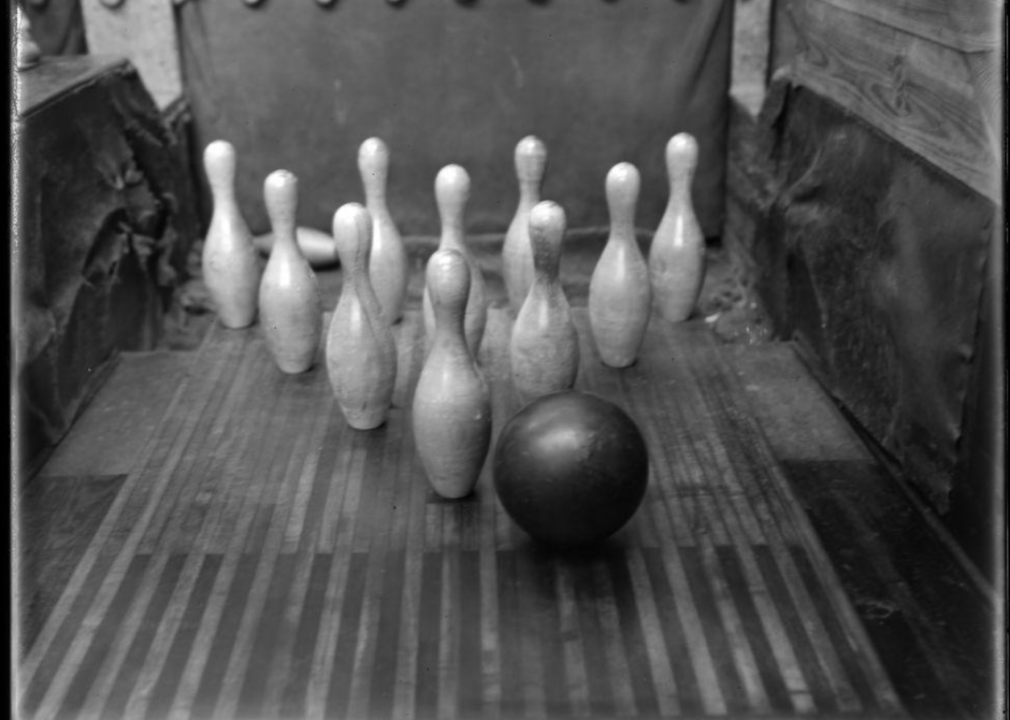
William van der Weyde // Wikimedia Commons
1930: Emma Fahning bowls a perfect score
Emma Fahning became the first woman to bowl a perfect 300 in a sanctioned game. She earned the score for the Germain Cleaning Team in Buffalo, New York.
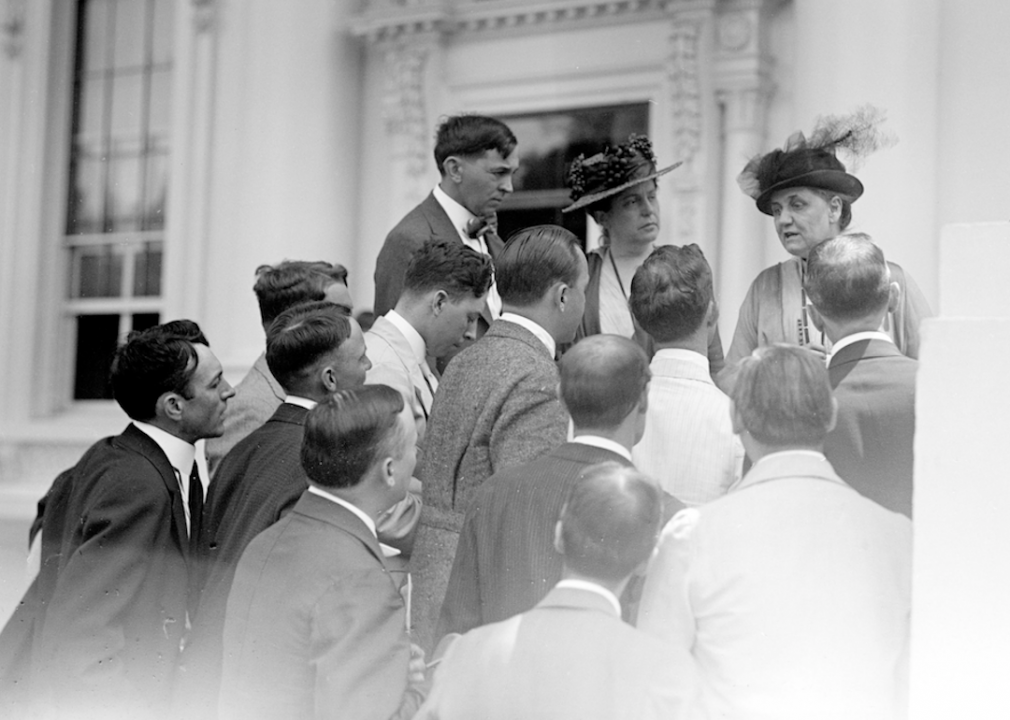
Library of Congress // Wikimedia Commons
1931: Jane Addams wins Nobel Peace Prize
Jane Addams, a college-educated “New Woman,” was the first American woman to win the Nobel Peace Prize; she shared it with Nicholas Murray Butler. Addams, who cared for the less fortunate and promoted women’s suffrage, in 1919 helped to found the Women’s International League for Peace and Freedom.
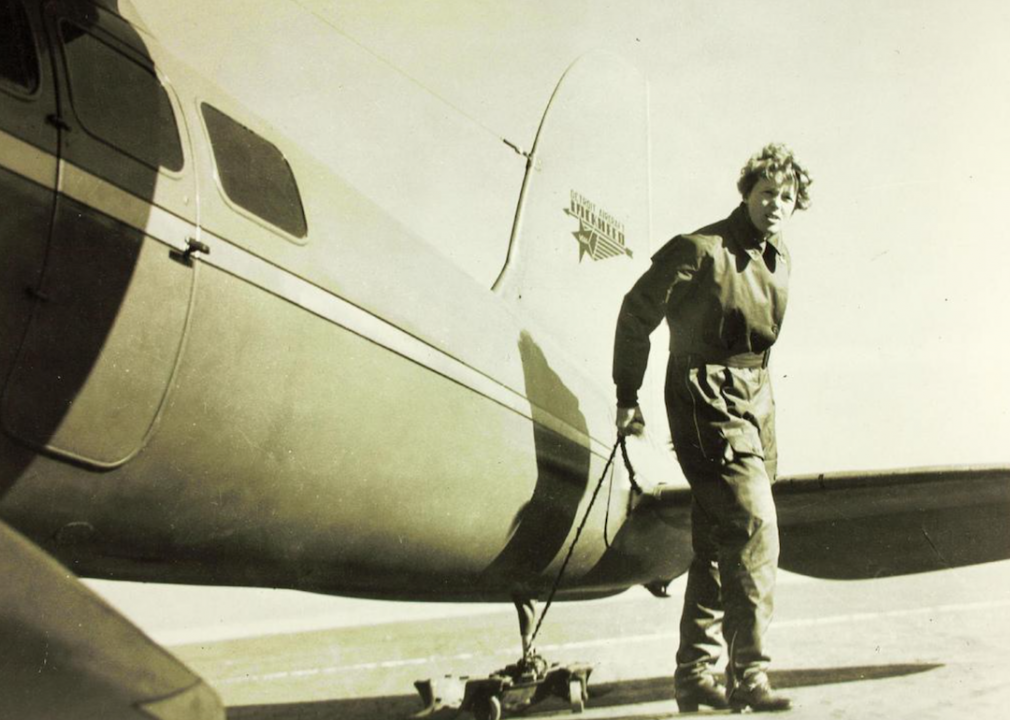
SDASM Archives // Flickr
1932: Earhart flies solo across the Atlantic
On May 20, 1932, Amelia Earhart piloted her red Lockheed Vega across the Atlantic Ocean, making her the first woman—and only the second person since Charles Lindbergh—to make the nonstop flight alone. Earhart flew 15 hours from Canada to Northern Ireland. She also became the first woman to be vice president of the National Aeronautic Association, convincing the organization to establish separate female records because women didn’t have equal time and money to put toward flying, which made it unfair to have them compete against men. She also made a line of functional clothing for women, some of which she sewed and modeled herself.
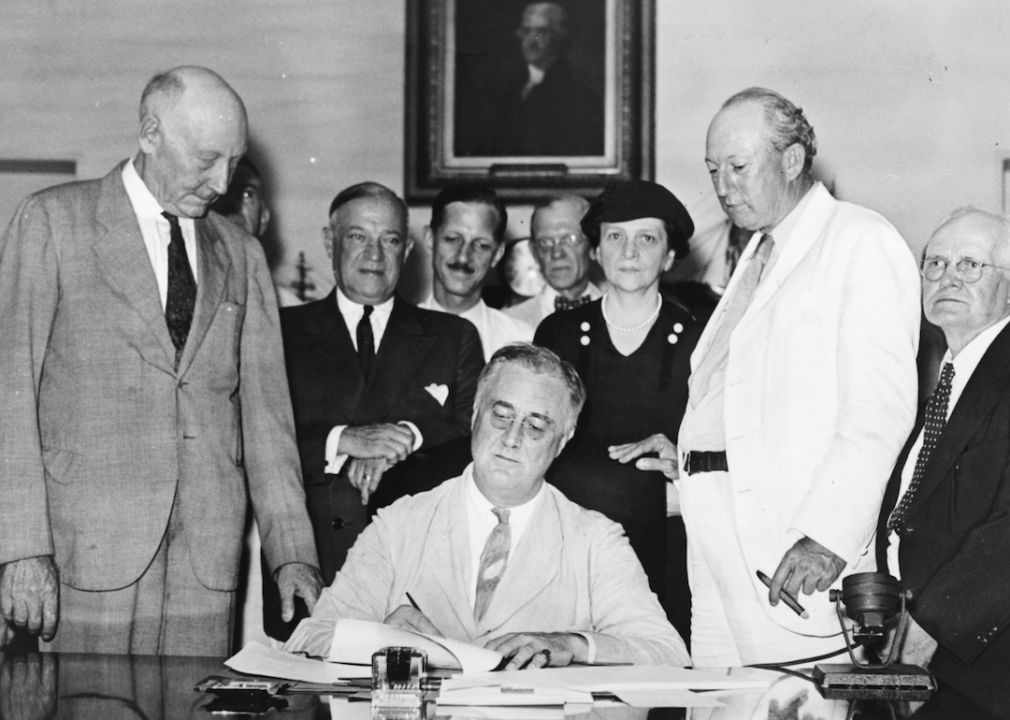
Social Security Online // Wikimedia Commons
1933: Frances Perkins appointed to presidential cabinet
President Franklin D. Roosevelt chose Frances Perkins as secretary of labor, the first woman to be appointed to a Cabinet position. Perkins was vital to the planning and creation of the New Deal, which helped pull the country out of the Great Depression. She outlined policies including the 40-hour workweek, minimum wage, Social Security, and unemployment payments. She also helped ban child labor.

Max Veers // Wikimedia Commons
1934: Coca-Cola brings Lettie Pate Whitehead as director
Coca-Cola Co. appointed Lettie Pate Whitehead (Evans) to its board of directors in 1934, making her the first woman to hold a director position at the corporation. Her husband, Joseph B. Whitehead, who was one of the original bottlers of Coca-Cola, died at an early age. During her life, Whitehead Evans donated millions of dollars to academic, arts, and medical organizations. In 1945, she created the Lettie Pate Evans Foundation.
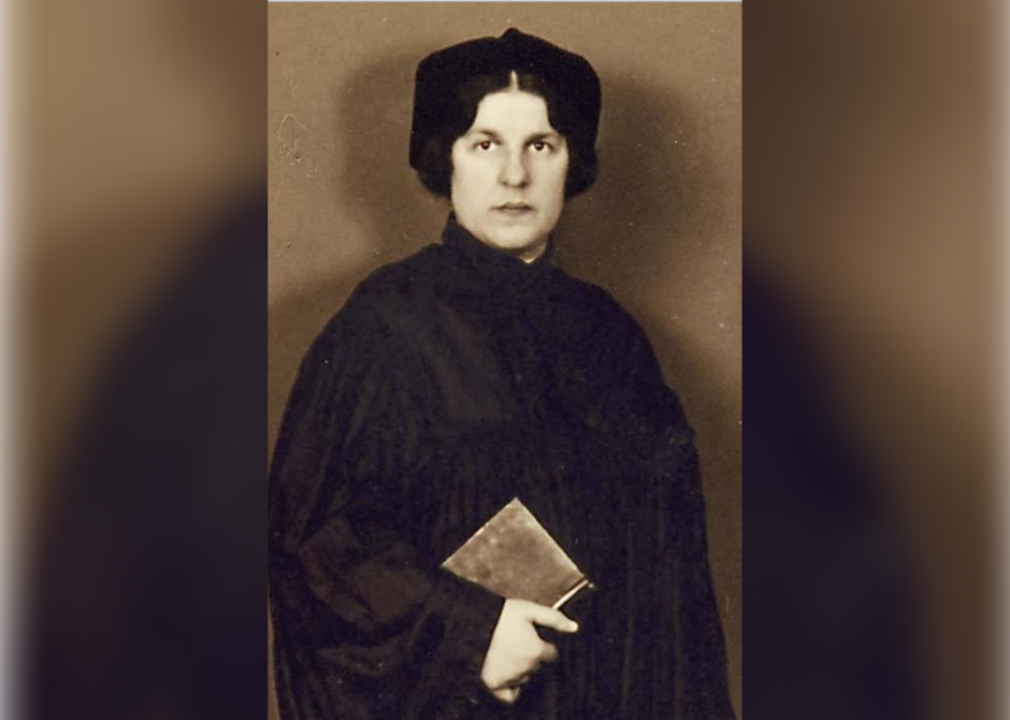
Centrum Judaicum Archives // Wikimedia Commons
1935: Regina Jonas ordained as rabbi
In Germany in 1935, Regina Jonas became the first woman in the world ordained as a rabbi. While she went to school with other women, she was at the time the only female to pursue the rabbinical track and wrote her dissertation specifically on why women should be rabbis. She was ordained by Germany’s Liberal Rabbis’ Association, but the country’s Orthodox rabbinate did not officially recognize her status. She died at Auschwitz a decade later.
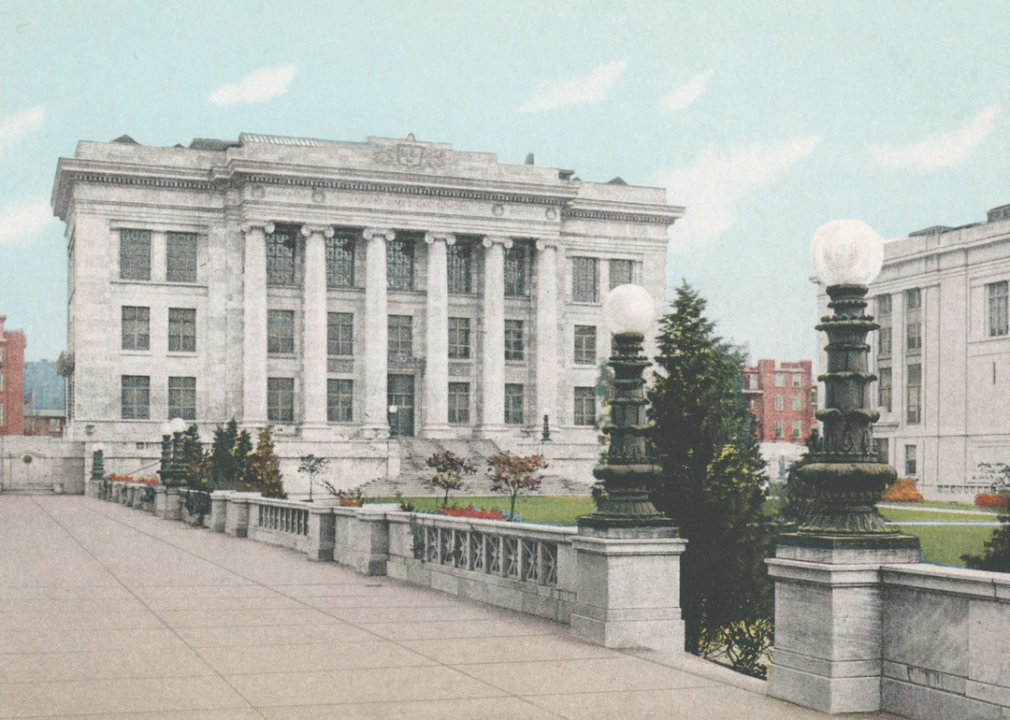
Detroit Publishing Company/LOC // Wikimedia Commons
1936: Harvard Medical School accepts Fe del Mundo
Fe del Mundo received a scholarship from Philippine President Manuel Quezon, which granted her entry to any school in the United States. Del Mundo applied to Harvard Medical School, even though it wasn’t accepting female students. In 1936, she became the first woman accepted, although Harvard hadn’t originally realized they’d accepted a female and assigned her to a male dorm. Del Mundo became the first female president of the Philippine Pediatric Society and the first woman to be elected president of the Philippine Medical Association.

Theedster123 // Wikimedia Commons
1937: Grace Hudowalski climbs the Adirondacks
In 1937, the 31-year-old Grace Hudowalski became the first woman to hike to the top of all 46 High Peaks in the Adirondack Mountains. Before her, eight men had accomplished the feat. Hudowalski started the Adirondack Forty-Sixers. In 2014, the highest peak was named after the skilled climber: Grace Peak.
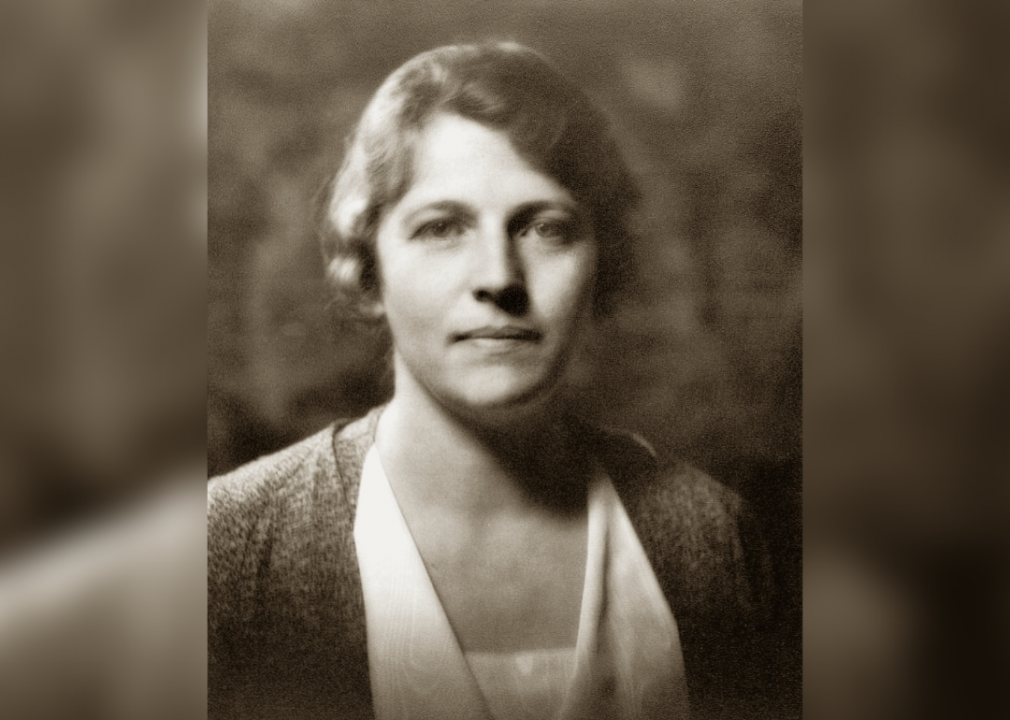
Arnold Genthe/Library of Congress // Wikimedia Commons
1938: Pearl S. Buck wins Nobel Prize in Literature
Author Pearl S. Buck won the Nobel Prize for Literature in 1938, the first woman to win the award. Buck was a staunch advocate of civil and women’s rights. She wrote against racism and discrimination, with her work regularly appearing in the National Association for the Advancement of Colored People’s Crisis magazine and the National Urban League’s Opportunity.
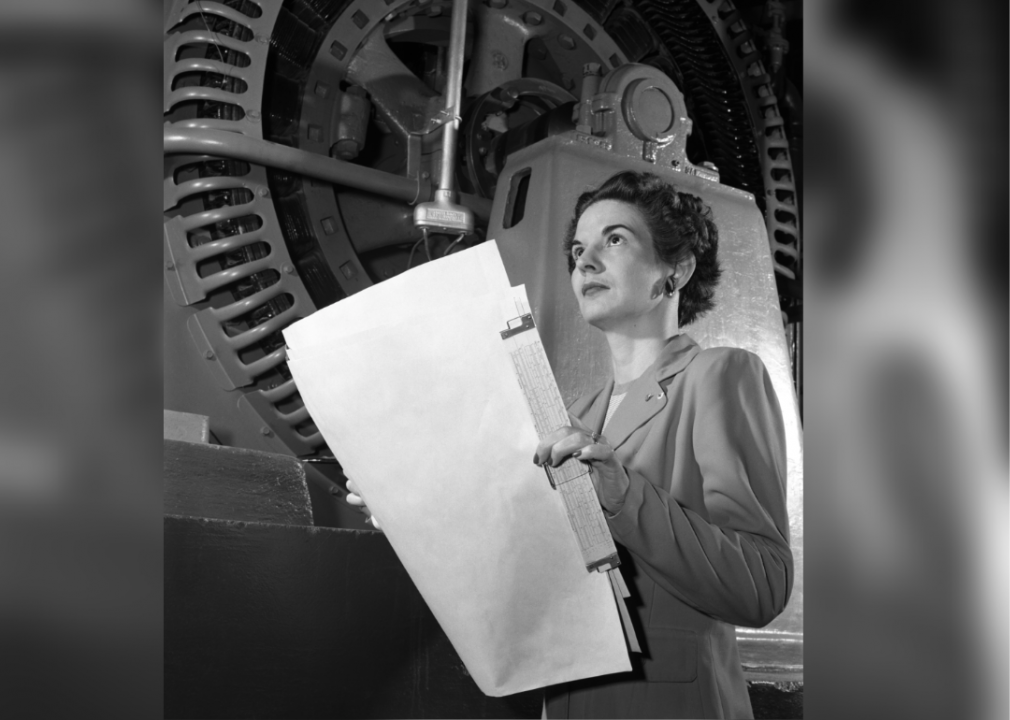
NACA // Wikimedia Commons
1939: Kitty O’Brien Joyner becomes NACA’s first woman engineer
In September 1939, Kitty O’Brien Joyner became the first woman engineer at the National Advisory Committee for Aeronautics (later renamed NASA) Memorial Langley Aeronautical Laboratory. She was also the first female to graduate from the University of Virginia’s Engineering Program when she gained admission after filing a lawsuit against UVA for only having men in their engineering school.
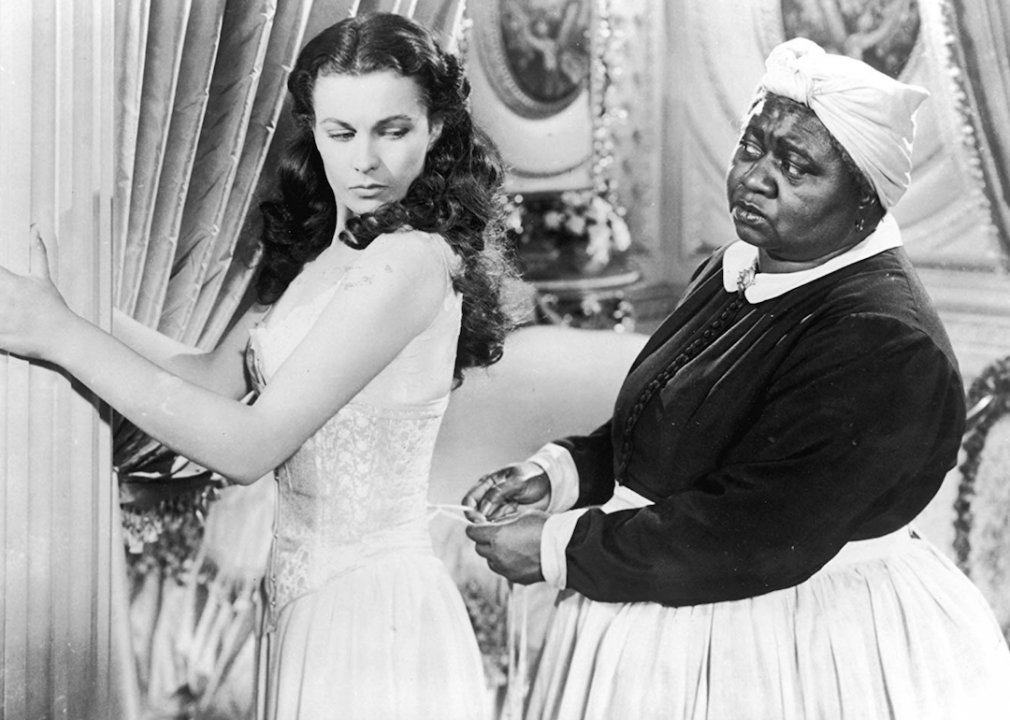
Metro-Goldwyn-Mayer (MGM)
1940: Hattie McDaniel earns an Oscar
Hattie McDaniel became the first Black woman—and first Black person awarded an Oscar—when she won the Academy Award for Best Supporting Actress for her role as Mammy in “Gone with the Wind.” McDaniel had to accept the award at a segregated hotel that she could only attend because producer David O. Selznick called in a favor. It took 51 years for another Black actress to take home an Oscar. Whoopi Goldberg won Best Supporting Actress in 1991 for her role in “Ghost.”
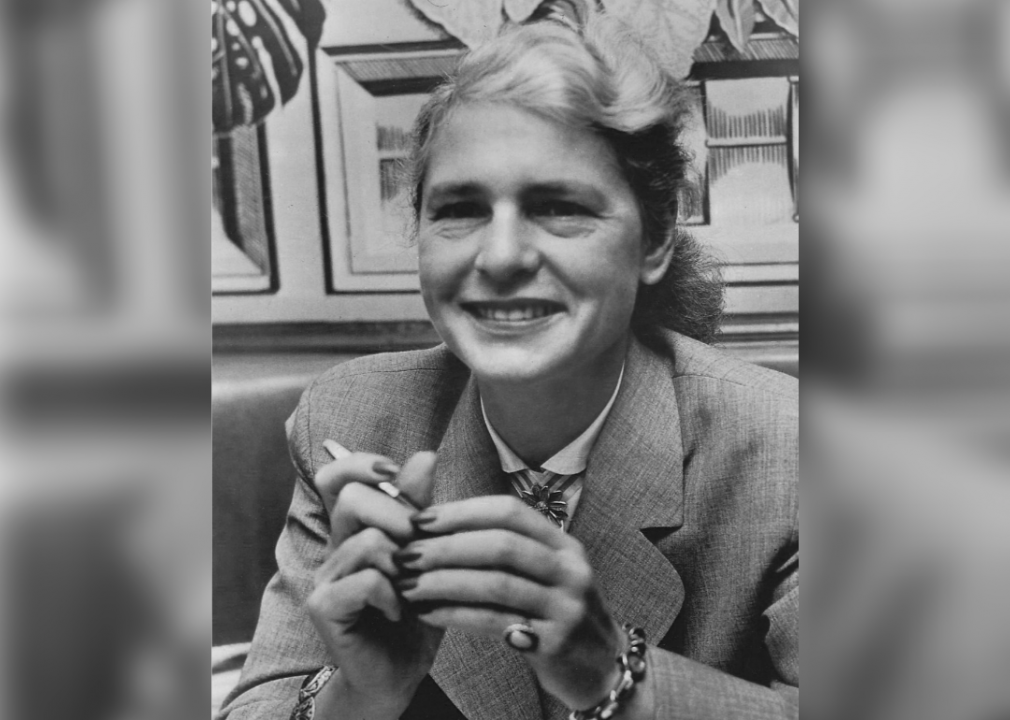
Bureau of Industrial Service // Wikimedia Commons
1941: War photographer Margaret Bourke-White is deployed
In 1941, Margaret Bourke-White took her camera to conflict zones and became the first female war photographer. She worked for both Life Magazine and the U.S. Air Force and survived a torpedo attack while on a ship to North Africa.
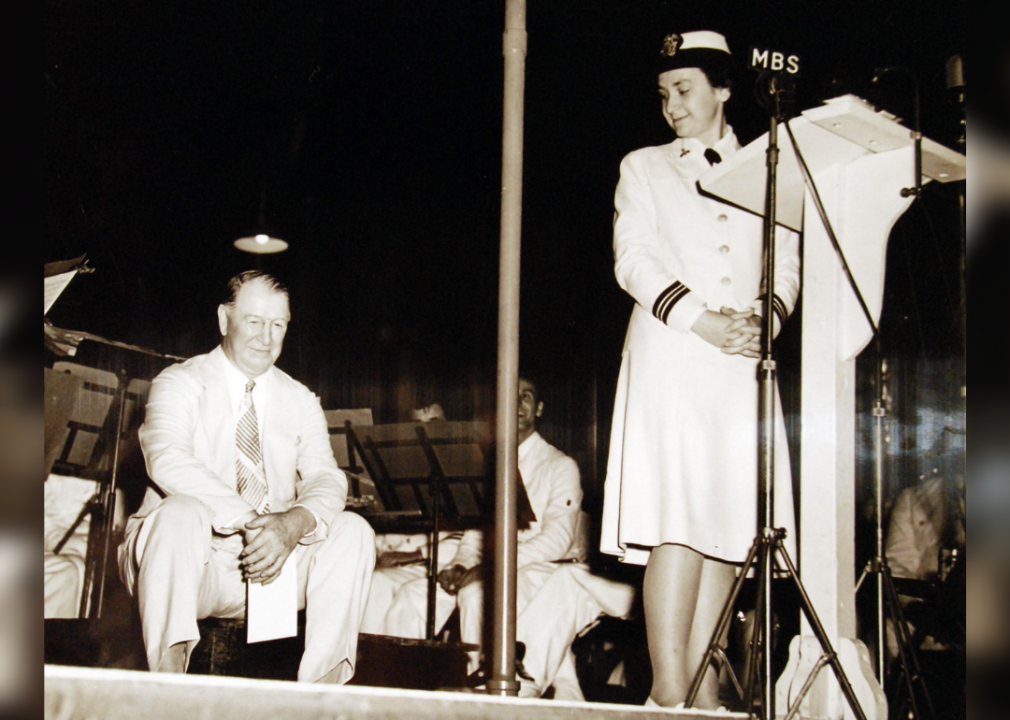
National Museum of the U.S. Navy // Wikimedia Commons
1942: Mildred McAfee becomes Navy line officer
In 1936, Mildred McAfee became president of Wellesley College. On Aug. 3, 1942, she left that position and became the Navy’s first female line officer, commissioned as a lieutenant commander in the Naval Reserve. At the same time, she became director of the Navy’s Women’s Reserve. She helped expand the Women Accepted for Volunteer Emergency Service (WAVES) organization to over 80,000 Navy women. She was promoted to the rank of captain only after Congress passed legislation allowing women to receive the title.
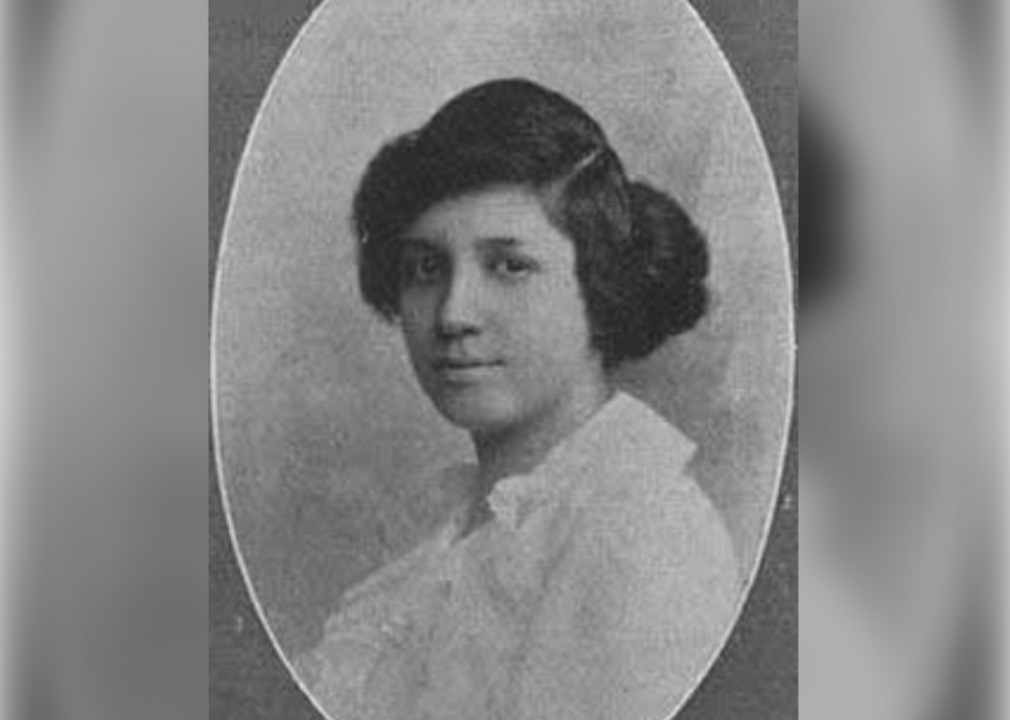
Public Domain // Wikimedia Commons
1943: Euphemia Lofton Haynes earns a PhD in mathematics
In 1943, Euphemia Lofton Haynes became the first Black woman to receive a doctorate in mathematics. Haynes earned her degree at Catholic University in Washington D.C. She taught in the public school system in the nation’s capital for 47 years.
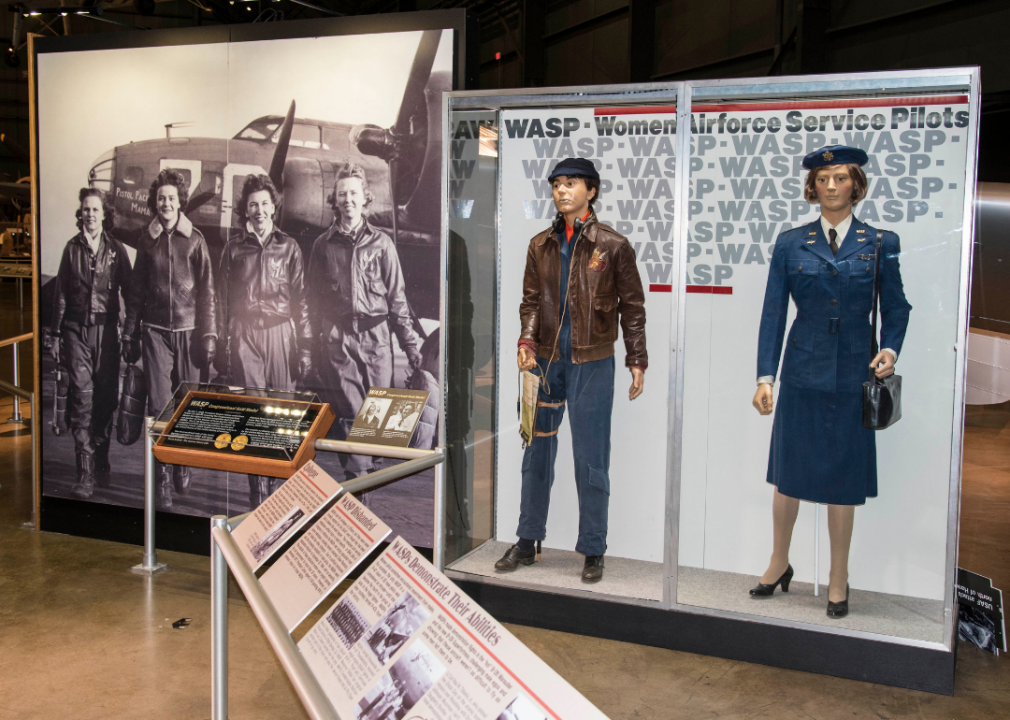
Ken LaRock // U.S. Air Force
1944: Ann Baumgartner Carl pilots a jet
Inspired by Amelia Earhart, Ann Baumgartner Carl learned to fly in 1940 while serving in the Women Airforce Service Pilots (WASP) during World War II. She later became the first and only female test pilot. On Oct. 14, 1944, she became the first American woman to fly a jet airplane: the turbo-jet powered Bell JP-59A.
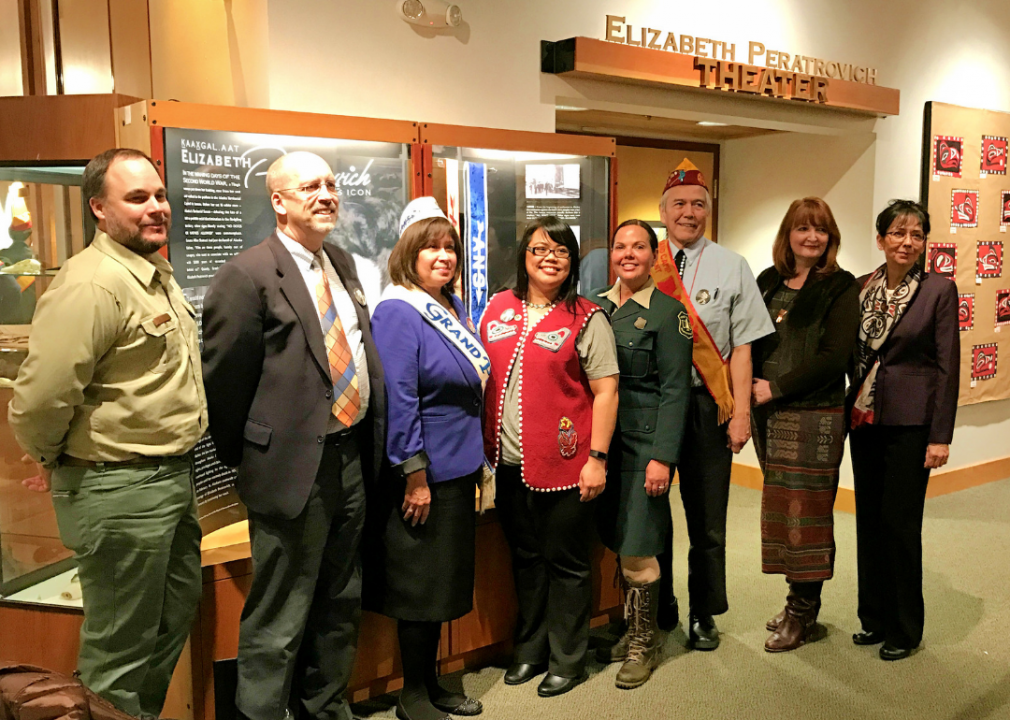
Forest Service Alaska Region, USDA // Flickr
1945: Elizabeth Peratrovich helps pass anti-discrimination legislation
In 1945, Elizabeth Peratrovich helped pass anti-discrimination legislation. She testified about the second-class treatment of Alaska Natives and how that also affected her children and others in her community. The law was passed almost two decades before the Civil Rights Act of 1964. In Alaska, Feb. 16 is known as Elizabeth Peratrovich Day. She was also the leader of the Alaska Native Sisterhood.
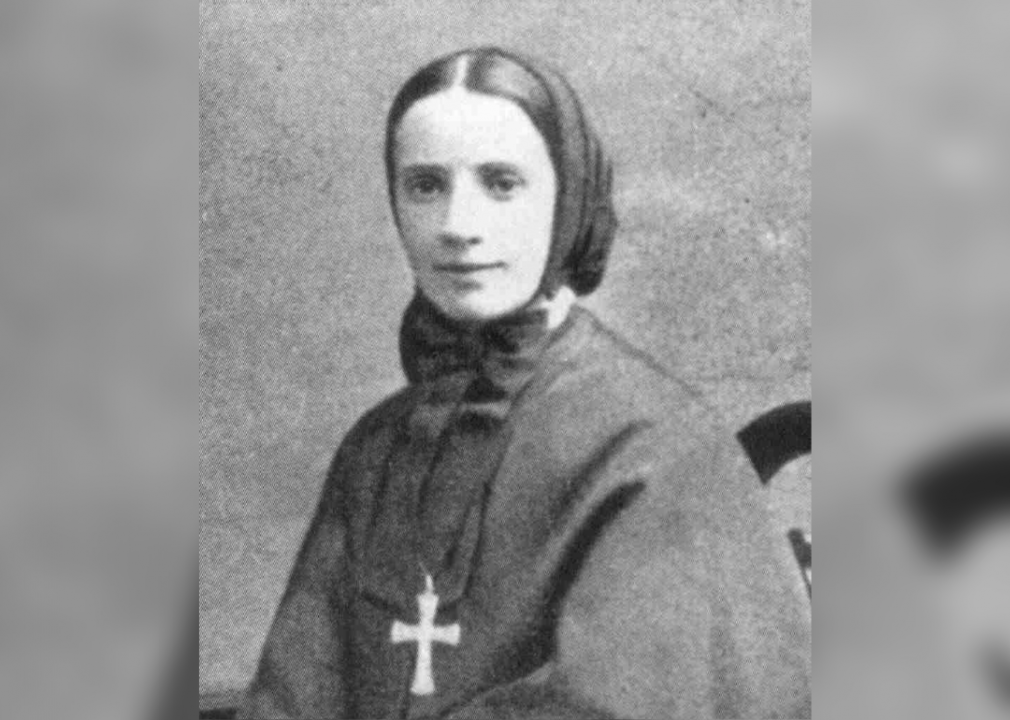
Public Domain // Wikimedia Commons
1946: Mother Frances Xavier Cabrini named a saint
In 1946, Pope Pius XII made Mother Frances Xavier Cabrini a saint, the first American woman to be canonized. She was actually born in Italy, but later became a U.S. citizen.
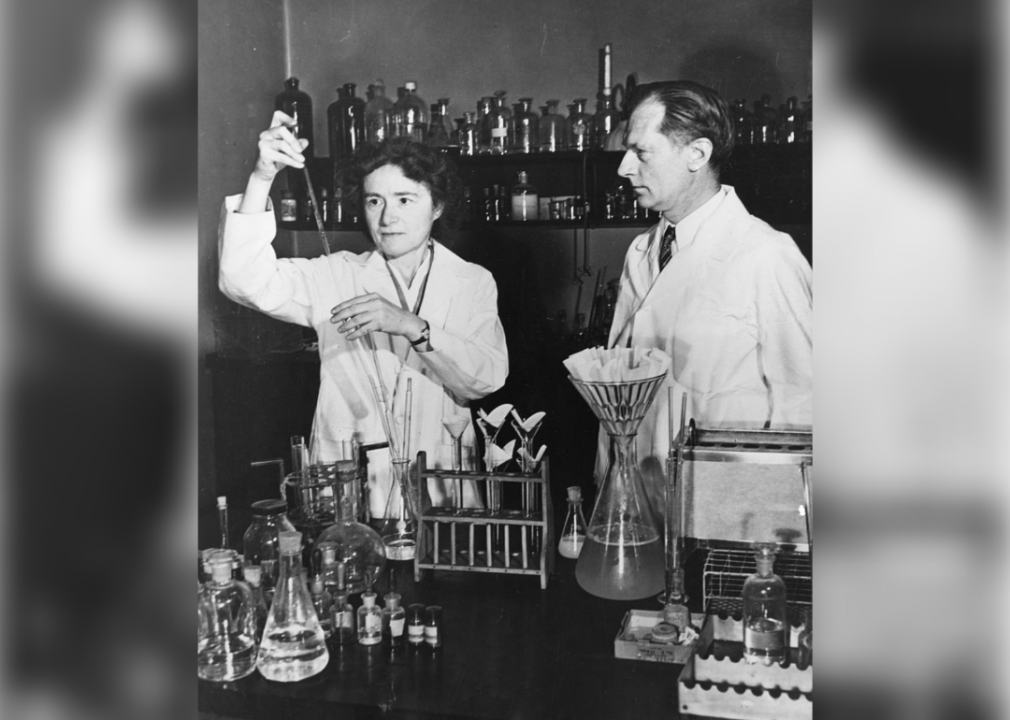
Smithsonian Institution // Wikimedia Commons
1947: Gerty Cori wins Nobel Peace Prize in medicine
Gerty Cori was the first American woman to win the Nobel Prize in physiology or medicine; she shared the prize with her husband. The couple discovered the Cori cycle, which explains how cells use food and convert it to energy through the muscles. Their research led to development of treatments for diabetes. The couple researched many projects together, though Gerty’s husband received most of the recognition.
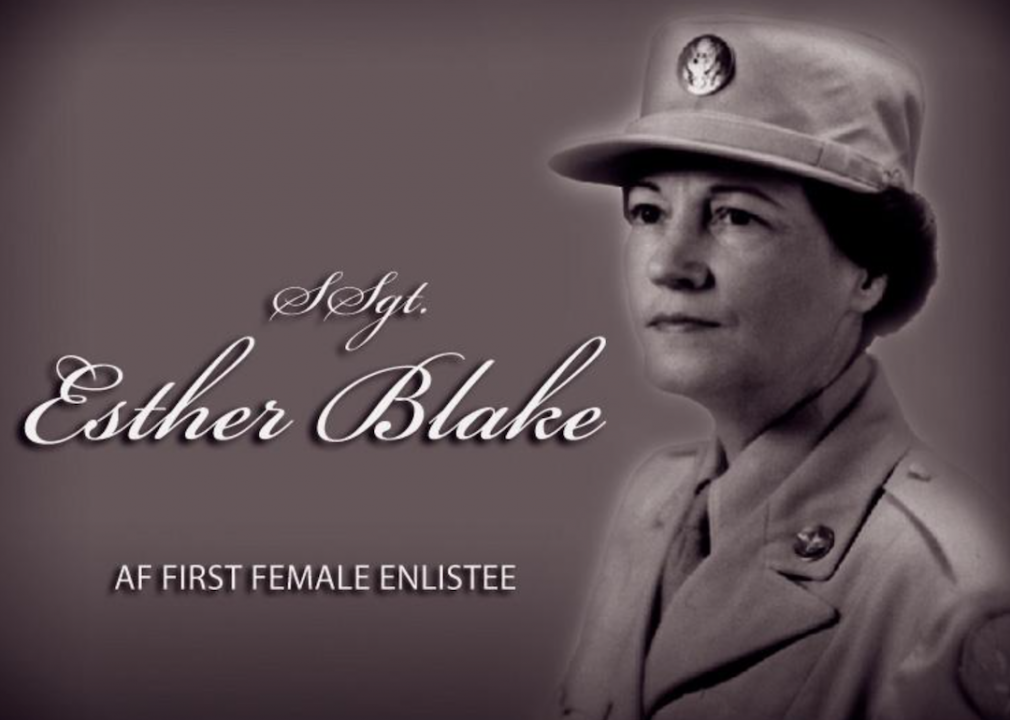
U.S. Air Force
1948: Esther Blake joins the Air Force
On July 8, 1948, the 51-year-old Esther Blake enlisted in the U.S. Air Force. She was the first woman to do so. The U.S. Air Force became a separate division after President Harry Truman created the Department of Defense in 1947. Women were accepted to the Women’s Air Force starting in July the following year. Blake was first in line. She had joined the Women’s Army Corps in 1944 when her oldest son’s plane was shot down and he went missing during World War II.
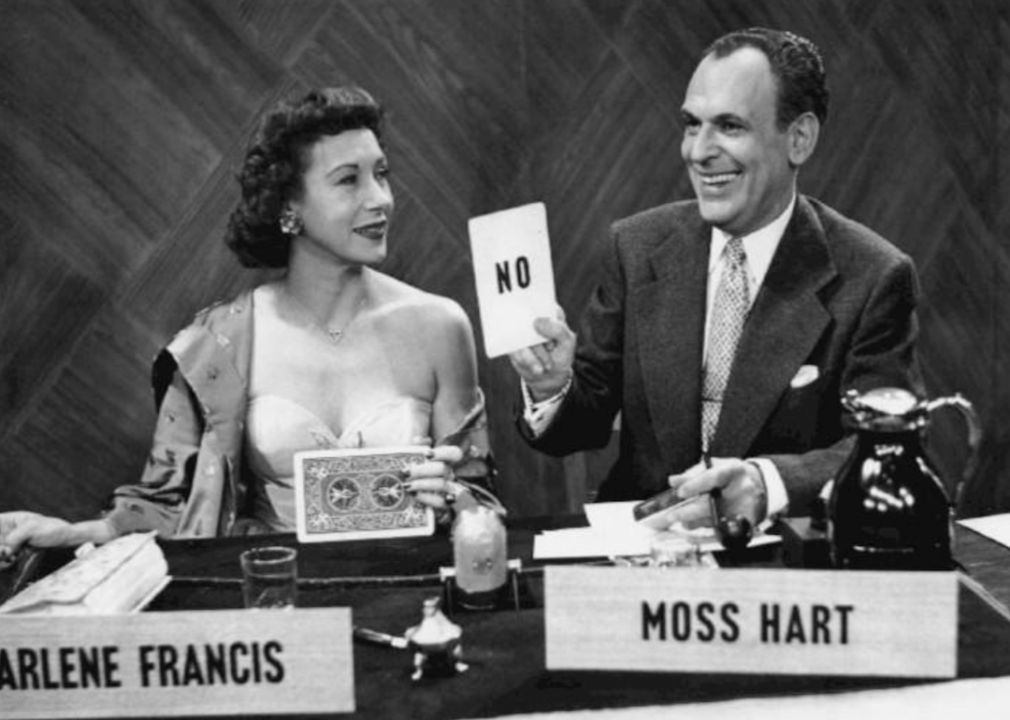
NBC Television // Wikimedia Commons
1949: Arelene Francis hosts a game show
On May 5, 1949, Arlene Francis became the first woman to host a game show on television. Francis hosted “Blind Date,” which originally started as a matchmaking radio show, until 1952. She went back to radio in 1961 and hosted “The Arlene Francis Show” for almost three decades. Francis led the way for “Golden Girl” actress Betty White, who first appeared on a game show in 1955 and earned the nickname “The First Lady of Game Shows” by the 1980s. In 1983, White was the first woman to win a Daytime Emmy for Outstanding Game Show Host.

Lesekreis // Wikimedia Commons
1950: Gwendolyn Brooks earns Pulitzer Prize in Poetry
In 1950, writer and poet Gwendolyn Brooks became the first Black person awarded the Pulitzer Prize. Brooks received the poetry prize for “Annie Allen.” That same year, Hazel Scott became the first Black woman to host her own television show, “The Hazel Scott Show.”

Courtesy of the Mississippi Department of Archives and History // Wikimedia Commons
1951: Paula Ackerman conducts rabbinical services
From 1951 to 1953, Paula Ackerman served as Temple Beth Israel’s spiritual leader. She wasn’t officially a rabbi, but she was the first woman to perform rabbinical duties in a mainstream American Jewish congregation.
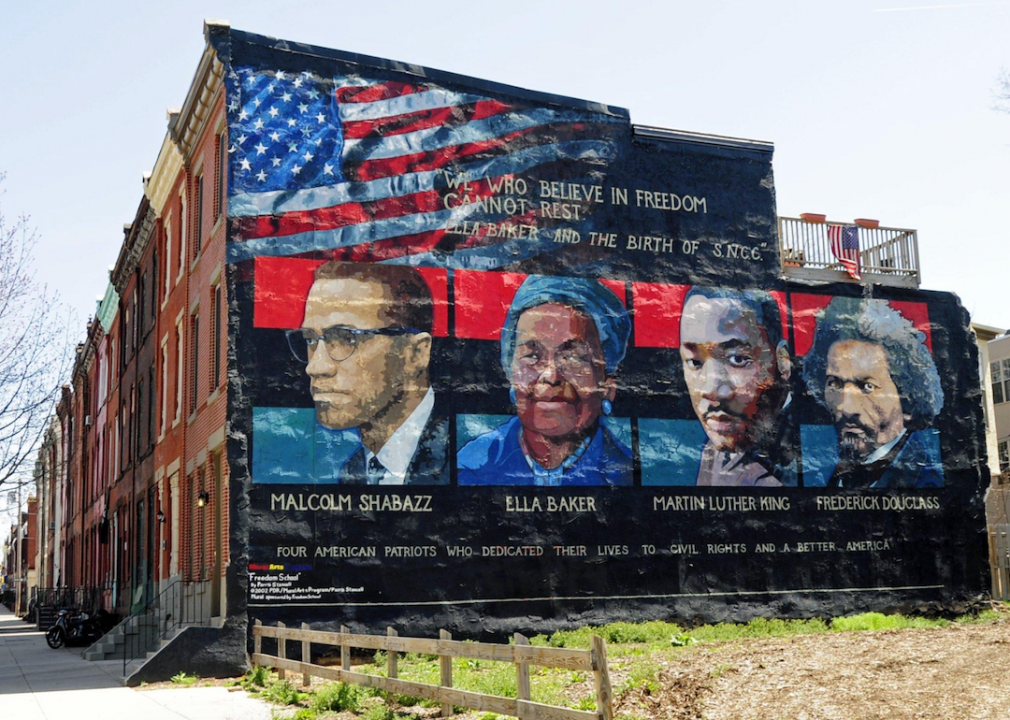
Tony Fischer // Wikimedia Commons
1952: NAACP gets its first woman president
Despite being behind the scenes, Ella Baker—whose grandmother was born as an enslaved person—was an important leader in the civil rights movement. She worked with both the Rev. Dr. Martin Luther King Jr., and Rosa Parks, and helped establish the Southern Christian Leadership Conference and the Student Nonviolent Coordinating Committee. In 1952, she became the first female president of the National Association for the Advancement of Colored People.
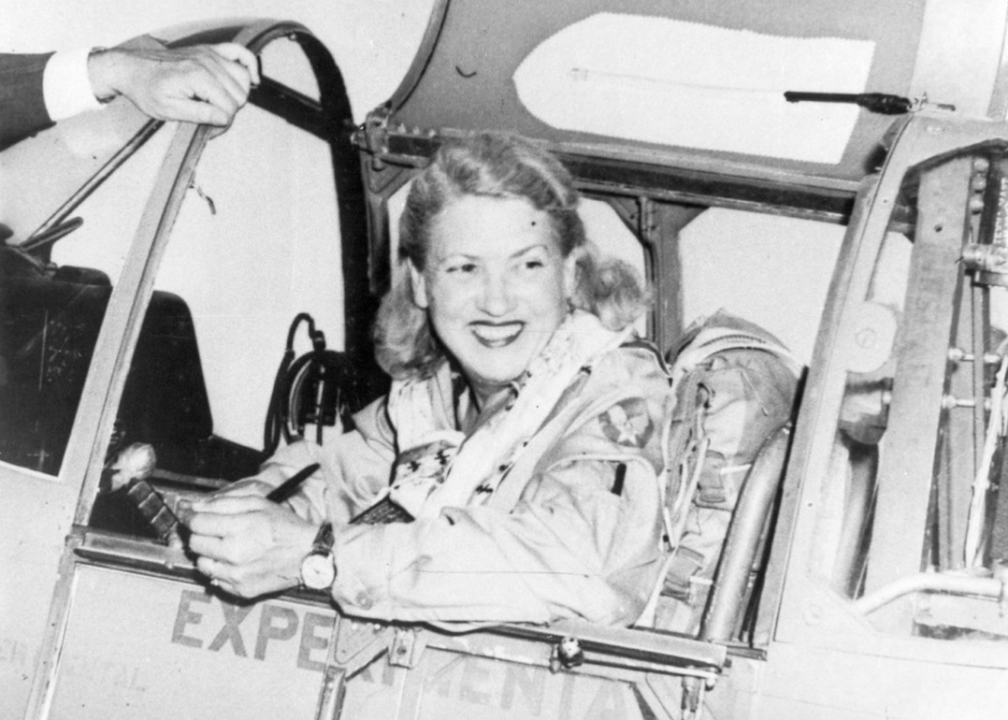
SDASM Archives // Flickr
1953: Jacqueline Cochran breaks the sound barrier
Aviator Jacqueline Cochran was the first woman to fly faster than Mach 1. Cochran broke the sound barrier on May 18, 1953, in an F-86 Sabre. She went on to set a world speed record of 1,429 mph in 1964. She continued to break records into her 60s.

Tony Webster // Wikimedia Commons
1954: Jewel L. Prestage earns a doctorate in political science
Jewel L. Prestage earned her doctorate at the University of Iowa when she was only 22. Prestage became the first Black woman—and one of the youngest people—to earn a doctorate from a department of political science at an American university. She went on to chair Southern University’s department of political science for almost two decades, pushing for more Black academics. She was the first person to focus her research on Black women legislators.
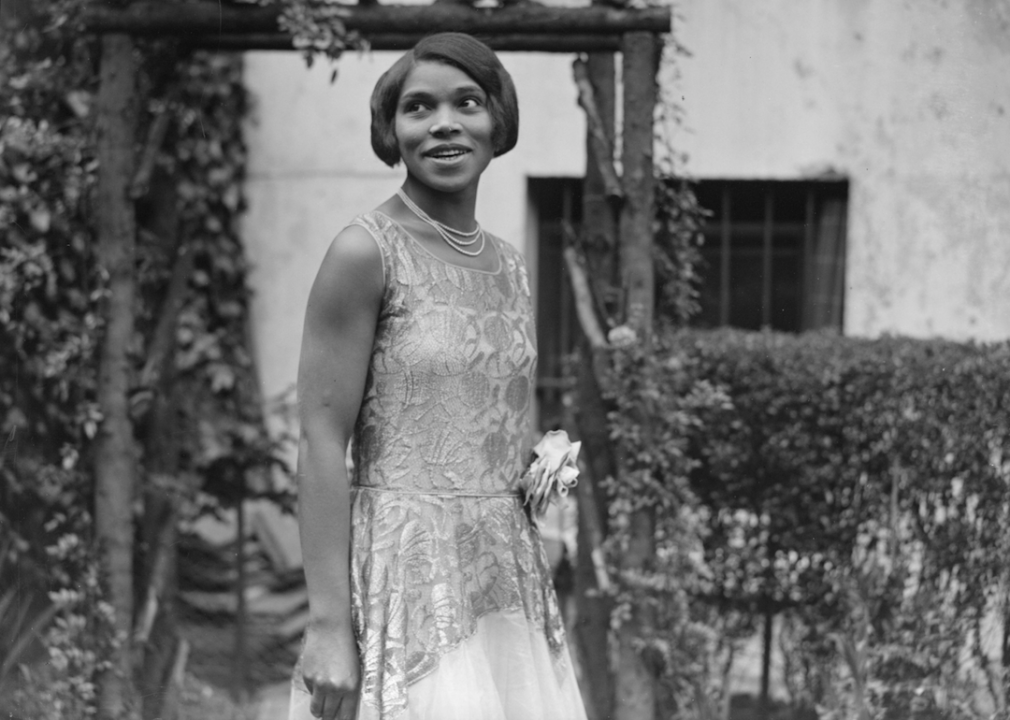
London Express // Getty Images
1955: Marian Anderson performs at the Met
In her late 50s, Marian Anderson became the first Black soloist to sing at New York’s Metropolitan Opera on Jan. 7, 1955. Anderson helped pave the way for Black performers in classical music. About three weeks later, baritone Robert McFerrin became the first Black man to perform a solo at the Met.
On April 9, 1969, Anderson sang “My Country, Tis of Thee,” on the National Mall in front of the Lincoln Memorial because Constitution Hall, which was owned by the Daughters of the American Revolution, wouldn’t let a Black woman sing in the building. The organization later apologized to the singer.
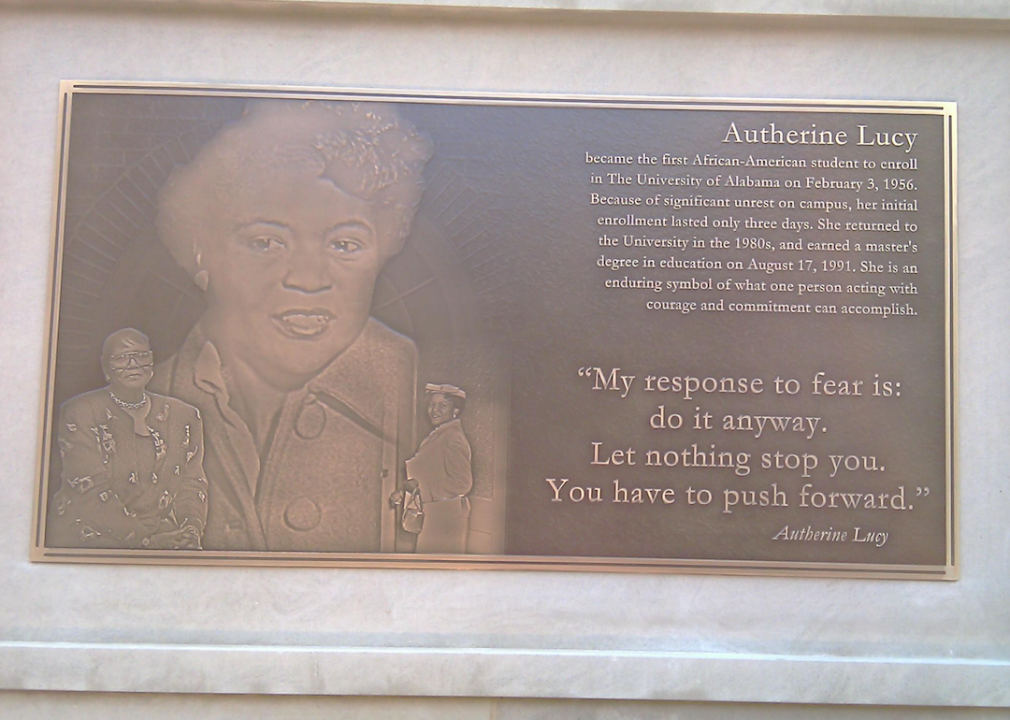
Ttownfeen // Wikimedia Commons
1956: First Black woman admitted to white university
In 1952, Autherine Lucy applied to the University of Alabama, but she was rejected because the school didn’t accept Black students. Two years later, the U.S. Supreme Court ruled in Brown vs. Board of Education of Topeka that segregation in schools was unconstitutional.
On Feb. 3, 1956, Lucy became the first Black student to attend an all-white university. She wasn’t allowed to live on campus or eat in the cafeteria. She faced discrimination with crowds of white people chasing, screaming, and throwing things like rotten produce at her. The police escorted her home and university officials voted to suspend her—for her own safety—from attending the school.
With help from the NAACP, Lucy tried to get back into the school, filing contempt-of-court charges against the school, which ultimately expelled Lucy. The university didn’t remove her expulsion until 1988. Lucy later enrolled in the graduate program in education and received her master’s degree in 1992 from the university.

Newspress Photo // Wikimedia Commons
1957: Althea Gibson wins Wimbledon
Before Venus and Serena Williams dominated tennis, Althea Gibson paved the way. In 1957, Gibson became the first Black woman to win a championship at Wimbledon. Tennis legend Billie Jean King called Gibson “the Jackie Robinson of tennis,” noting Gibson’s inspiration to Black players who would follow in her footsteps.
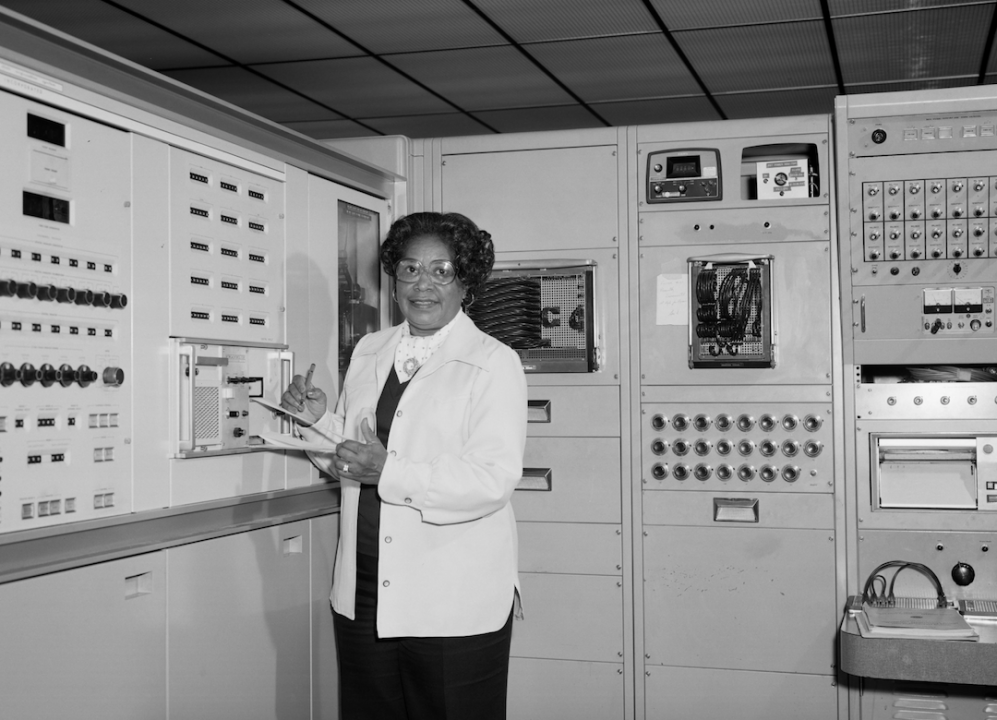
NASA // Wikimedia Commons
1958: First Black woman engineer starts at NASA
Mary Winston Jackson became NASA’s first female Black engineer in 1958. To take classes that qualified her for the position, she had to get permission from the City of Hampton to attend classes at the then-segregated Hampton High School.

robert cicchetti // Shutterstock
1959: Arlene Pieper finishes a marathon
Arlene Pieper became the first woman to finish a marathon when she completed the Pikes Peak Marathon in 1959. Unlike the Boston Marathon, this race’s officials never barred women from competing; officials just didn’t think a woman would ever do it. Race director Ron Ilgen said organizers figured women could run the 13.3 miles up the mountain, but they didn’t think they would have the strength to run back down.
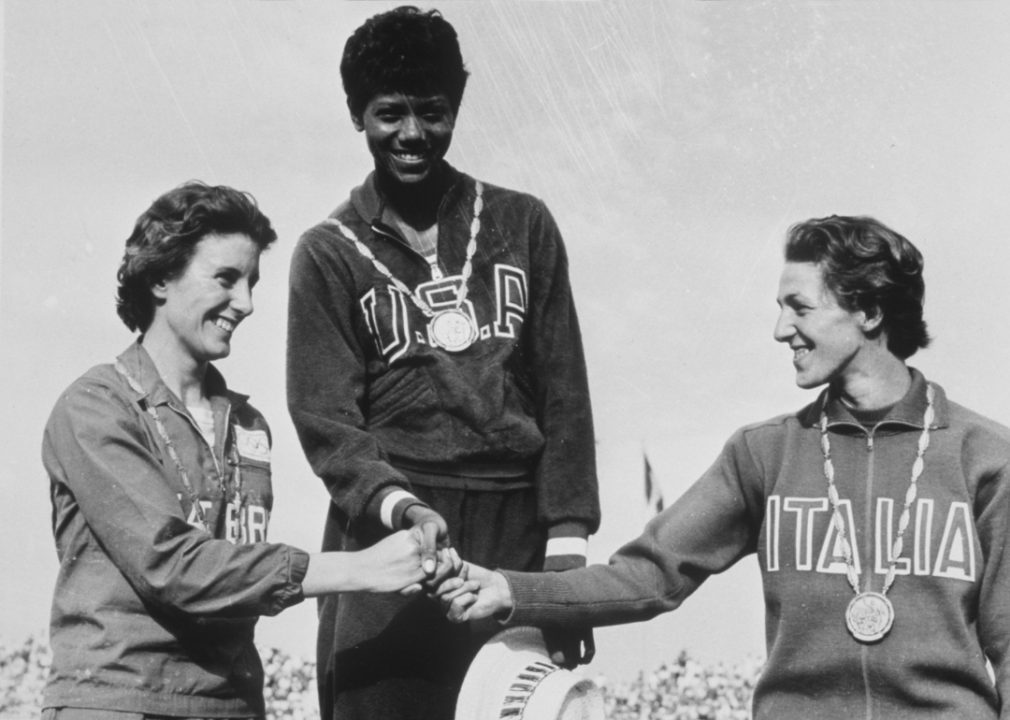
HULTON DEUTSCH/ALL // Getty Images
1960: Wilma Rudolph nets three Olympic gold medals
As a child, Wilma Rudolph had polio and scarlet fever. At one point, her doctor told her she might never walk again. Rudolph didn’t just walk, she became a world-class athlete. She earned the title of “fastest woman in the world” when she took home three gold medals—and broke three world records—in track and field at the 1960 Olympic Games in Rome.
She was the first American woman to win three medals in a single year at the Olympics. She used her status as an athlete to shed light on civil rights issues and refused to attend her homecoming parade unless it was integrated. In 1990, Randolph became the first woman awarded the National Collegiate Athletic Association’s Silver Anniversary Award.
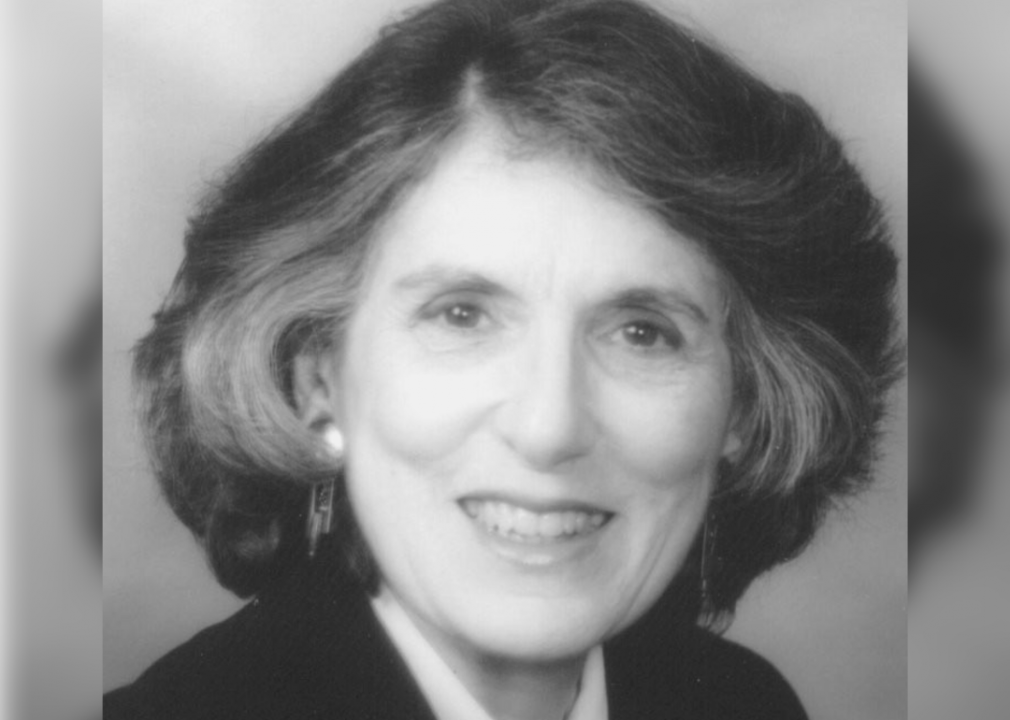
Dlu776 // WIkimedia Commons
1961: Dana Ulery lands a job at NASA Jet Propulsion Laboratory
In 1961, the computer scientist Dana Ulery became the first female engineer at the NASA Jet Propulsion Laboratory in Pasadena, California. Ulery was the only woman to hold that position for the next seven years. She was also among the first women managers at the U.S. Army Research Laboratory.
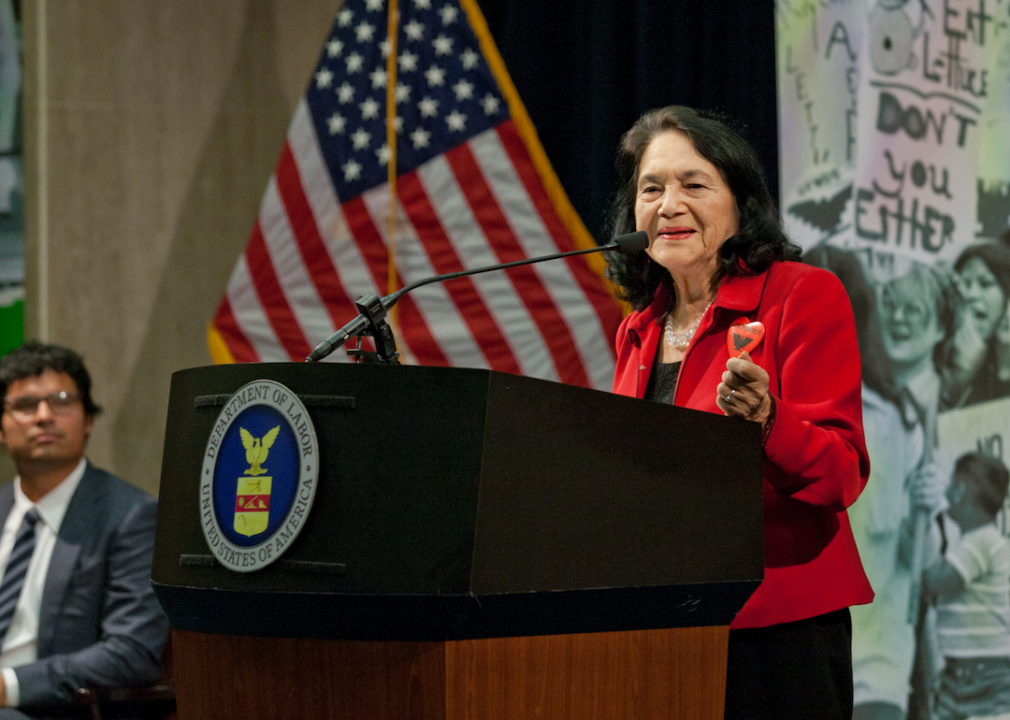
U.S. Department of Labor // Wikimedia Commons
1962: Dolores Huerta lobbies for migrant workers
In 1962, Dolores Huerta co-founded the United Farm Workers union with fellow activist Cesar Chavez. Huerta was raised in Stockton, California, and was the first woman in U.S. history to recruit, organize, lobby, and negotiate on behalf of migrant workers. In 1965, Huerta and Chavez helped organize the Delano grape strike, a five-year boycott of California table grapes that resulted in better wages and working conditions for migrant workers.
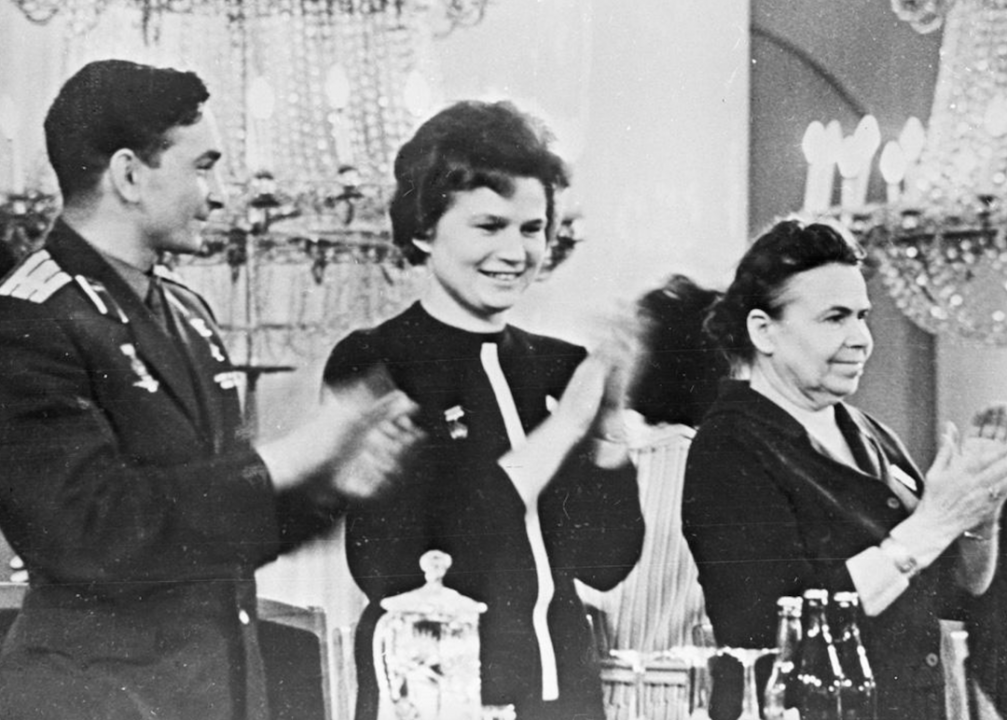
Yuryi Abramochkin / Юрий Абрамочкин // Wikimedia Commons
1963: Valentina Tereshkova heads to space
Russian cosmonaut Valentina Tereshkova once said: “If women can be railroad workers in Russia, why can’t they fly in space?” On June 16, 1963, Tereshkova did just that. She piloted the Soviet space capsule Vostok 6, spending three days in space and orbiting Earth 48 times. While she remained active in the space community, this was her only mission away from Earth.
That same year, Katharine Graham became publisher of the Washington Post, the first woman in that position at a major newspaper. In 1971, Graham made the decision to publish the Pentagon Papers.
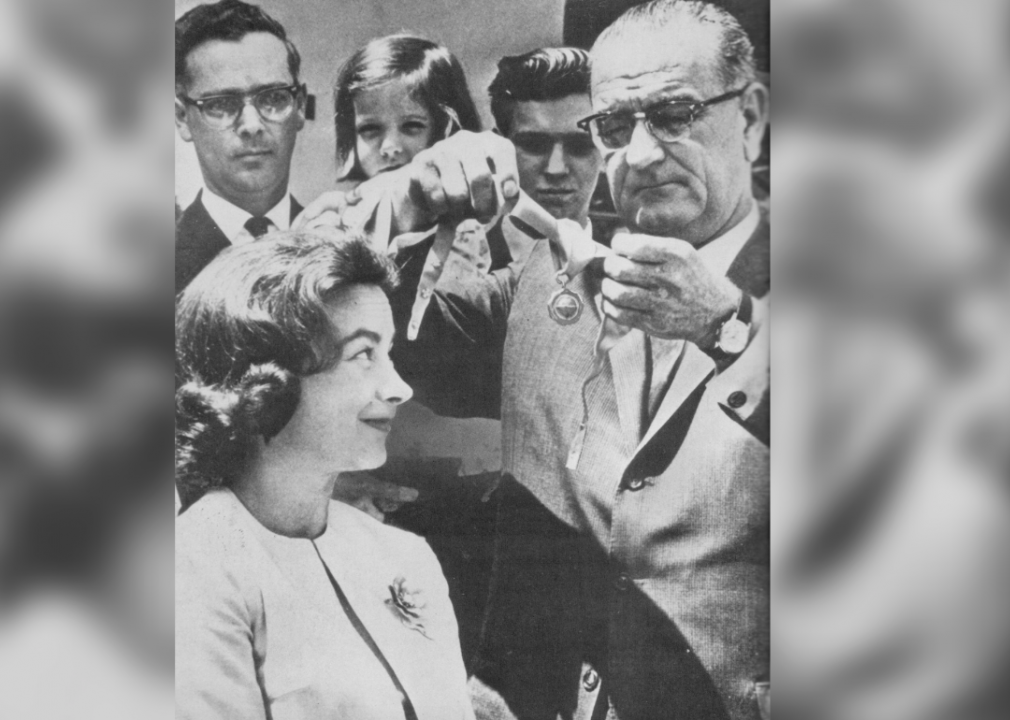
Associated Press // Wikimedia Commons
1964: Geraldine “Jerrie” Mock flies solo trip around the world
April 18, 1964, was the day Geraldine “Jerrie” Mock became the first woman to fly around the world alone. The famous ill-fated attempt by Amelia Earhart took place in 1937. Mock made the trip in a 1953 Cessna 180 single-engine monoplane nicknamed “The Spirit of Columbus,” and earned the Federal Aviation Administration’s Exception Service Decoration, presented by President Lyndon B. Johnson.

Chinnapong // Shutterstock
1965: Dr. Helen Taussig elected president of the American Heart Association
Dr. Helen Taussig received the Medal of Freedom from President Lyndon B. Johnson in 1964. The following year, Taussig became the first female president of the American Heart Association. Taussig is most well known as the founder of pediatric cardiology: She created a way to surgically operate and treat a congenital heart defect known as “blue baby” syndrome. Her work led to modern-day adult open-heart surgery.
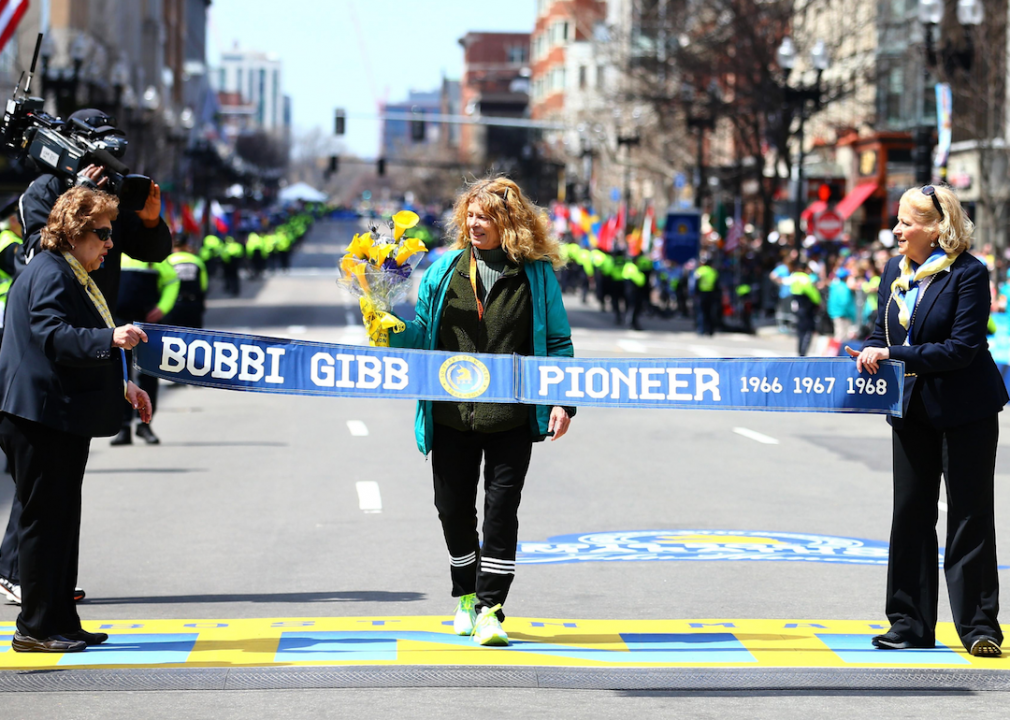
Maddie Meyer // Getty Images
1966: Bobbi Gibb runs the Boston Marathon
After Bobbi Gibb accidentally ran about 25 miles from California to Mexico, she decided to enter the Boston Marathon. The only race she could run for women was limited to 1.5 miles. Officials rejected her application, but she ran the race anyway, donning her brother’s shorts and tennis shoes made for boys.
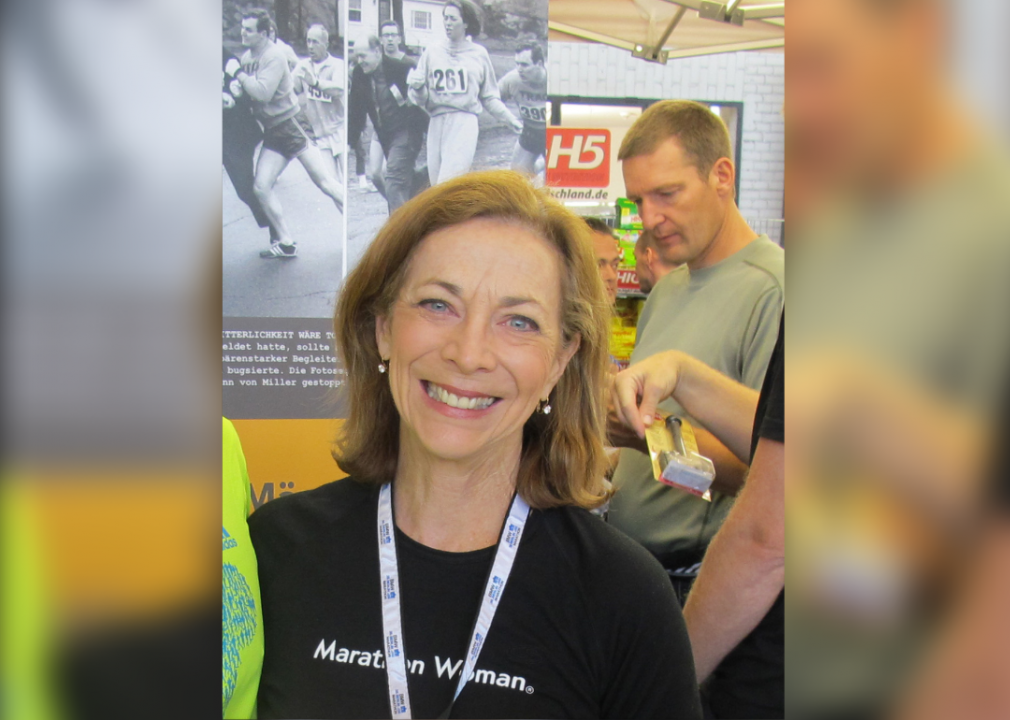
Marathona // Wikimedia Commons
1967: Kathrine Switzer enters the Boston Marathon
In 1967, Kathrine Switzer, 20, entered the Boston Marathon as K.V. Switzer. When she was a few miles into the male-dominated race, an official tried to remove her. At the time, women were considered “too fragile” to run the race, Switzer said. Her participation changed the way people viewed women’s physical endurance abilities. Women’s marathoning became an Olympic sport in 1984.
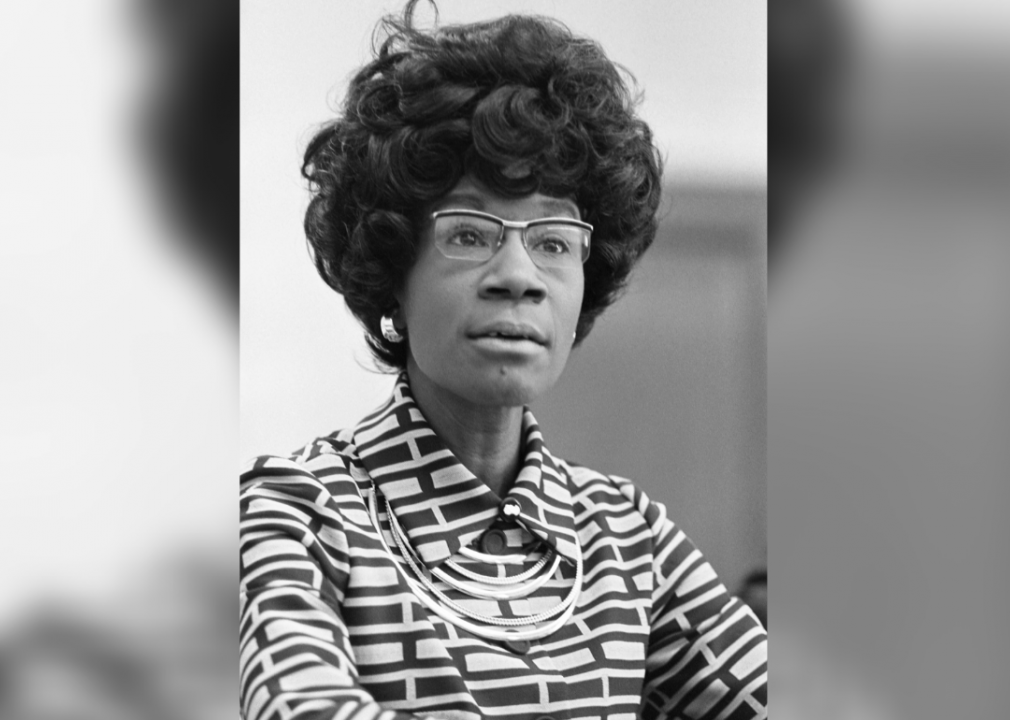
Thomas J. O’Halloran/Library of Congress // Wikimedia Commons
1968: Shirley Chisholm is elected to Congress
In 1968, voters from a redrawn district of New York elected Democrat Shirley Chisholm to the U.S. House of Representatives. In 1972, Chisholm became the first Black woman to seek the nomination of president for a major party. She was originally barred from participating in presidential primary debates. After legal action, she was allowed to give one speech.
Chisholm co-founded the National Women’s Political Caucus in 1971, and in 1977 became the first Black woman—and second woman ever—to serve on the House Rules Committee. She spent seven terms in Congress advocating for women and minority rights.
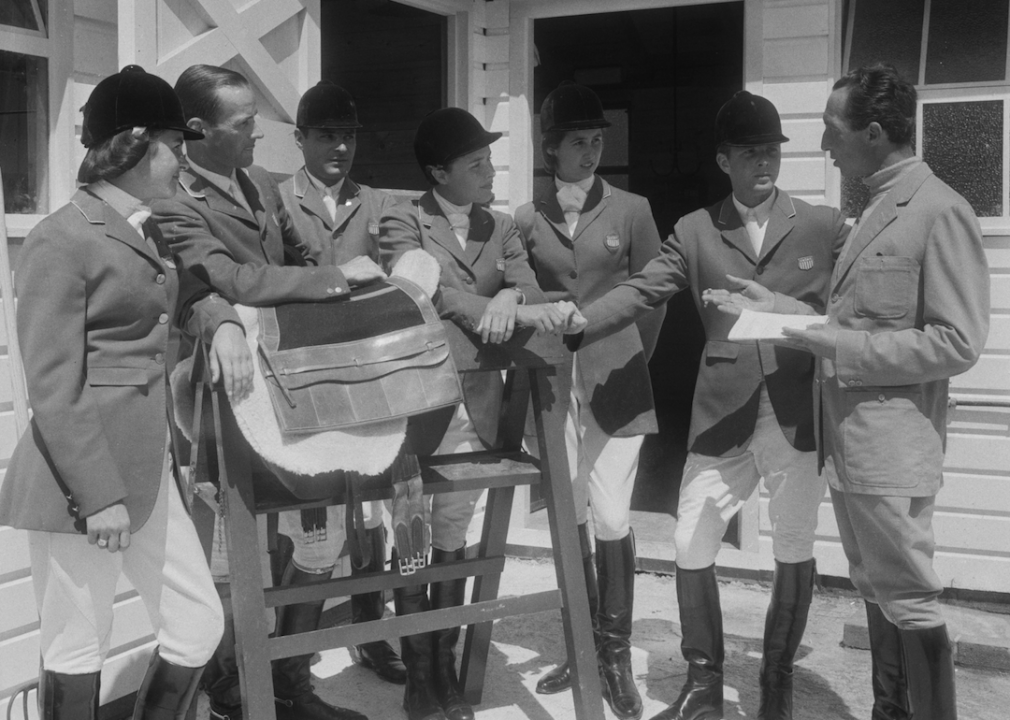
Stanley Sherman/Daily Express/Hulton Archive // Getty
1969: Diane Crump competes in sanctioned horse race
After the 1968 Civil Rights Act, Olympic equestrian rider Kathy Kusner became the first woman to get her jockey’s license. Male competitors boycotted, refusing to race against her. A year later in 1970, Diane Crump competed in a sanctioned pari-mutuel race in the United States, the first woman to do so. Armed guards escorted her to the race, in which she finished 10th out of 12.

Abbie Myers // Wikimedia Commons
1970: Diane Crump competes in the Kentucky Derby
In 1970, Diane Crump became the first female jockey to compete in the Kentucky Derby. She never won the Derby, but she continued to compete in horse racing until 1985.
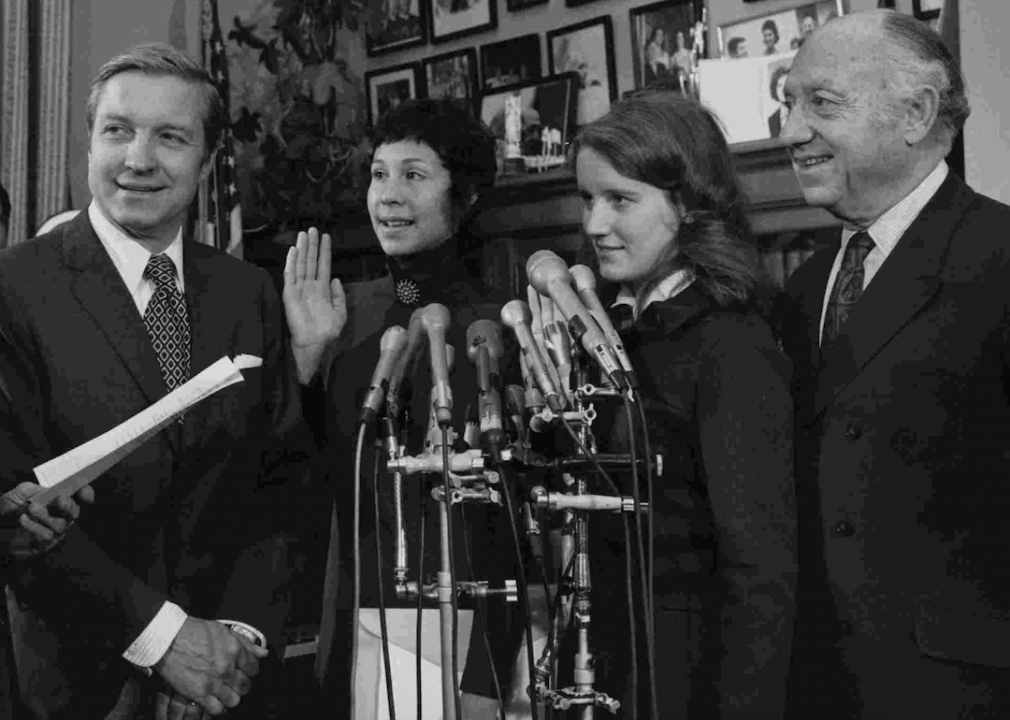
Senate Historical Office // Wikimedia Commons
1971: First women pages begin work in the Senate
In 1971, the Senate broke a 150-year-old tradition by appointing women to the Senate page program. Ellen McConnell Blakeman fought for the opportunity when she was only a 16-year-old junior in high school. She was appointed by Illinois Sen. Charles Percy. Two other senators followed suit and appointed female pages: Paulette Desell-Lund and Julie Price.

Warren LeMay // Wikimedia Commons
1972: Sally Priesand is ordained as a rabbi
Sally Priesand became the first American woman ordained as a rabbi on June 3, 1972. Alfred Gottschalk, president of Hebrew Union College-Jewish Institute of Religion in Cincinnati, Ohio, performed the service. While Priesand’s parents encouraged her goal, teachers and classmates discouraged her from pursuing the rabbinate.
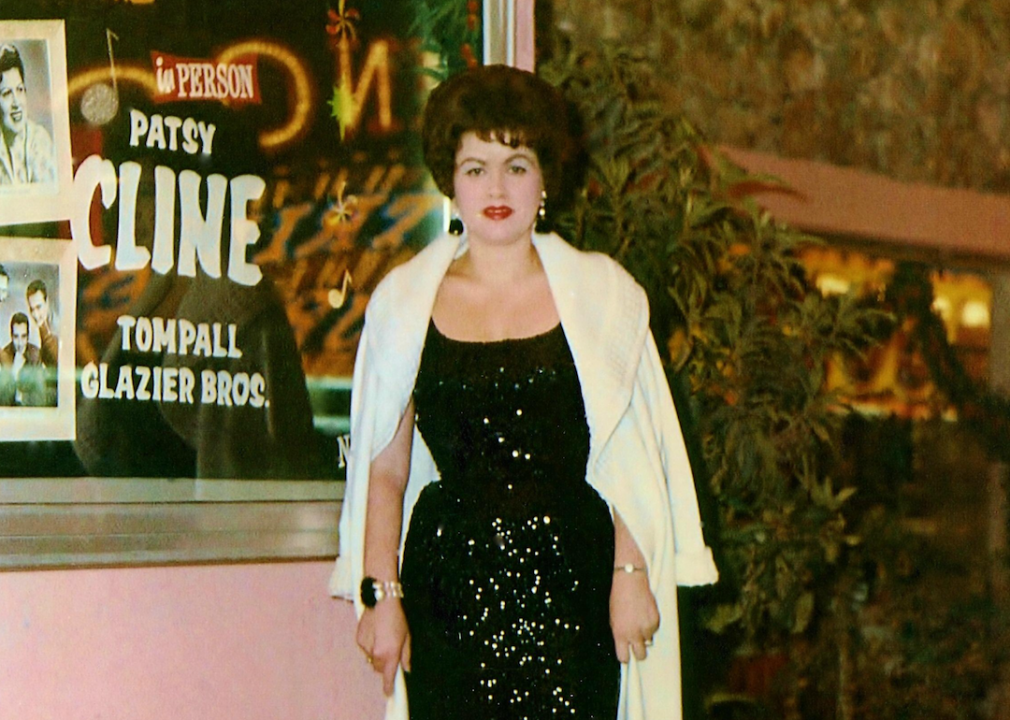
Shanecollinswiki // Wikimedia Commons
1973: Patsy Cline inducted into Country Music Hall of Fame
Singer Patsy Cline died in 1963 in a plane crash along with fellow country musicians Cowboy Copas and Hawkshaw Hawkins; she was only 30. A decade later, Cline became the first solo female artist inducted into the Country Music Hall of Fame.

Smithsonian Institution // Wikimedia Commons
1974: Capt. Rosemary Mariner flies a tactical jet
Capt. Rosemary Mariner accomplished a lot of military firsts, including being part of the first class of female aviators in the Navy in 1973. A year later, when she was only 21, she became the first woman to fly a tactical fighter jet. In later years, she was among the first women to serve aboard a U.S. Navy warship. She also helped repeal the combat exclusion restrictions on women.
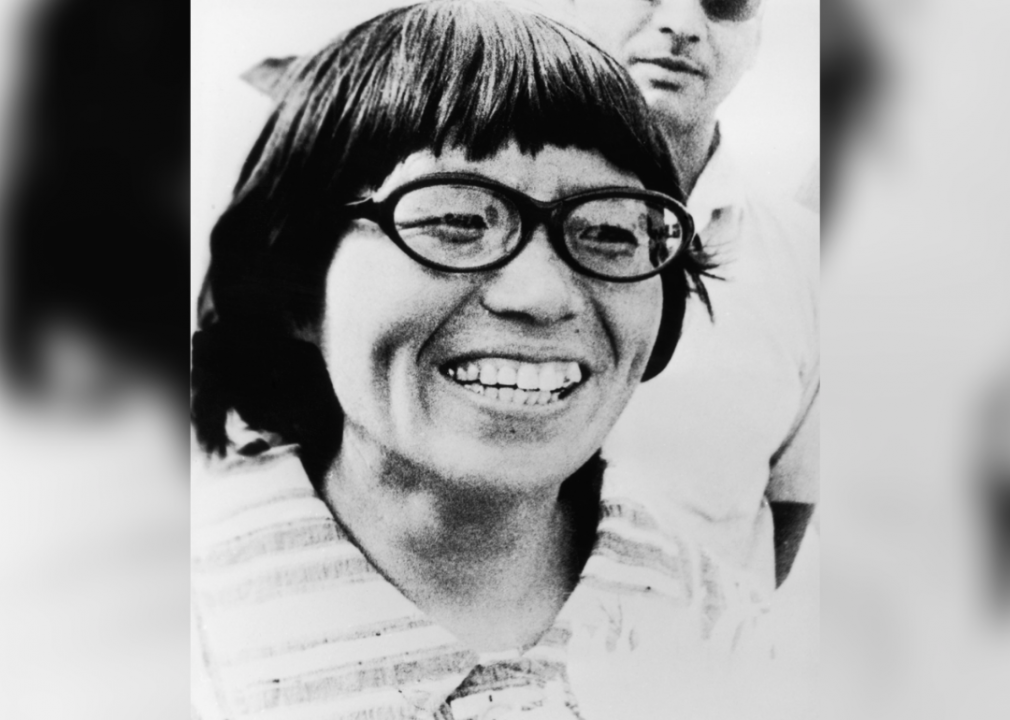
Keystone/Hulton Archives // Getty Images
1975: Junko Tabei summits Mt. Everest
When Junko Tabei stood atop Mount Everest in 1975, she went against Japanese gender norms and left her 3-year-old daughter with her husband so she could achieve her mountaineering dreams. Before attempting the summit, she founded the Ladies Climbing Club, a first in Japan. She started the all-female club because she didn’t like how she was treated by male climbers. In 1992, she became the first woman to conquer the “Seven Summits”—the tallest peak on each continent.
In 2016, Melissa Arnot became the first American woman to complete the ascent and descent of Mount Everest without supplemental oxygen. In 1998, Francys Arsentiev made the ascent but died on her way back down.
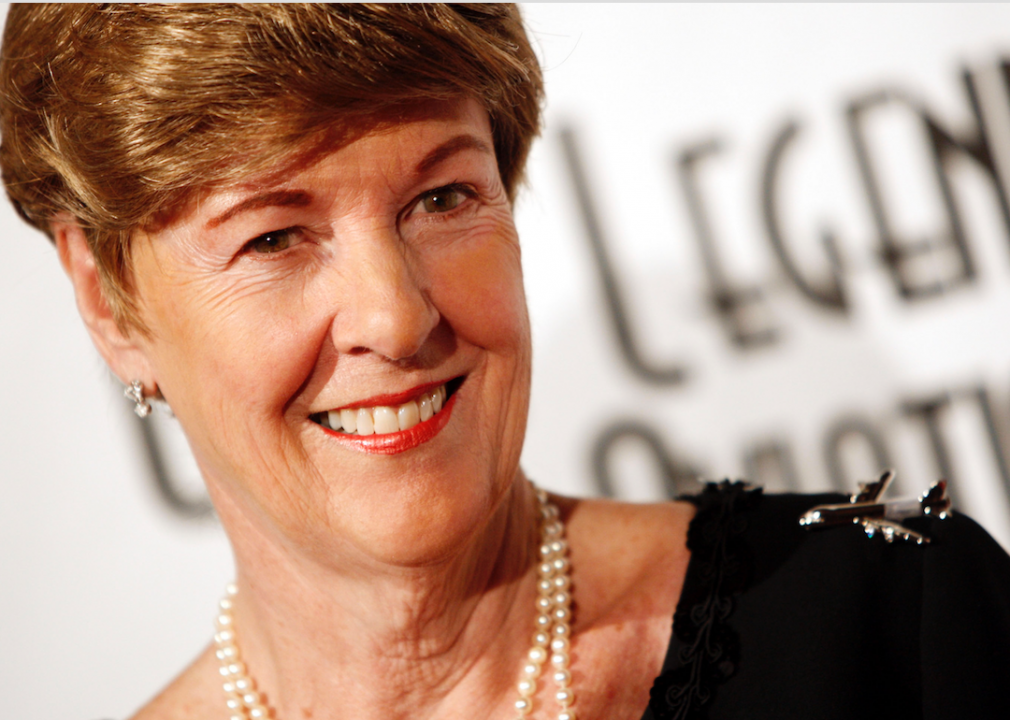
Kevin Winter // Getty Images
1976: Pilot Emily Howell Warner joins Frontier Airlines
Emily Howell Warner became a pilot for Frontier Airlines only after she demanded an interview and completed a simulator check ride—a test that usually wasn’t required. She co-piloted her first flight in 1974, and on June 6, 1976, she became the first female captain for a major airline. In 1986, she transferred to Continental Airlines, where she commanded the first all-women flight crew.
Also in 1976, President Gerald Ford named Shirley Temple Black—the former child star—the first woman U.S. chief of protocol. In 1988, she became an honorary U.S. foreign service officer. President Bill Clinton once said of Black that “she has to be the only person who both saved an entire movie studio from failure and contributed to the fall of communism.”

Dan Wildhirt // Wikimedia Commons
1977: Janet Guthrie races in the Indianapolis 500
Janet Guthrie, a physicist and aerospace engineer, was a pioneer for female race car drivers. In 1977, she became the first woman to compete in the Indianapolis 500. In 1976, Guthrie said, men didn’t think women had the strength, endurance, or emotional stability to race. She proved them wrong and paved the way for drivers like Danica Patrick, who became the first woman to lead in the Indy 500 in 2005.
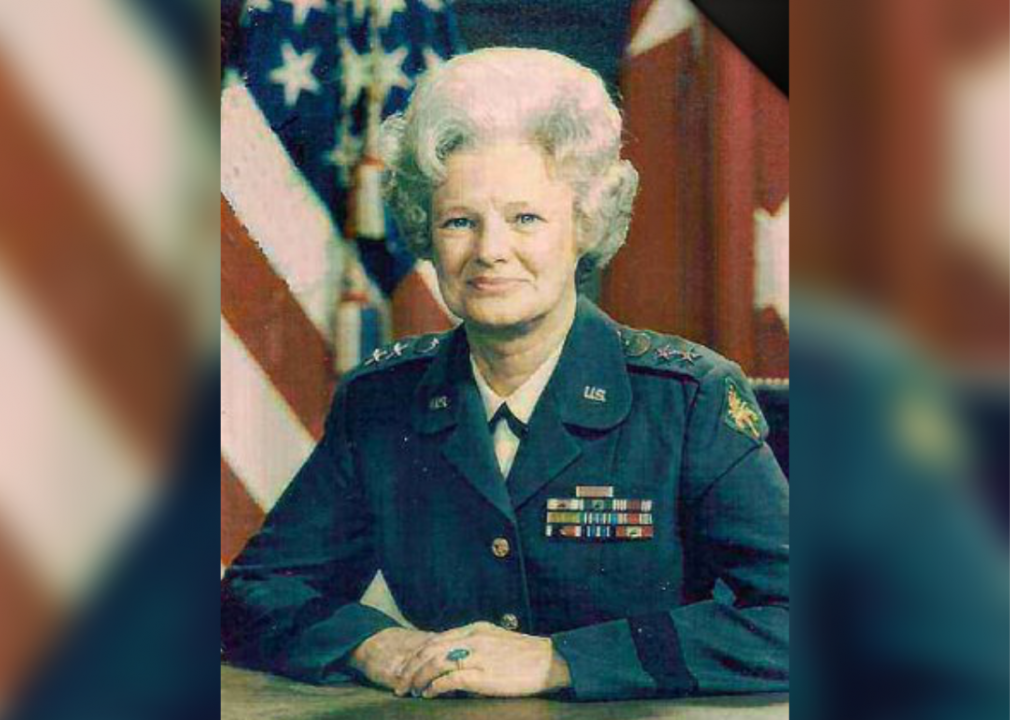
U.S. Department of Defense // Wikimedia Commons
1978: Gen. Mary E. Clarke becomes two-star general
Ret. Gen. Mary E. Clarke became the first woman to achieve the rank of two-star general in the U.S. Army. Clarke was the last director of the Women’s Army Corps, which was shut down in 1978 when women were integrated into the Army. She was put in command of Fort McClellan, the first woman in charge of a major military installation.
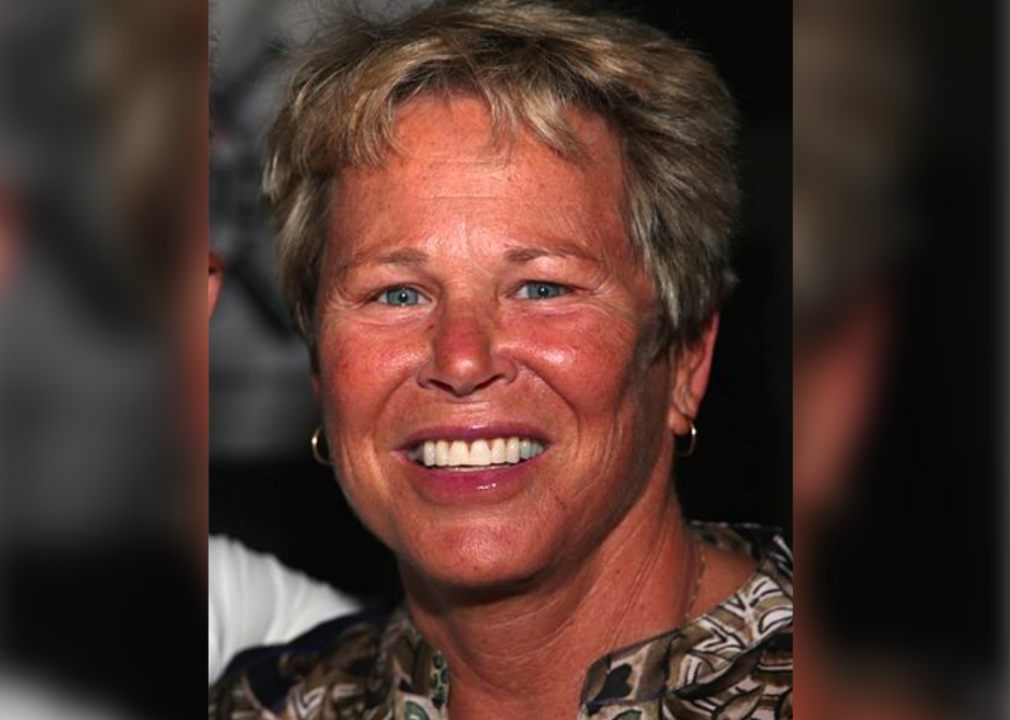
Gage Skidmore // Wikimedia Commons
1979: Ann Meyers signed to the NBA
The Indiana Pacers signed Ann Meyers to a one-year contract in 1979, making her the first woman signed by an NBA team. They cut her seven days after she signed. Some male players didn’t take it seriously, calling it a publicity stunt.
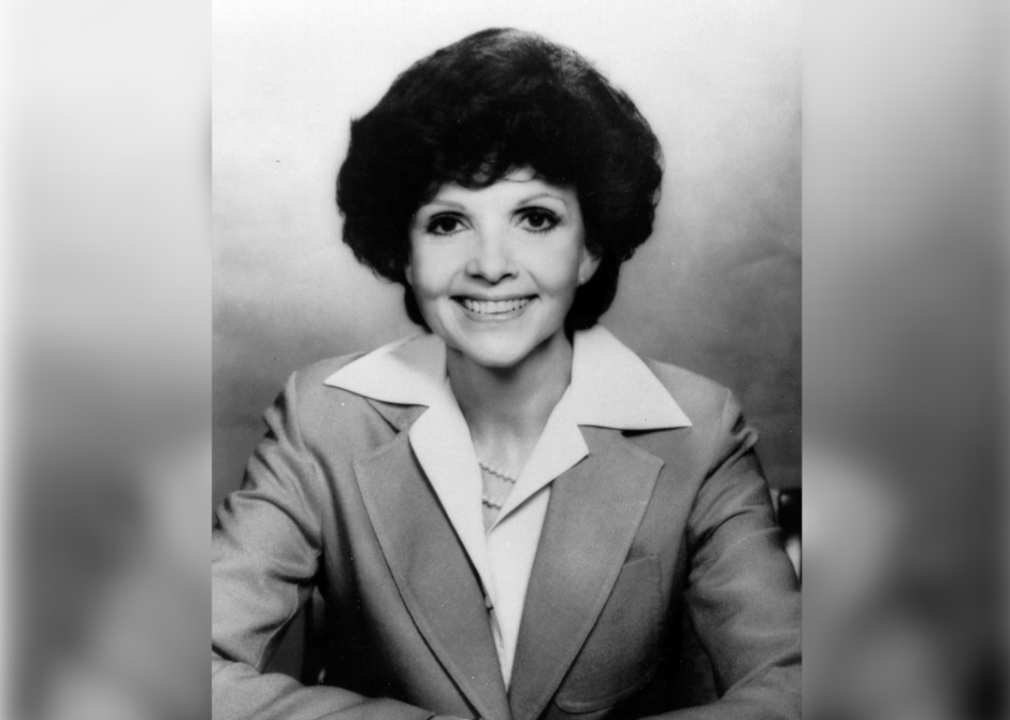
Public Domain // Wikimedia Commons
1980: Paula Hawkins is elected to Senate
Republican Paula Hawkins of Florida became the first woman elected to the U.S. Senate who didn’t have a husband or family member tied to the office. In her 1980 campaign, she described herself as feminine but not feminist; she opposed abortion rights and the Equal Rights Amendment, putting her at odds with the National Organization for Women. She only one term.
That same year, Betty Ellis—a linesman for the North American Soccer League—became the first woman to officiate in a major sports league in the United States or Canada.
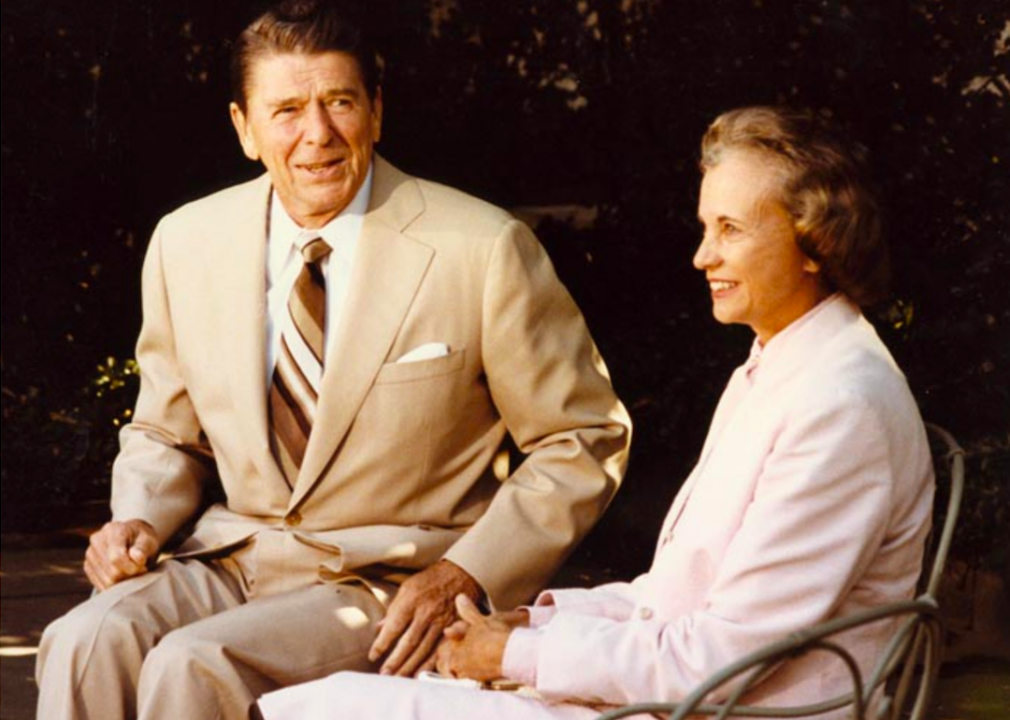
White House Photographic Office // Wikimedia Commons
1981: Sandra Day O’Connor nominated to Supreme Court
In 1981, Sandra Day O’Connor became the first woman justice on the U.S. Supreme Court. O’Connor went to Stanford University when she was only 16. She served in the state Senate and was a Maricopa County Superior Court Judge. President Ronald Reagan nominated her for the highest court in the land.
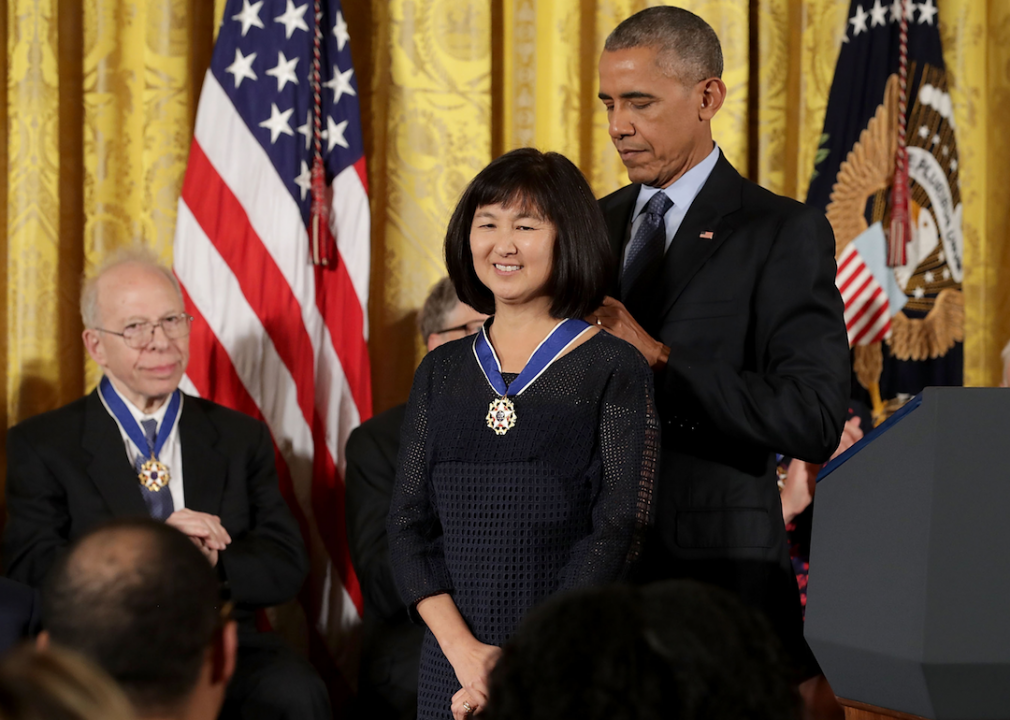
Chip Somodevilla // Getty Images
1982: First woman-designed memorial on the National Mall
When Maya Lin was a 21-year-old architecture student at Yale University, she entered and won a contest to design a memorial for the American soldiers who died in the Vietnam War. In 1982, Lin became the youngest person and the first woman to design a memorial on the National Mall.
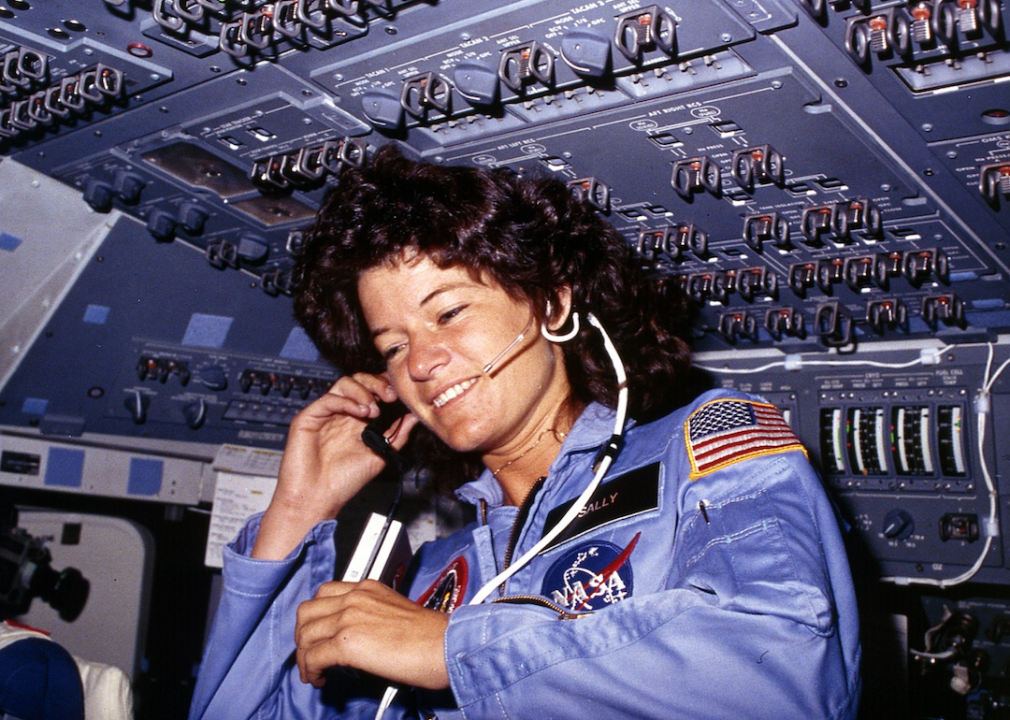
U.S. National Archives and Records Administration // Wikimedia Commons
1983: Sally Ride sent into space
Sally Ride became the first American woman and youngest astronaut to fly in space on June 18, 1983, aboard the space shuttle Challenger. Ride was a flight engineer and later worked as a physicist and physics professor at the University of California, San Diego. She also served on the advisory board of the National Women’s History Museum.
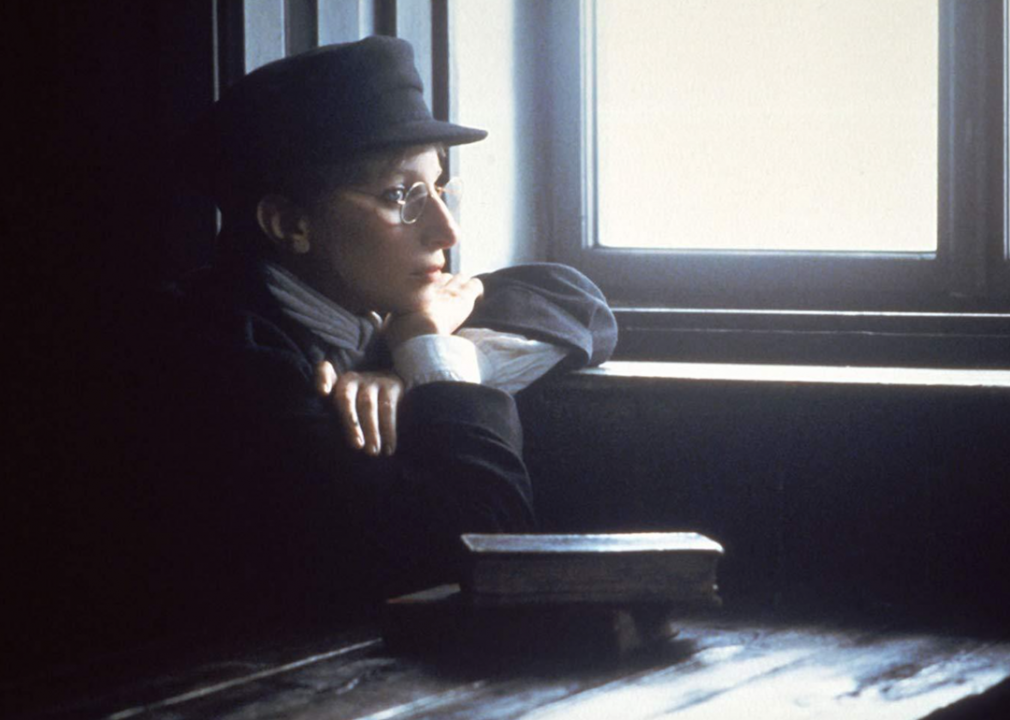
United Artists/Barwood Films
1984: Barbra Streisand wins a Golden Globe for directing
In 1984, Barbra Streisand became the first woman to win a Golden Globe for Best Director. Streisand accepted the award for her work on “Yentl.” Women still remain underrepresented in most gender-neutral categories in Hollywood awards shows; in 2021, Chloe Zhao became the second woman to ever have won the Golden Globe for Best Director, for her work on “Nomadland.”

M.O. Stevens // Wikimedia Commons
1985: Penny Harrington becomes chief of police
Penny Harrington became chief of police in Portland, Oregon, in 1985. This marked the first time a woman held the top spot at a major police department. Harrington had many other firsts: first female detective, first female sergeant, first female lieutenant, first female captain. As chief, she gave women more access to precincts, patrol cars, and promotions.
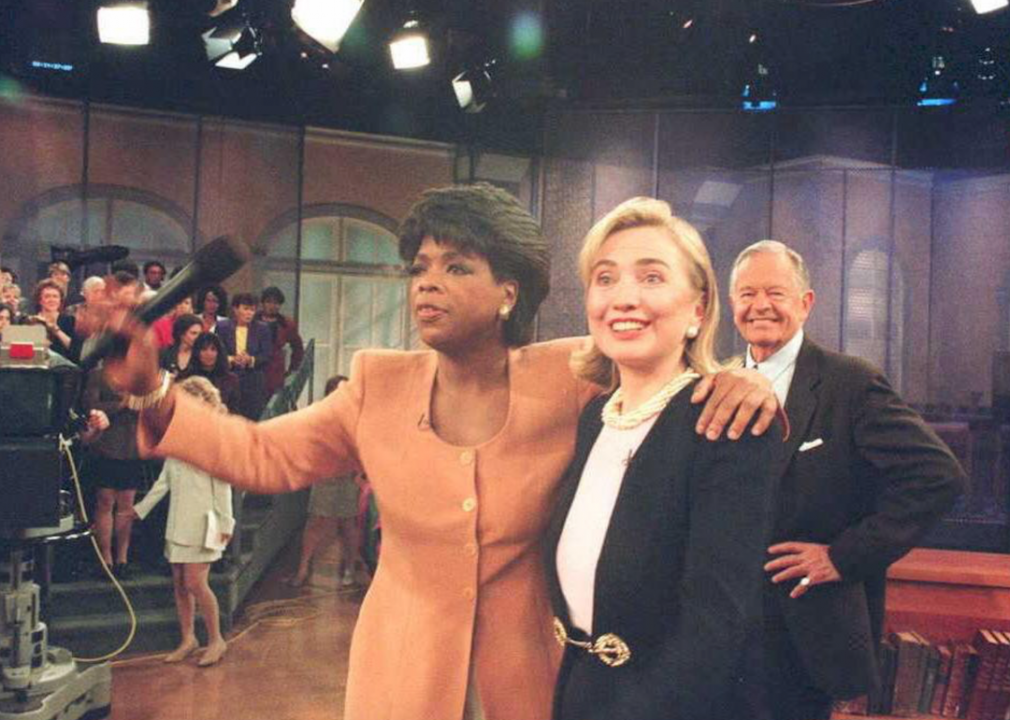
POOL/AFP // Getty Images
1986: Oprah Winfrey owns, produces her own talk show
When she was 19, Oprah Winfrey became the youngest and first Black anchor for WTVF-TV in Nashville. In 1986, Winfrey had a national syndication deal for her namesake show in Chicago. Winfrey became the first woman to own and produce her own talk show, which ran for 25 years. In 2003, the billionaire media mogul became the first Black woman on Forbes’ “World’s Richest People” list.
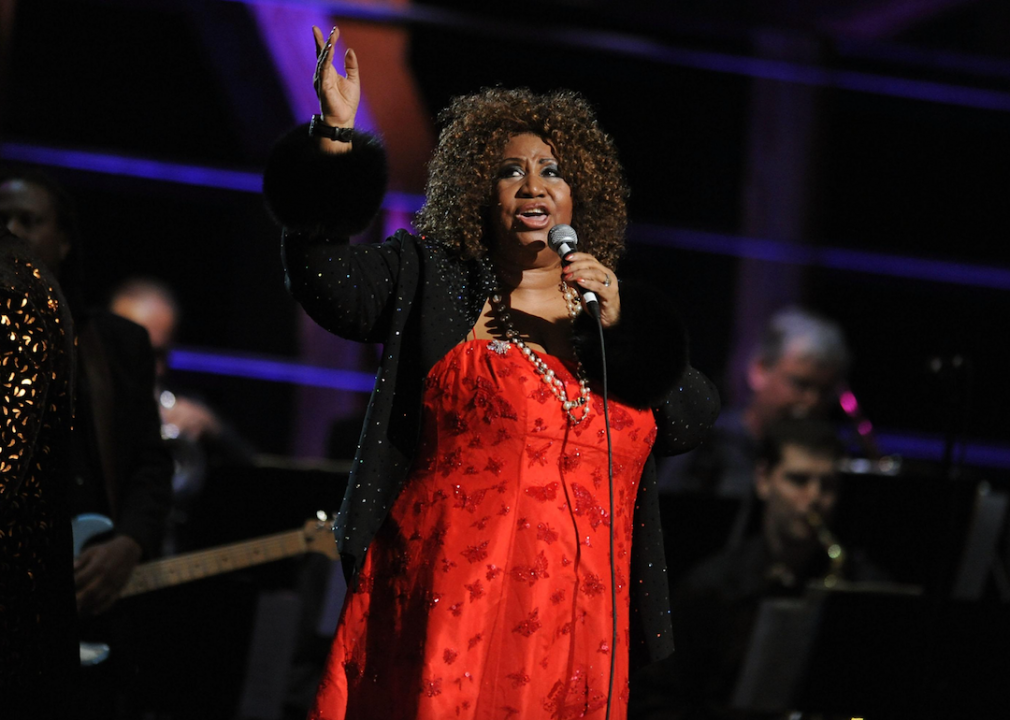
Stephen Lovekin // Getty Images
1987: Aretha Franklin elected to the Rock & Roll Hall of Fame
When the Rock & Roll Hall of Fame started in 1986, only men could be inducted. The hall honored Aretha Franklin in 1987, the first woman to receive such recognition. Many women have followed in her musical footsteps, including Etta James in 1993 and Gladys Knight in 1996.
In 1987 political firsts: Barbara Mikulski became the first woman elected to the U.S. Senate in her own right and not because a spouse had died.
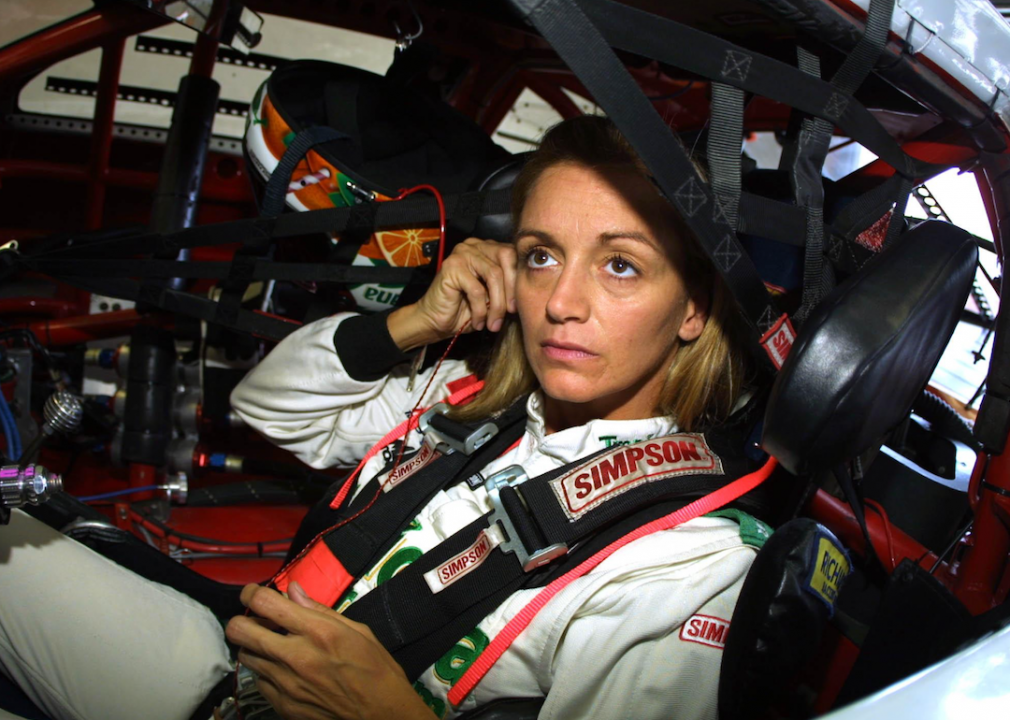
Robert Laberge/ALLSPORT // Getty Images
1988: Shawna Robinson wins NASCAR race
Iowan Shawna Robinson became the first woman to win a NASCAR-sanctioned race in 1988. In her Pontiac Sunbird, Robinson raced in the 100-lap Charlotte Daytona Dash at New Asheville Speedway. Many female drivers have entered NASCAR since then.
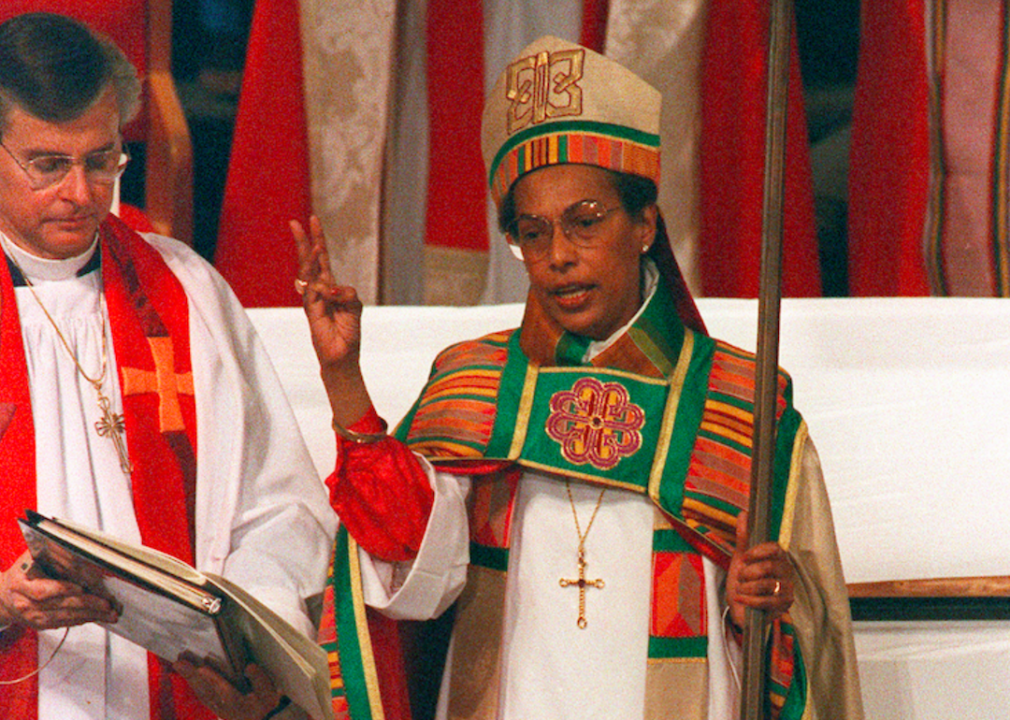
VIN/CATANIA/AFP // Getty Images
1989: Barbara Clementine Harris ordained as bishop in Episcopal Church
In 1989, Barbara Clementine Harris became the first woman ordained as a bishop in the Episcopal Church. In 1976, the Episcopal Church voted to admit women as priests, but it wasn’t until 1988 that the U.S. Episcopal Church voted to elect Harris as bishop of the Episcopal Diocese of Eastern Massachusetts.

J. DAVID AKE/AFP // Getty Images
1990: Sharon Pratt Dixon elected mayor of Washington D.C.
In 1990, Sharon Pratt Dixon was elected mayor of Washington D.C. She became the first Black woman to serve as mayor of a major U.S. city, and her policies supported Black and Hispanic business ownership.
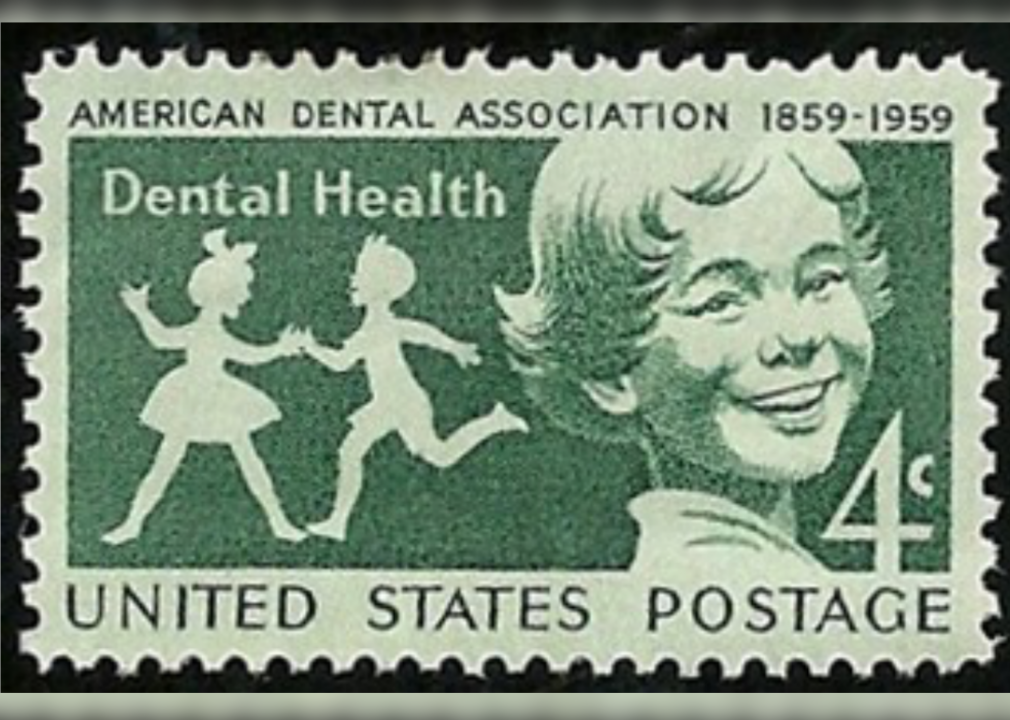
US Postal Service // Wikimedia Commons
1991: Dr. Geraldine Morrow heads the American Dental Association
Alaskan dentist Dr. Geraldine Morrow became the first woman president of the American Dental Association in 1991. She was also the first female trustee of the ADA, a term she began in 1984.
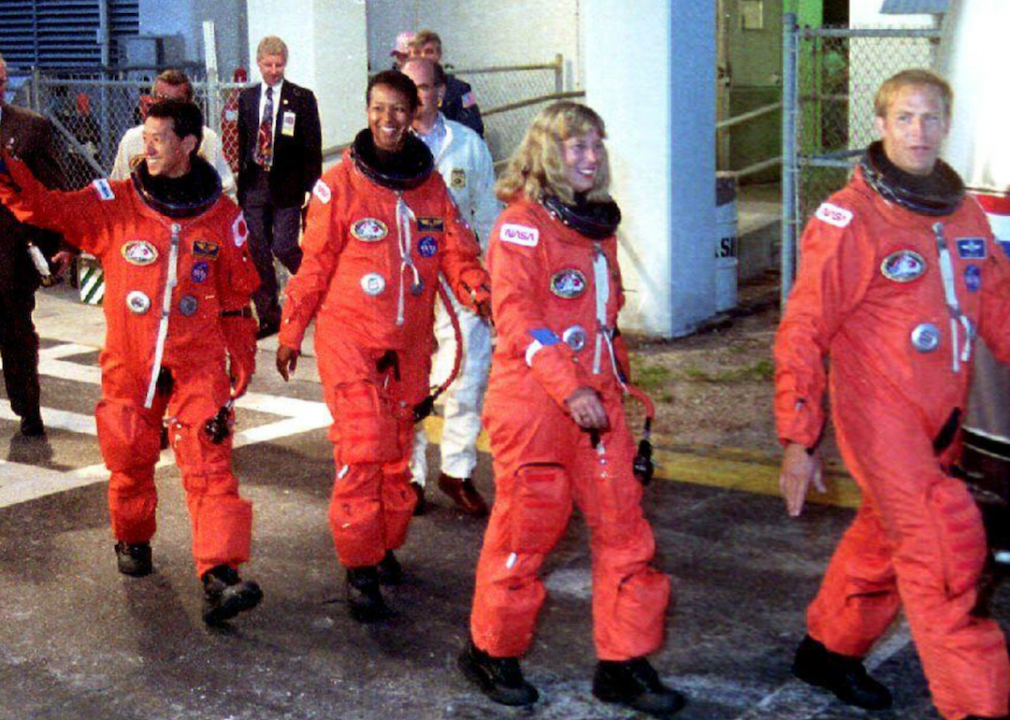
BRUCE WEAVER/AFP //Getty Images
1992: Mae Jemison travels to space
Mae Jemison became the first Black woman in space on Sept. 12, 1992. She flew on the space shuttle Endeavour along with six other astronauts. In 2017, Lego created a toy set in honor of Jemison and fellow astronaut, Sally Ride. The astronomer and educator Nancy Grace Roman and computer scientist Margaret Hamilton also were featured.
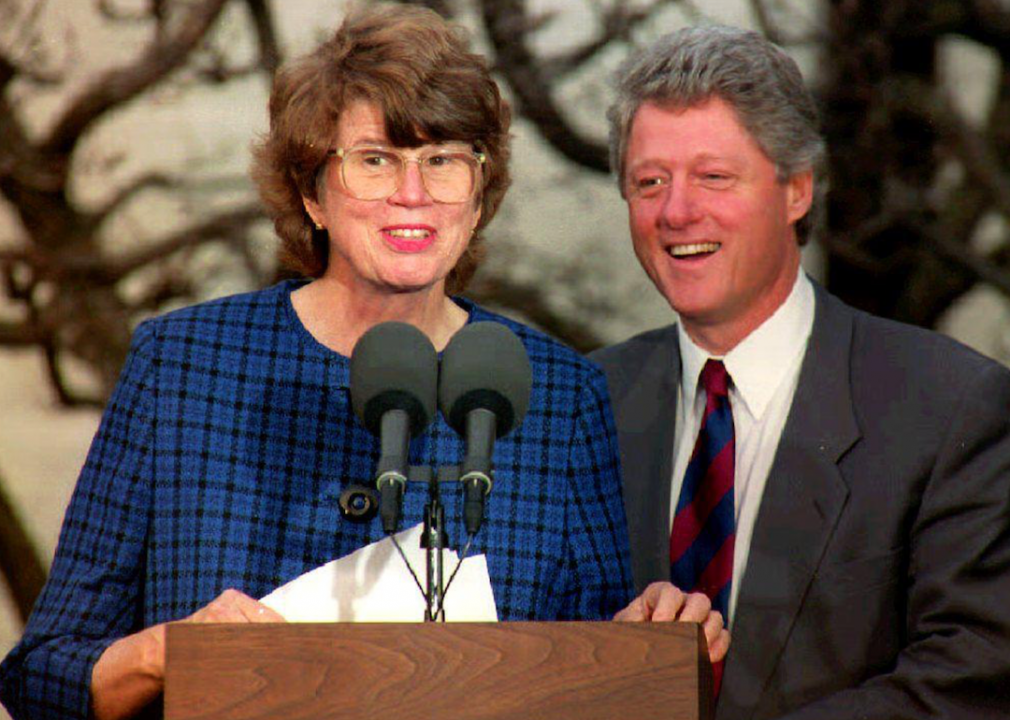
ROBERT GIROUX/AFP // Getty Images
1993: Janet Reno becomes US attorney general
In 1993, President Bill Clinton appointed Janet Reno as the U.S. attorney general, the first woman to hold the position. She became the longest-serving attorney general in the 20th century. Since Reno, only two other women—Loretta Lynch and Sally Yates—have held the job. Yates was dismissed after only 10 days when she refused to defend President Donald Trump’s controversial travel ban.
Other notable firsts of 1993: Toni Morrison became the first Black woman to win a Nobel Prize for literature and U.S. Sen. Barbara Mikulski of Maryland inspired the “Pantsuit Rebellion” when she wore pants onto the Senate floor. In 2004, First Lady Hillary Clinton became the first woman to wear pants in her official White House portrait.
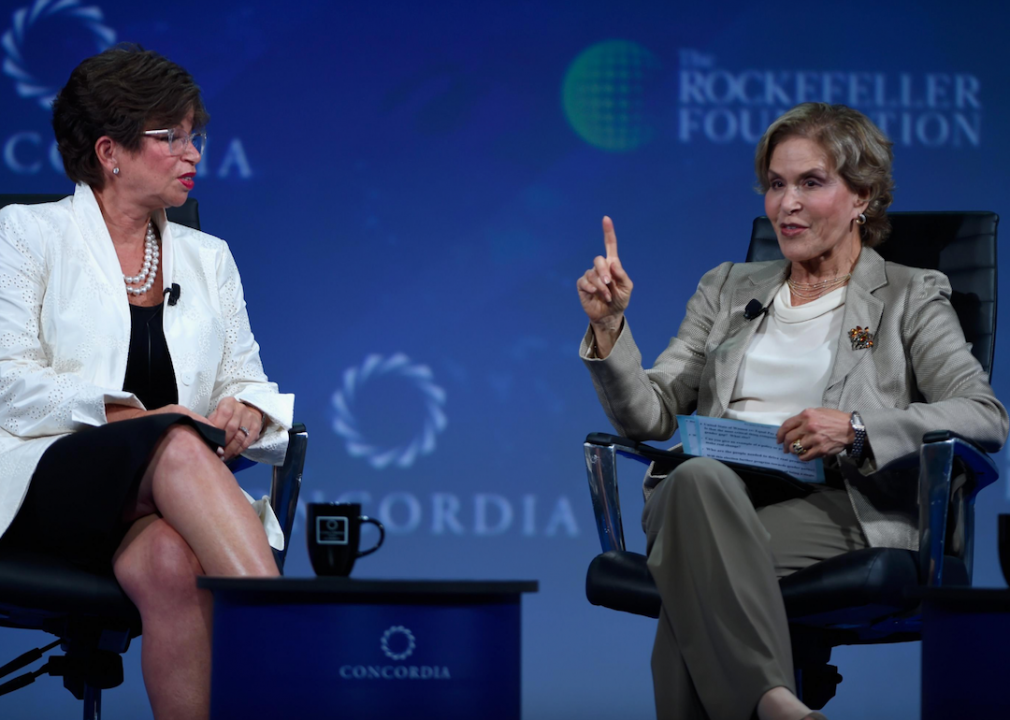
Riccardo Savi // Getty Images
1994: Judith Rodin becomes permanent president of UPenn
Judith Rodin was the first woman to become president of an Ivy League university when she was chosen to lead the University of Pennsylvania. She later became president of the Rockefeller Foundation.

Tony Webster // Wikimedia Commons
1995: Roberta Cooper Ramo becomes president of the American Bar Association
Before 1995, the American Bar Association had never had a female president. Roberta Cooper Ramo changed that when she became the first woman to lead the ABA. In the 1960s, Ramo was one of only six women in her law school class.
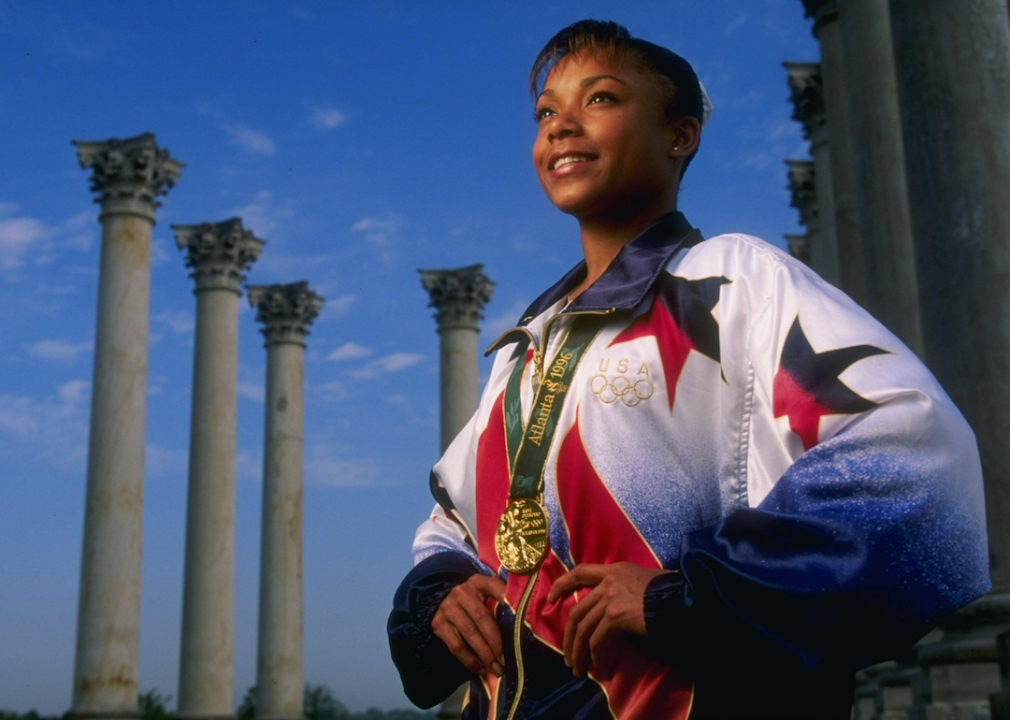
Doug Pensinger/Allsport // Getty Images
1996: Dominique Dawes wins Olympic medal in gymnastics
Dominique Dawes made history at the 1996 Centennial Olympic Games in Atlanta when she won a bronze medal, becoming the first Black person to win an individual event medal in gymnastics. Two years earlier, she was named Sportsperson of the Year by USA Gymnastics.
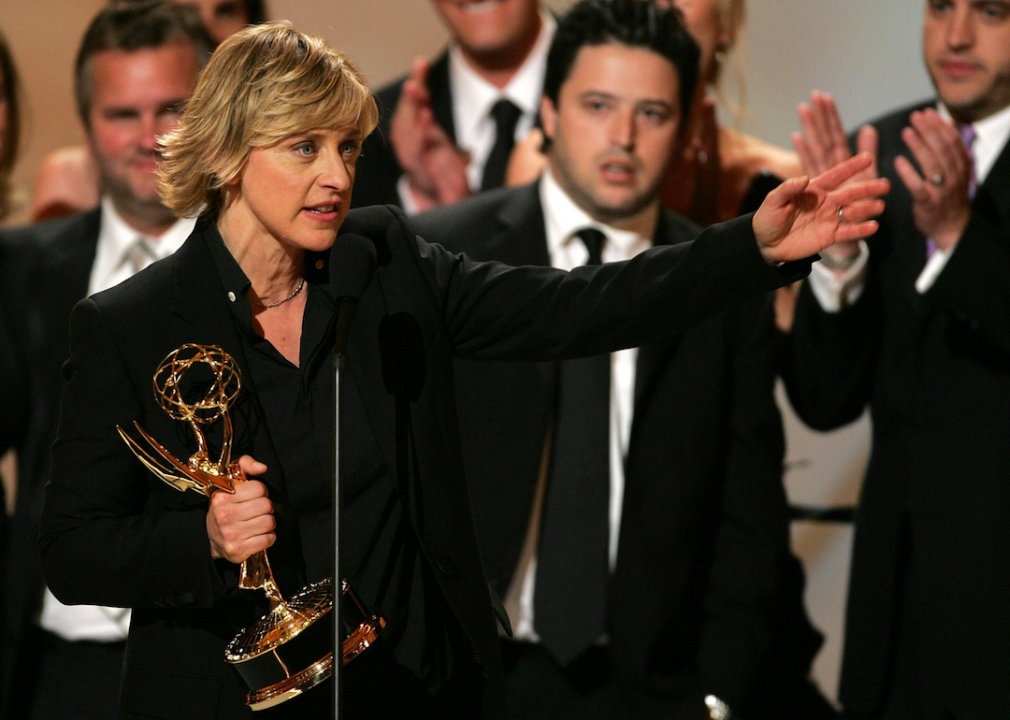
Scott Gries // Getty Images
1997: Ellen DeGeneres comes out
Ellen DeGeneres became the first openly gay television star in 1997. While her sitcom was canceled, DeGeneres has hosted her own talk show since 2003, hosted the Oscars twice, and voiced the cartoon fish Dory in “Finding Nemo.” In 2017, President Barack Obama gave her the Presidential Medal of Freedom.

J.D. Cuban/ALLSPORT // Getty Images
1998: Ila Borders pitches on pro men’s baseball team
In the summer of 1998, left-hander Ila Borders became the first woman to pitch on a professional men’s baseball team. While she came close to playing in Major League Baseball, she ultimately didn’t receive an invitation to try out at spring training. Borders wasn’t the first woman to play baseball on a professional men’s team—Toni Stone played for the Negro League’s Indianapolis Clowns in 1953—but Borders was the first to pitch and played the longest.
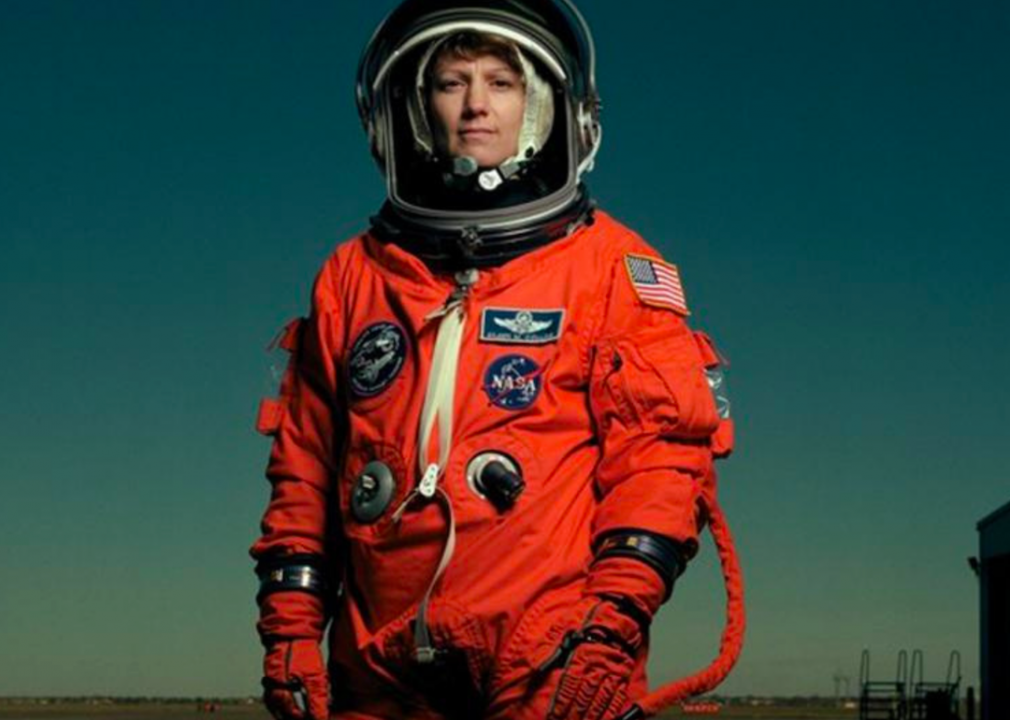
NASA on the Commons // Wikimedia Commons
1999: Lt. Col. Eileen Collins commands NASA space shuttle
In July 1999, Lt. Col. Eileen Collins became the first female astronaut to pilot and command a NASA space shuttle mission. She led the STS-93 flight of the shuttle Columbia. Pamela Melroy followed in her footsteps when she commanded the STS-120 mission of Discovery in 2007.

Canva
2000: Capt. Kathleen McGrath commands Navy warship
In 2000, Capt. Kathleen McGrath took command of a U.S. Navy warship with a 262-member crew, the first woman to do so. It was six years after Congress lifted the rules that prohibited women from serving on combat aircraft and warships. Women had served in the Navy on support vessels since 1978, but it wasn’t until 1994 that they were allowed on warships.
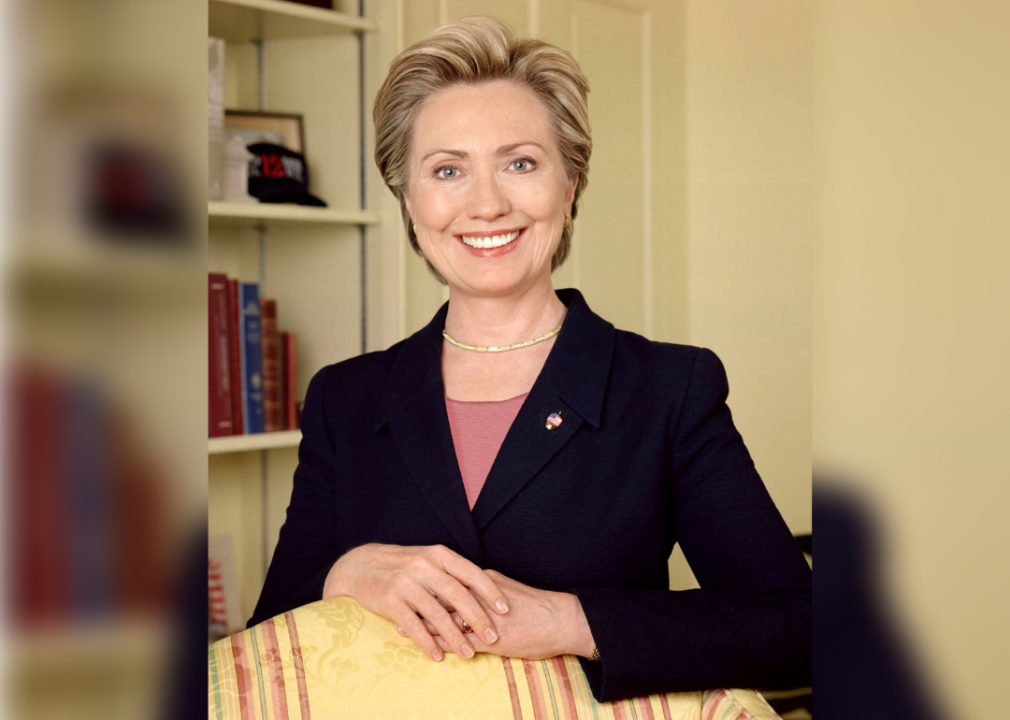
United States Senate // Wikimedia Commons
2001: Hillary Clinton elected to US Senate
Hillary Clinton was the first woman elected to the U.S. Senate from New York. She was reelected in 2006, winning 64% of the vote. Clinton later declared her candidacy for the 2008 Democratic presidential nomination, but she lost to then-U.S. Sen. Barack Obama, who chose her to be secretary of state. She secured the presidential nomination in 2016 but lost the election to Donald Trump.
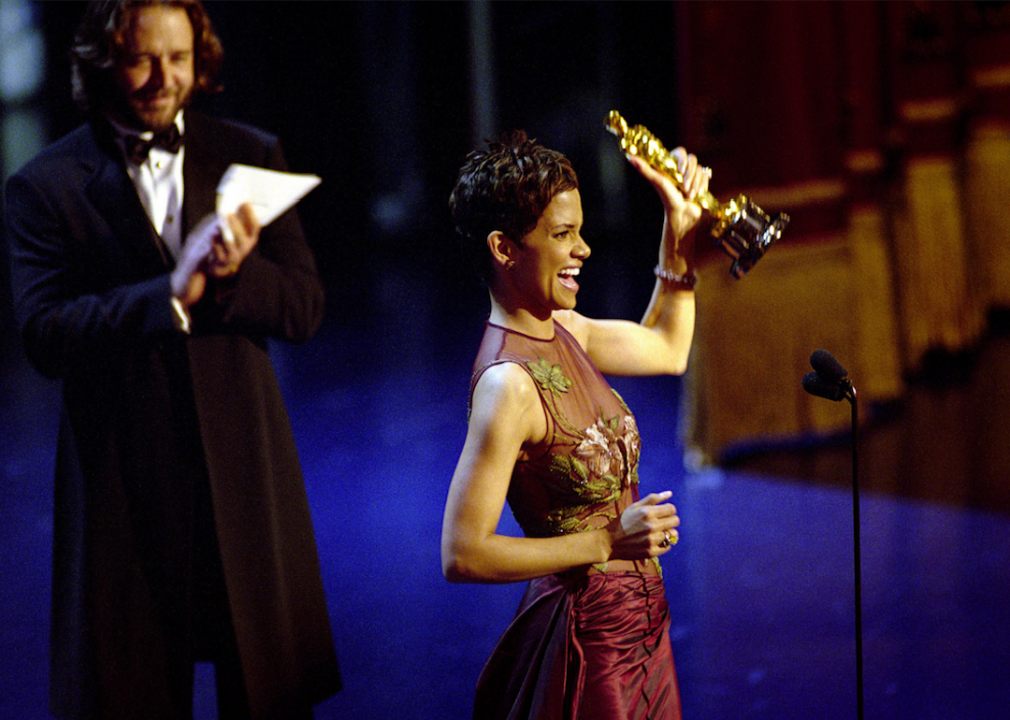
Getty Images
2002: Halle Berry wins Academy Award for Best Actress
Over 60 years after Hattie McDaniel became the first Black woman to win an Oscar, Halle Berry made history by becoming the first Black woman to win an Academy Award for Best Actress. Berry said her milestone hasn’t made much of a difference for women of color in Hollywood, an industry dominated by white men.

settlja // Flickr
2003: Teresa Phillips coaches men’s Division I college basketball
The year 2003 was major for female firsts in sports. In February, Teresa Phillips became Tennessee State’s head basketball coach, the first woman coach of a Division I men’s basketball team in NCAA history. That same month, Hayley Wickenheiser became the first woman to score in a men’s professional hockey game. In April, goaltender Ginny Capicchioni became the first woman to compete in the National Lacrosse League.
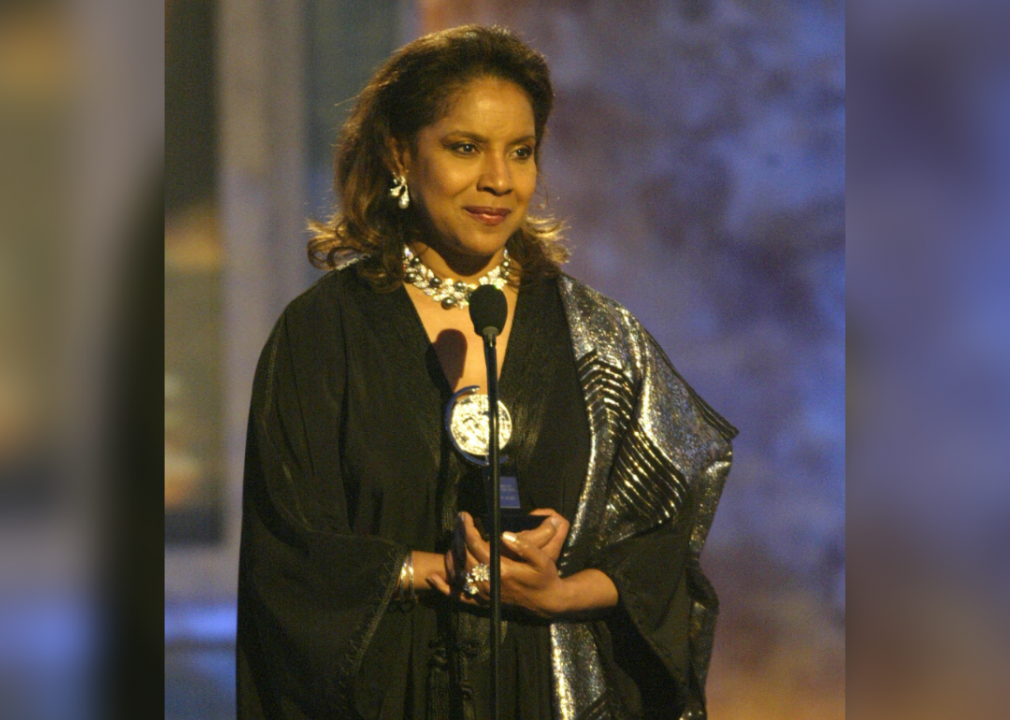
Frank Micelotta // Getty Images
2004: Phylicia Rashad takes home a Tony
Actress Phylicia Rashad made Tony Award history when she became the first Black woman to win for Best Actress in a Play. She won for her role as Lena Younger, the matriarch in Broadway’s version of “A Raisin in the Sun.”
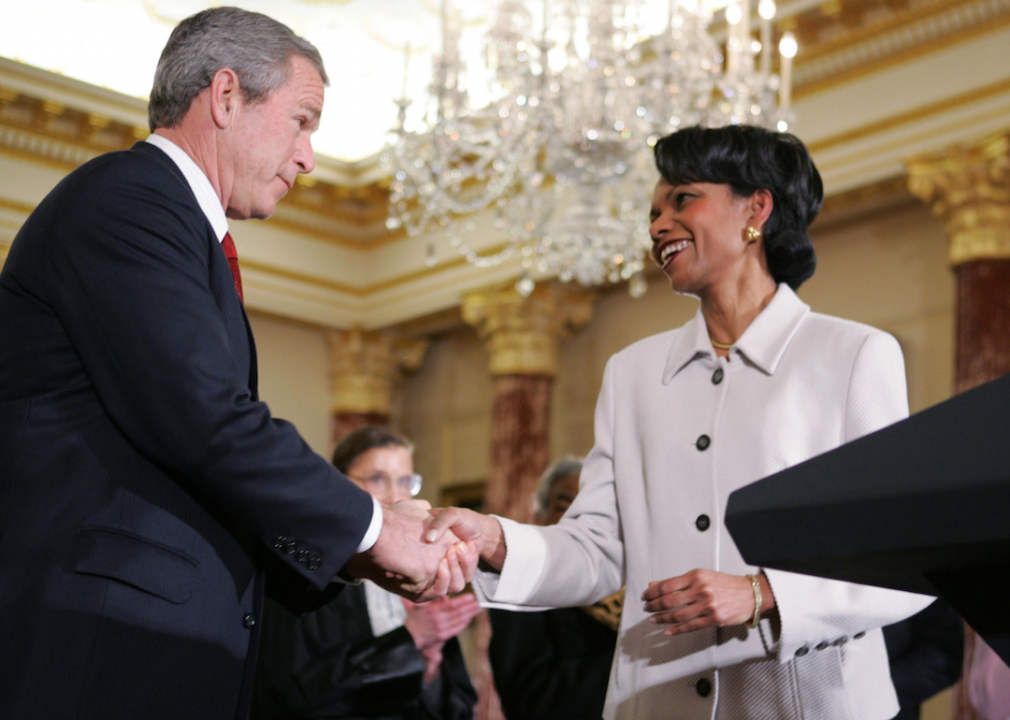
Sean Thew/Pool // Getty Images
2005: Condoleezza Rice becomes secretary of state
In 2004, President George W. Bush nominated Condoleezza Rice as secretary of state. Rice assumed the office in 2005, becoming the first Black woman to hold the job. She stayed in the position for four years before heading back to teach at Stanford University. In 1993, she was the youngest person, first woman, and the first Black person to become provost at Stanford.
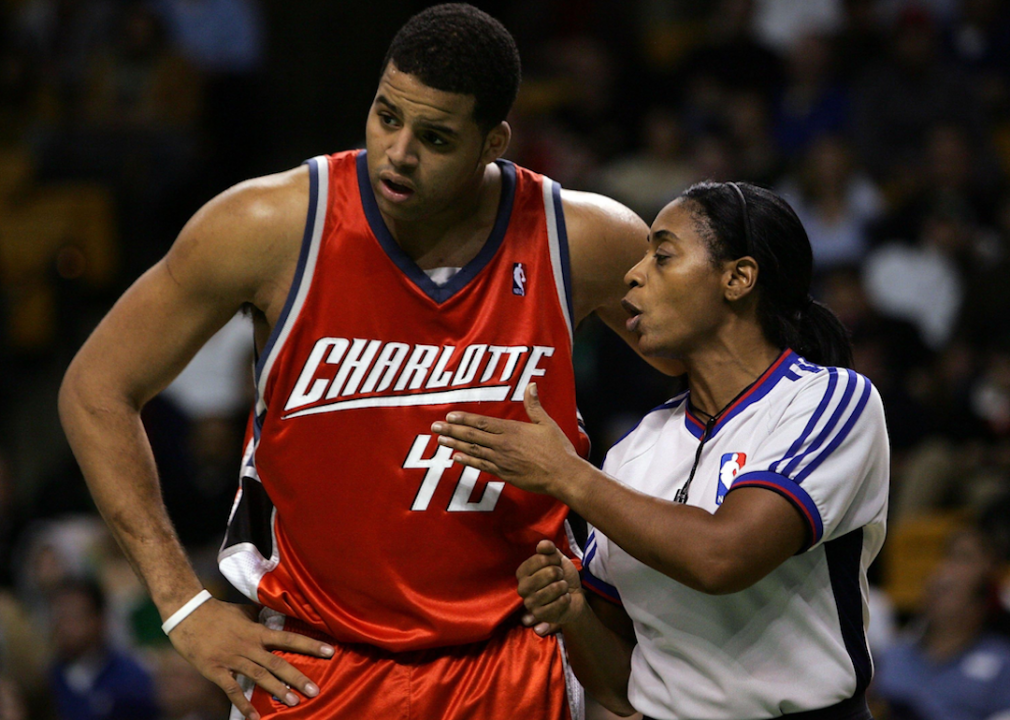
Elsa // Getty Images
2006: Violet Palmer officiates NBA game
In 2006, Violet Palmer became the first woman to officiate an NBA game. She spent 18 seasons on the court. In 2018, Danielle Scott and Angelica Suffren followed in her footsteps, marking the first time two Black women refereed an NBA game at the same time.

Chip Somodevilla // Getty Images
2007: Nancy Pelosi elected speaker of the House
Nancy Pelosi joined Congress in 1987. Thirty years later, she became the first woman elected by her peers to be the speaker of the House of Representatives. In 2019, Pelosi reclaimed the position.
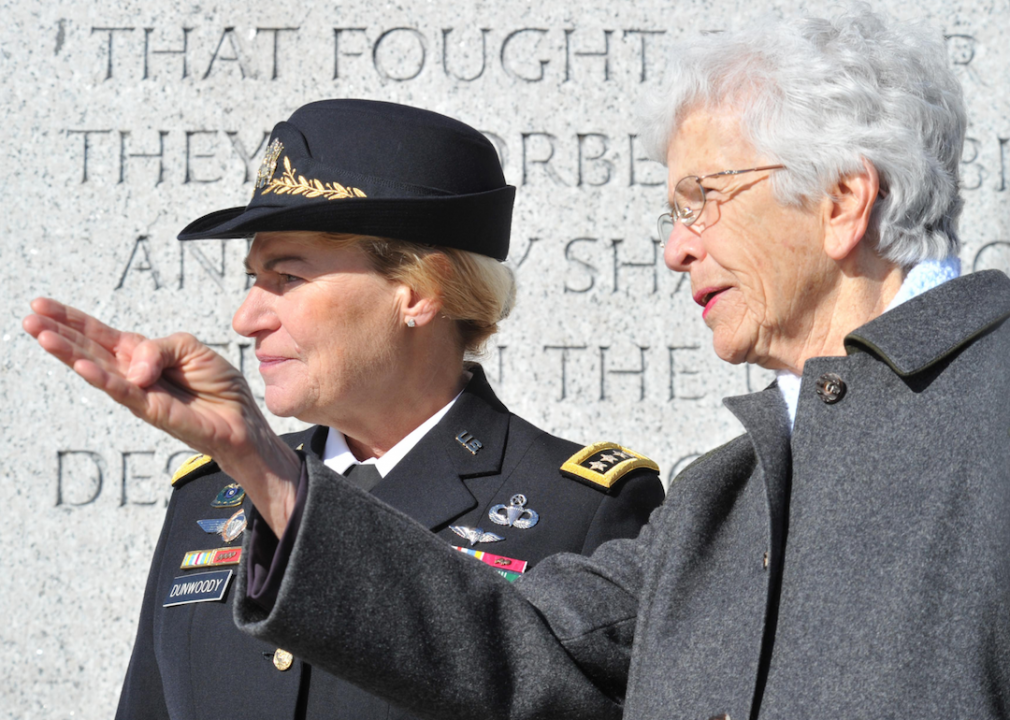
KAREN BLEIER/AFP // Getty Images
2008: Gen. Ann E. Dunwoody becomes four-star general
Gen. Ann E. Dunwoody became a four-star general in 2008, the first woman to hold the rank in the U.S. armed forces. Dunwoody said she never worked for a woman, but that many of her male superiors served as advocates throughout her career. She retired in 2012.
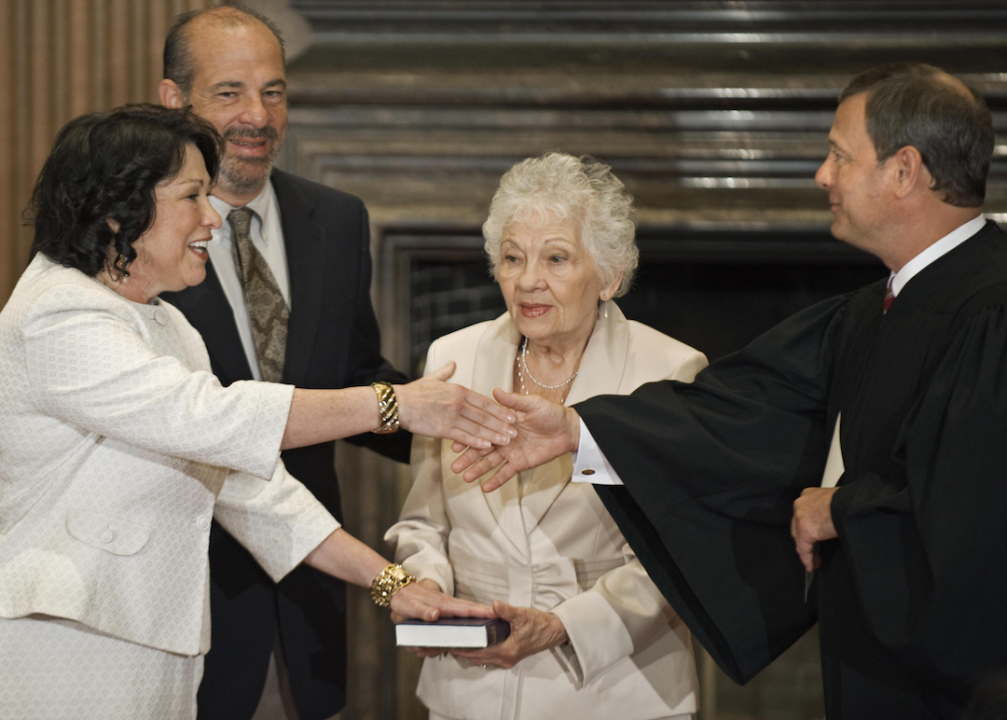
PAUL J. RICHARDS/AFP // Getty Images
2009: Sonia Sotomayor takes her seat on the Supreme Court
In 2009, Sonia Sotomayor became the first Hispanic associate justice—and third woman—to sit on the U.S. Supreme Court. Sotomayor had already made history when she became the first Hispanic federal judge in New York.
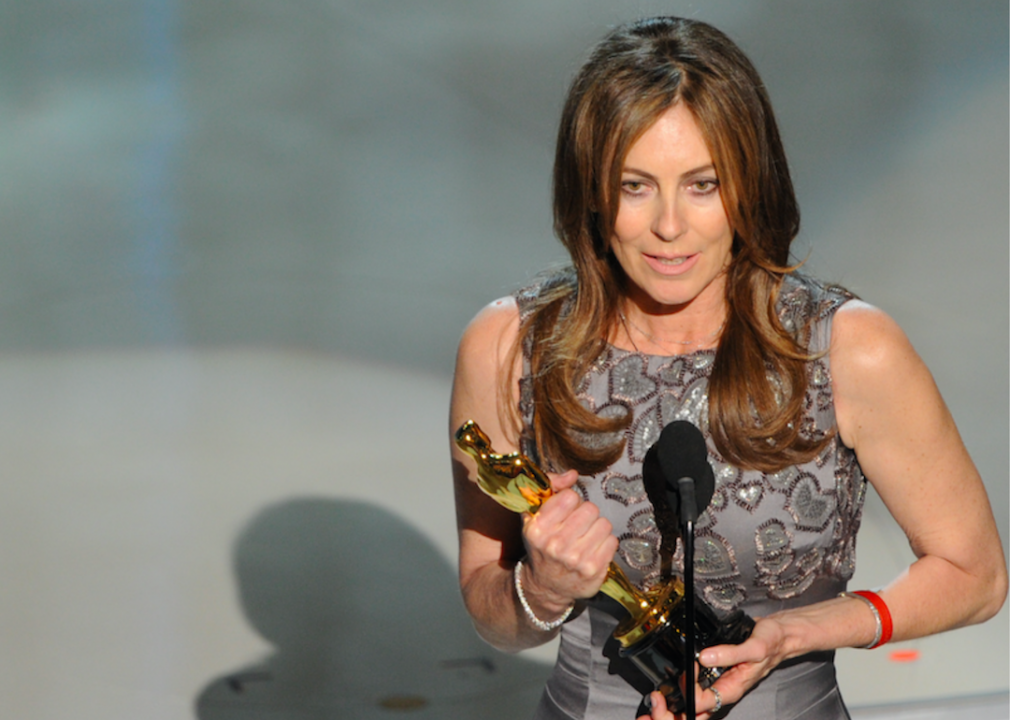
GABRIEL BOUYS/AFP // Getty Images
2010: Kathryn Bigelow wins Oscar for Best Director
In 2010, Kathryn Bigelow became the first woman to win an Academy Award for Best Director for “The Hurt Locker,” defeating her ex-husband, James Cameron, who was up for the same award for “Avatar.” While Hollywood movies are still mostly made by white men, the percentage of female directors doubled between 2013 and 2018.
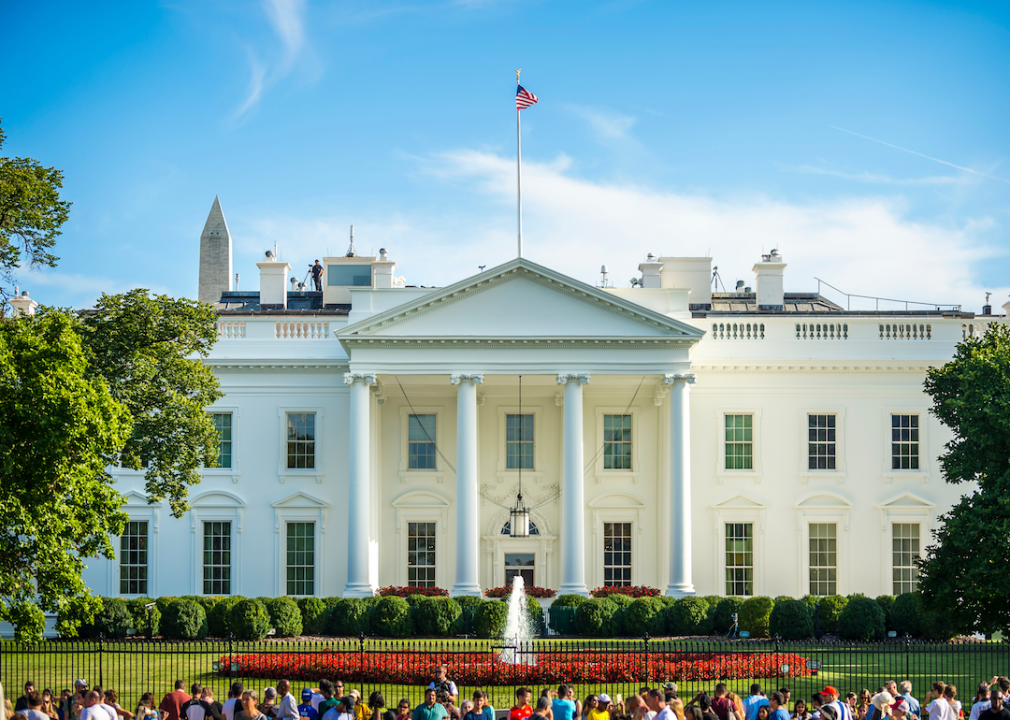
lazyllama // Shutterstock
2011: Angella Reid becomes White House usher
Under President Barack Obama, Angella Reid became the first woman—and second Black person—to work as a White House usher, a job that entails working closely with the first family and overseeing all activities in the White House residence. Reid lost the position in 2017 when the Trump administration decided not to keep her on.
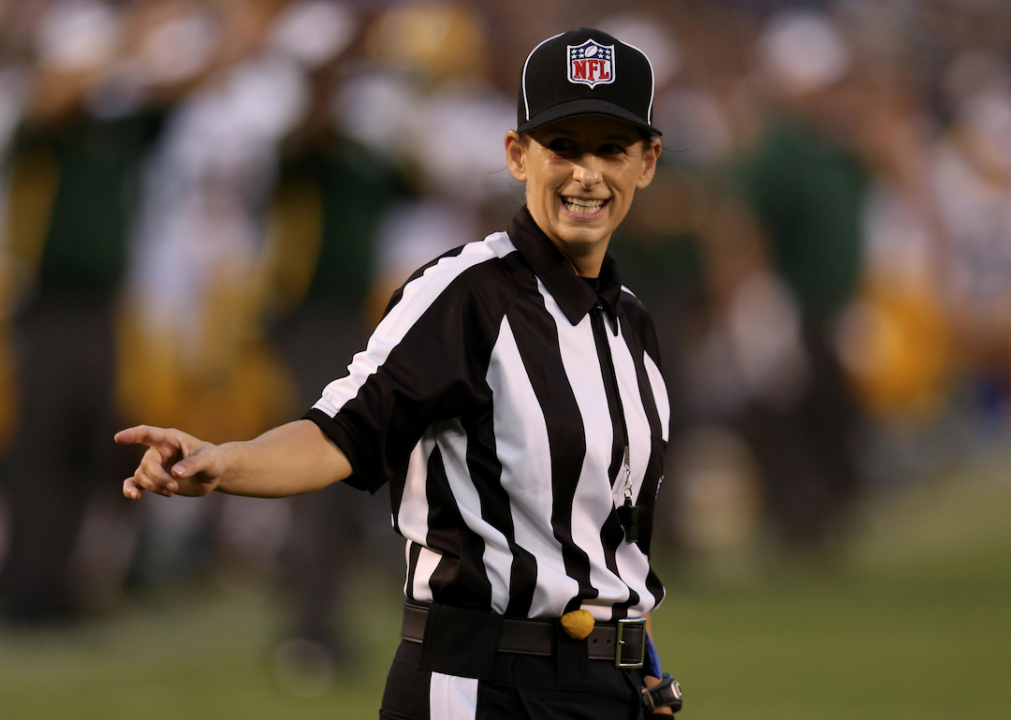
Stephen Dunn // Getty Images
2012: Shannon Eastin officiates NFL game
In August 2012, Shannon Eastin became the first woman to officiate an NFL game when she served as the line judge at the preseason opener between the Green Bay Packers and San Diego Chargers. Eastin got the NFL opportunity when she was chosen as a replacement official during a time when the regular refs were locked out.
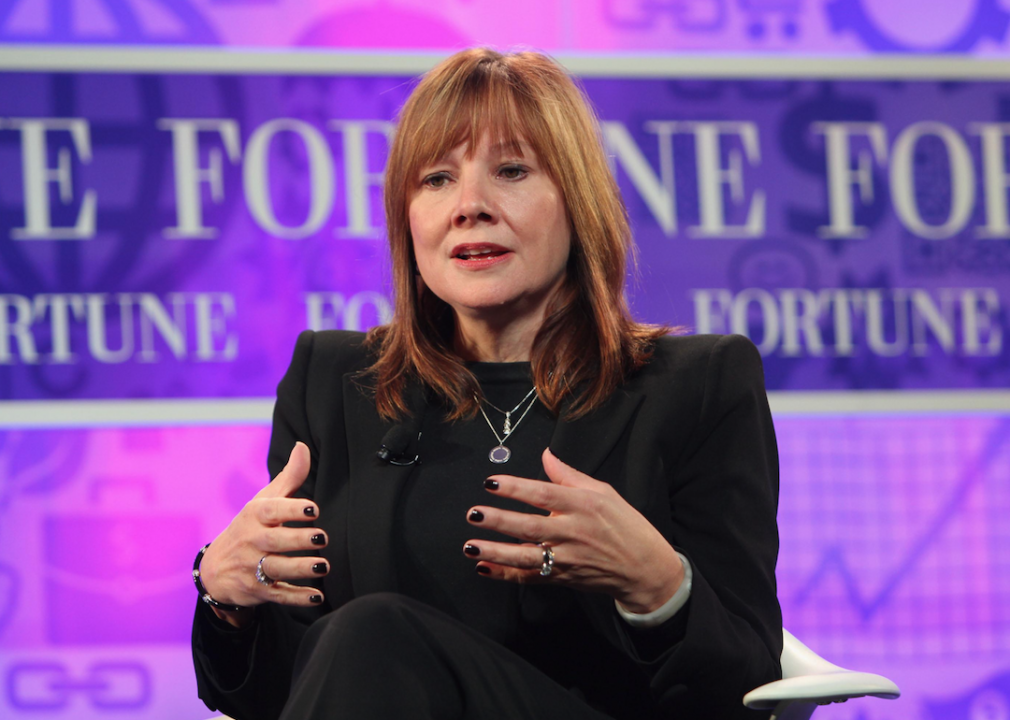
Paul Morigi // Getty Images
2013: Mary Barra becomes CEO of GM
In an auto industry female first, General Motors named Mary Barra the company’s chief executive officer in 2013. Barra’s appointment came after a slew of male-dominated companies had put women in the top spot. In 2012, Marissa Mayer became CEO and president of Yahoo. Also in 2013, Marillyn Hewson became president and CEO of the defense contractor Lockheed Martin.

Rob Carr // Getty Images
2014: Mo’ne Davis pitches Little League shutout
Mo’ne Davis started playing baseball as a kid. At 13, while playing for Philadelphia’s Taney Youth Baseball Association, she became the first girl to pitch a shutout and win a game in the Little League World Series. When she graduated from high school in 2019, Davis headed to Hampton University in Virginia to play softball, telling the New York Times that she chose a predominately Black college so she could play with girls “who look like me or who grew up kind of the same way I grew up.”
In other 2014 firsts: Janet Yellen became the first woman to chair the Federal Reserve in its 100-year history. She held the position until Feb. 3, 2018. In January 2021, Yellen was sworn in as the U.S. secretary of the treasury.
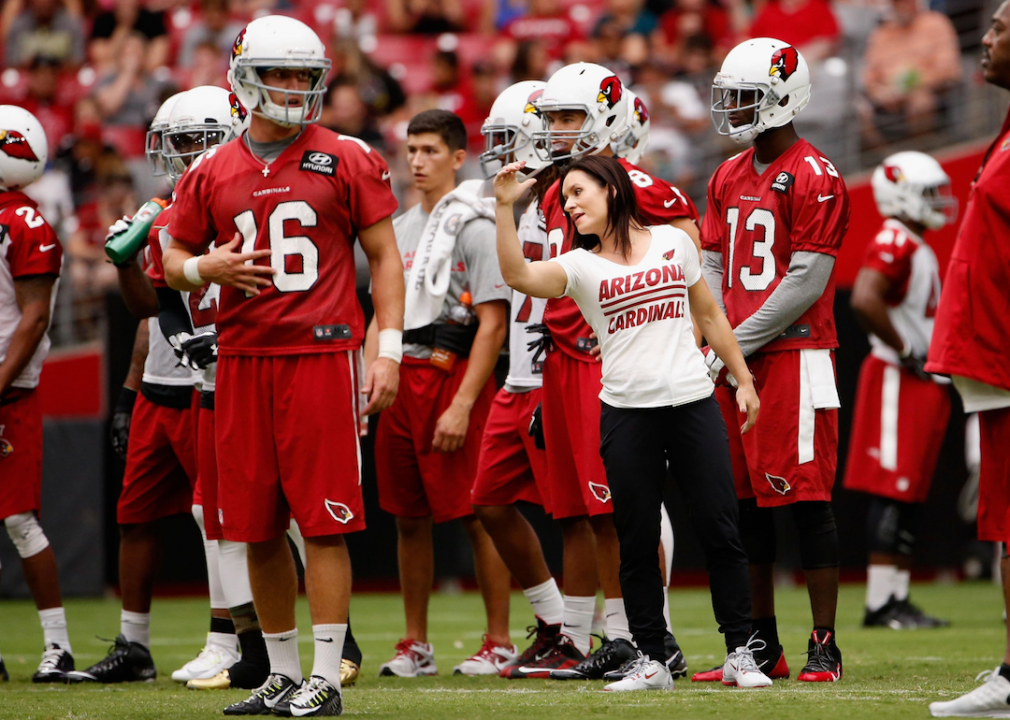
Christian Petersen // Getty Images
2015: Jen Welter becomes NFL coach
Jen Welter made history in 2015 when she became a coach for the Arizona Cardinals. She was the first woman to hold such a position in the NFL. Welter earned a doctorate in psychology and played football in the women’s league for 15 years.
Also in 2015, two women—Capt. Kristen Griest and 1st Lt. Shaye Haver—were the first female soldiers to finish U.S. Army Ranger School.
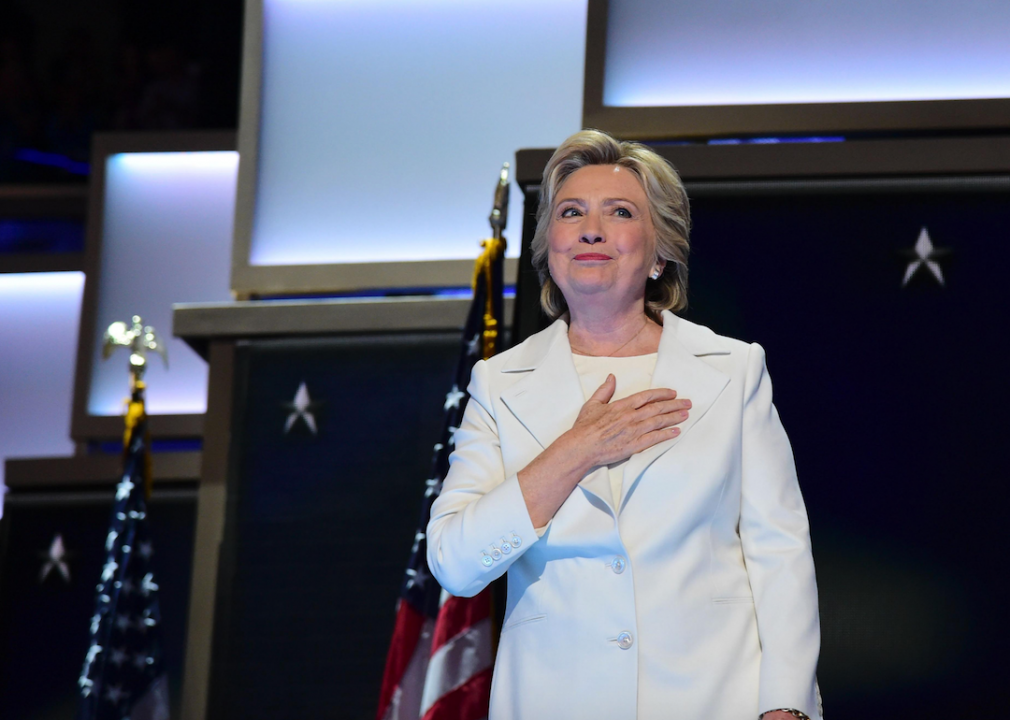
ROBYN BECK/AFP // Getty Images
2016: Hillary Clinton wins Democratic nomination for US president
In 2016, Hillary Clinton—a former first lady, U.S. senator, and secretary of state—was the first woman to win a major party’s nomination for president. While Clinton, a Democrat, didn’t win the election, she helped encourage a female presidential nominee.
Also in 2016, Ava DuVernay became the first Black woman to direct a film, “A Wrinkle In Time,” with a budget over $100 million.
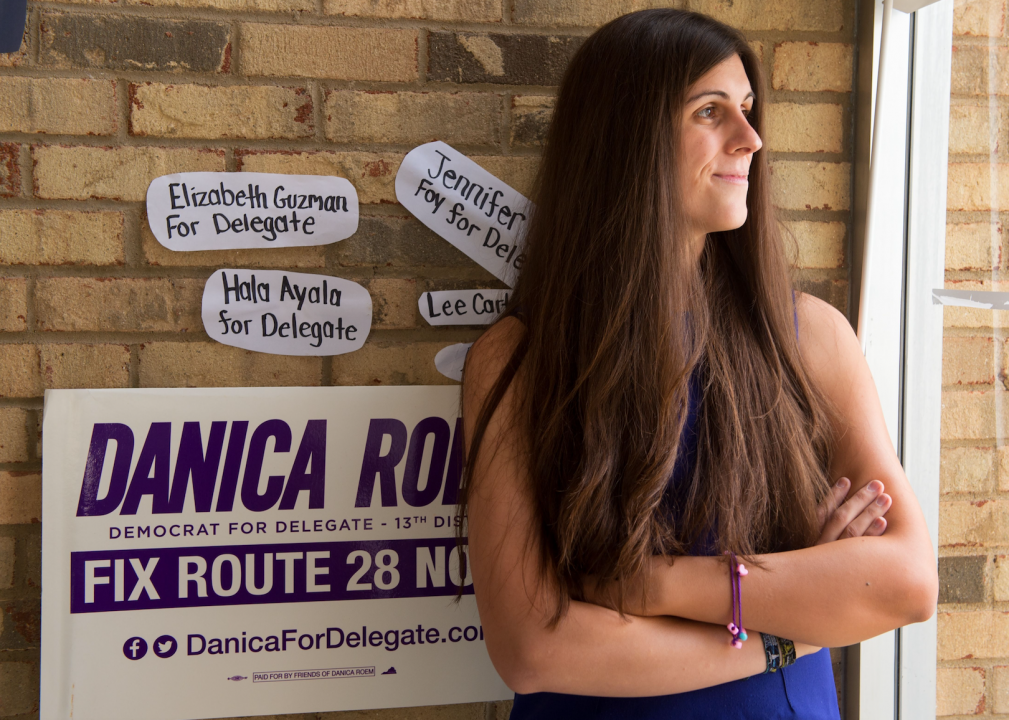
PAUL J. RICHARDS/AFP // Getty Images
2017: Danica Roem is elected to US legislature
Democrat Danica Roem became the first openly transgender person to be elected to a U.S. state legislature. She defeated Republican Bob Marshall, who had crafted anti-trans legislation. In entertainment news, Lena Waithe became the first Black woman to win an Emmy for comedy writing.
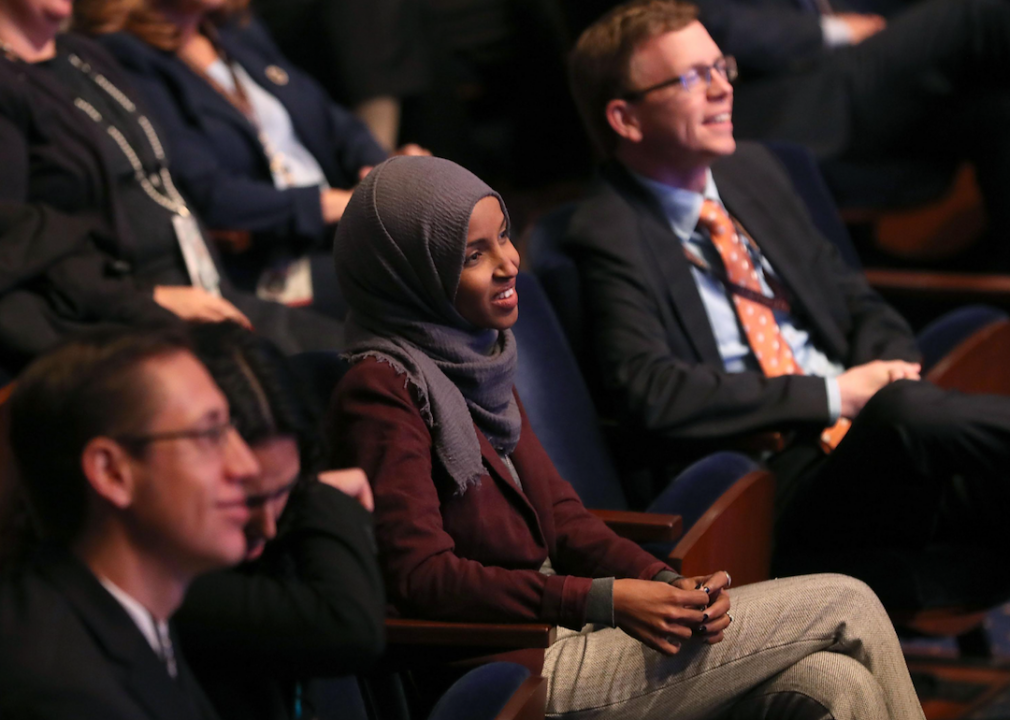
Mark Wilson // Getty Images
2018: First Muslim women elected to Congress
In 2018, more women ran for governor, the U.S. House of Representatives, and the U.S. Senate than at any other time in history. Among the history-making 90 women heading to the House, there were more than a few firsts. While Democrats Ilhan Omar and Rashida Tlaib became the first Muslim women elected to Congress, 29-year-old Alexandria Ocasio-Cortez became the youngest woman ever elected to the House.
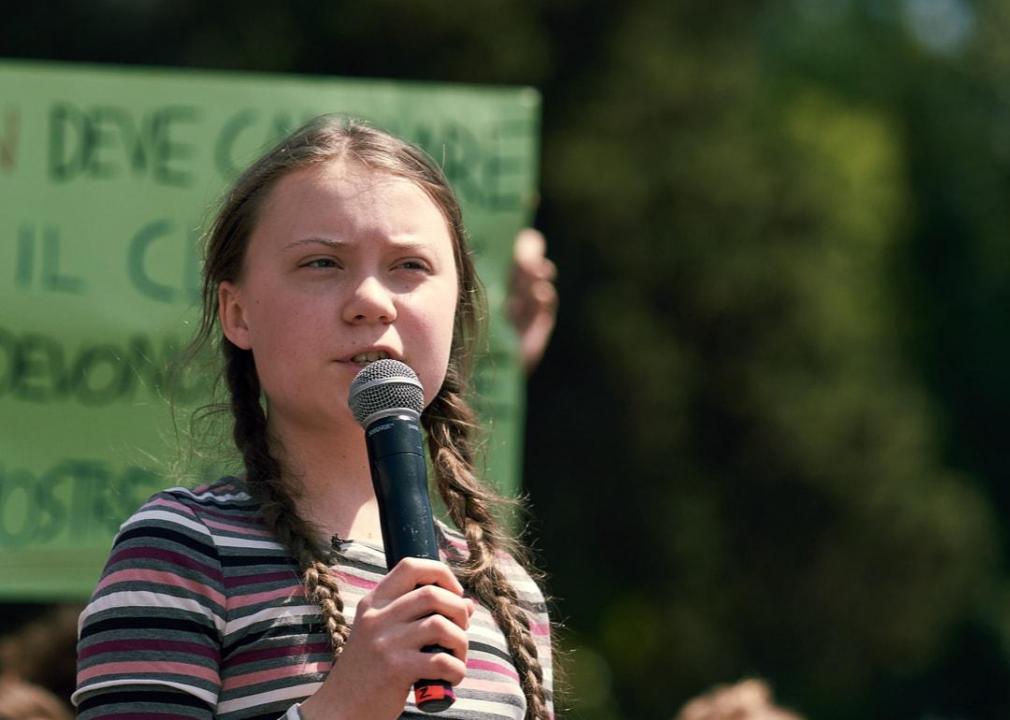
Shutterstock
2019: Greta Thunberg became the face of climate-change activism
Swedish 16-year-old Greta Thunberg took up the mantle of leadership of climate activism in 2018 when she began protesting in her native Sweden and throughout Europe. In 2019, the activist set sail for New York to bring her message to climate summits in North America.
Also in 2019, an assistant professor at the California Institute of Technology, Katie Bouman, became the first person to photograph a black hole.

Jan Hetfleisch // Getty Images
2020: Kathrin Jansen leads development of Pfizer vaccine
Kathrin Jansen, Pfizer’s senior vice president and head of vaccine research, had a sense back in January 2020 of just how bad the COVID-19 outbreak could become. She was right, and found herself leading the charge of more than 700 researchers to develop a vaccine. Pfizer and Moderna both launched clinical trials of their respective vaccines on July 27; Pfizer was approved for emergency authorization Dec. 11; and Moderna followed close behind on Dec. 18.
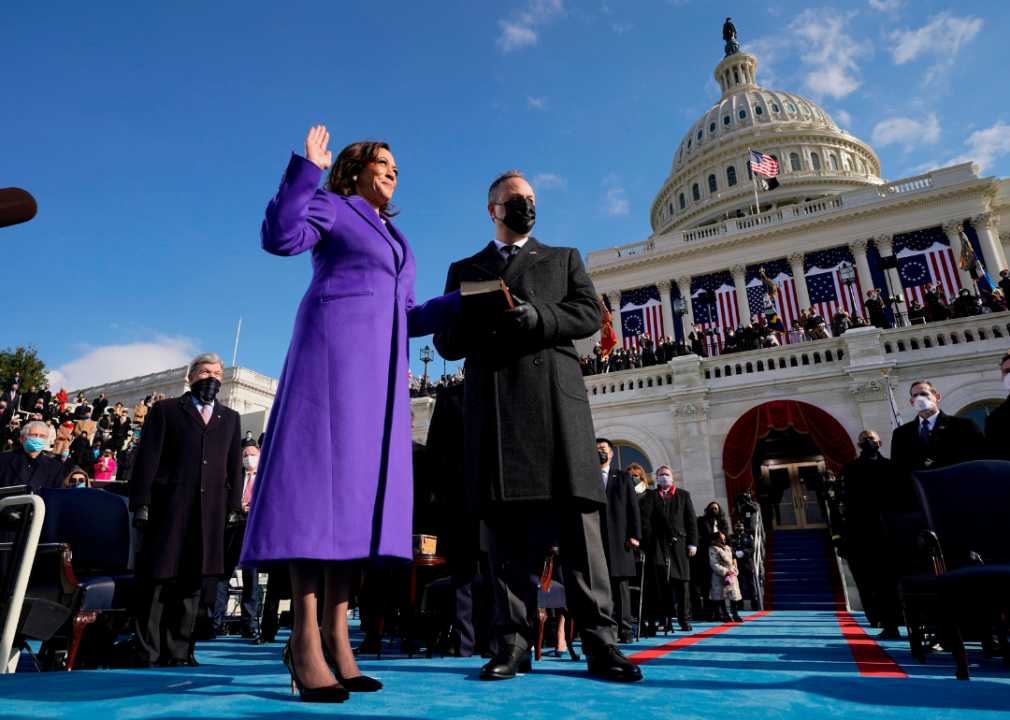
ANDREW HARNIK/POOL/AFP via Getty Images
2021: Kamala Harris sworn in as first woman VP
On Jan. 20, 2021, Kamala Harris was sworn in as the first woman, first Asian American, and first Black vice president of the United States. She formerly served as district attorney of San Francisco, California’s attorney general, and a U.S. senator.





